
Vini d,Italia 2023 The Great Beauty WINE TRAVEL FOOD year 24 - number 157 - november-december 2022 - gamberorosso.it ANTEPRIMA PREVIEWS BERSANO VERTICAL WINE SHOWS IN TOKYO AND SEOUL GENNARO DI PACE’S RECIPES
Editorial News
The Wine to Buy

Seasonal Cocktail Goal: Japan and Korea. Italy is back in the Far East Italian bartenders conquer Dubai, the capital of opportunity


Vini d’Italia 2023 draws the new map of the best wine makers


A the roots of Piemonte wine: Monferrato di Bersano, a century lived in the vineyard
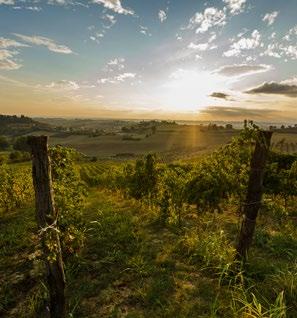
The era of Epokale: from a great classic, a special gewürztraminer
Chef’s Recipes: Gennaro di Pace

Anteprima Previews of Vini d’Italia 2023. 38 labels tasted in 25 wine bars

D’ITALIA 2023 DRAWS THE NEW
INI 5 6 12 14 18 38 62 S OM MA R I O Vini d,Italia 2023 The Great Beauty WINE TRAVEL FOOD year 24 number 157 november-december 2022 - gamberorosso.it ANTEPRIMA PREVIEWS BERSANO VERTICAL WINE SHOWS IN TOKYO AND SEOUL GENNARO DI PACE’S RECIPES
80 98 108 118
INI 108 80 98 62 38 18
anni di tradizione veneta
10 100
anni in legno pregiato esclusiva grappa riserva
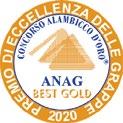
distillerianegroni.com
L’esclusività della Grappa Riserva 10 anni è unica e inconfondibile. Nata in occasione dei 100 anni di attività della Distilleria Negroni profuma di lentezza, di storia, di dedizione, una pregiata qualità senza tempo.

1
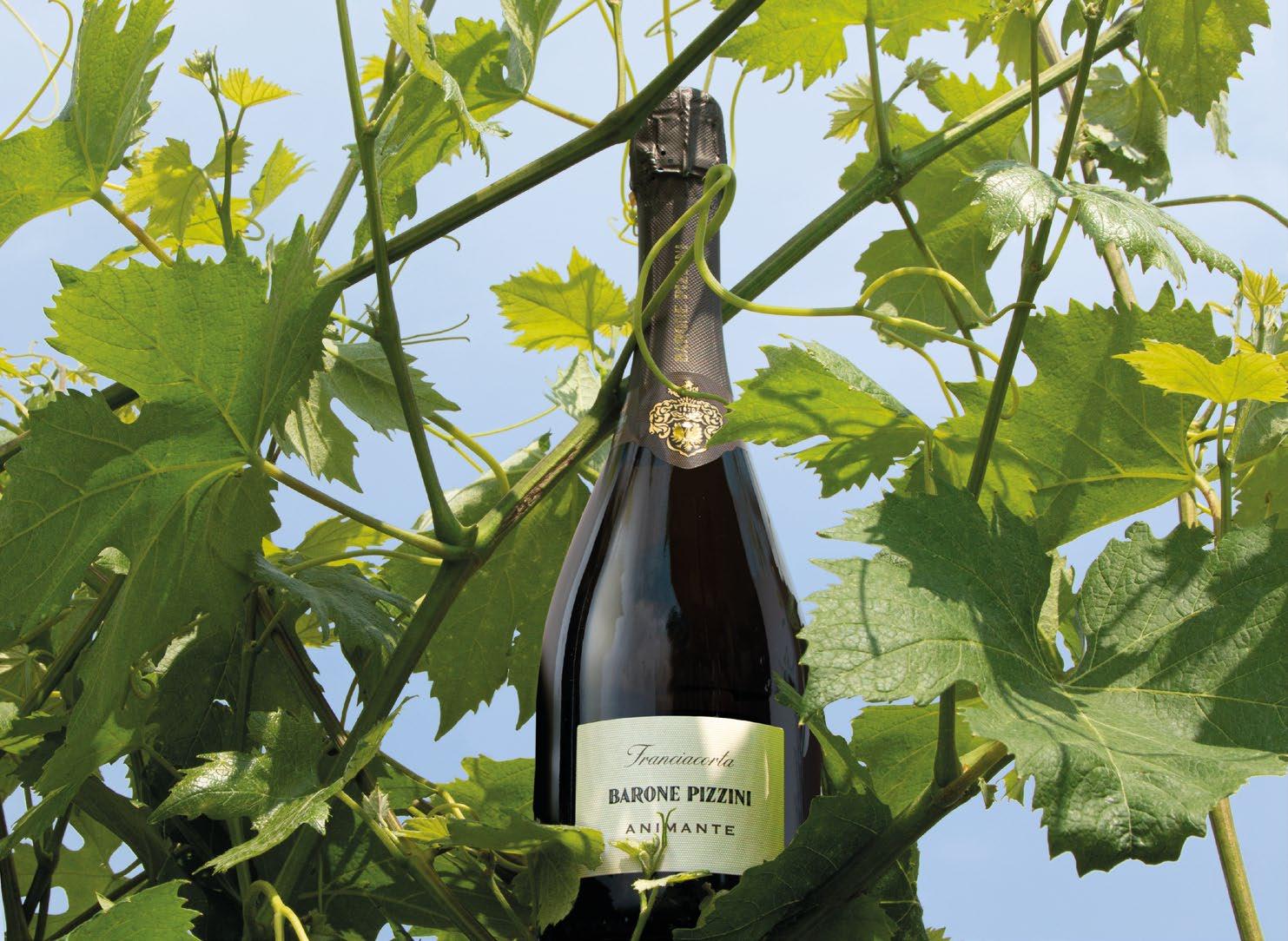
Gambero guides: the value of talent

Gambero Rosso was founded, as you well know, to recognise the talent, the quality of the products and the selection of the best of the best in order to promote wine and food and wine excellence in Italy and abroad.
As usual, on the occasion of the presentation of the 36th edition of the Vini d’Italia guide, we asked ourselves about the economic, social and distribution context in which producers operate and we did so with important players in the economic and ser vice world.
In summary, the message we received from Stefania Trenti, Head of Industry Research, Intesa San paolo studies and research department, was a polarisation of wealth and spending power, a serious trend for our country and more generally for Western democracies, which clearly can only affect the consumption of lower quality wines and hopefully favour the Tre Bicchieri. Another important contribution came from Nielsen, where the Commercial Director Marco Paoletti illustrated that, almost as a result, the most receptive channels are confirmed to be on the one hand international promotion and both in Italy and abroad, and on the other quality dining.
Gambero Rosso has always characterised its operations at the service of production excellence to wards the best national restaurants, with the authoritative guide Restaurants 2023 that has just been published, as well as international restaurants with the Top Italian Restaurants guide avail able on our premium website. Our multimedia and multi-channel platform constantly tackles these issues, on our social net works, in our media and with a robust national and international events plan.
Excellence for Gambero Rosso is not elitism. Proof of this is the range of guides, unique on the Ital ian scene, which covers all segments of dining, including street food. In the coming months Top Italian Food will also be presented, featuring the best products also present in the large-scale retail trade, and Berebene, the guide that indicates quality wines at affordable prices. There is little space left to describe the other interesting travel content and products in this issue that I invite you to read.
5 GAMBERO ROSSO SEPTEMBER-OCTOBER 2022
Paolo Cuccia
How much is food & wine tourism worth in Italy?
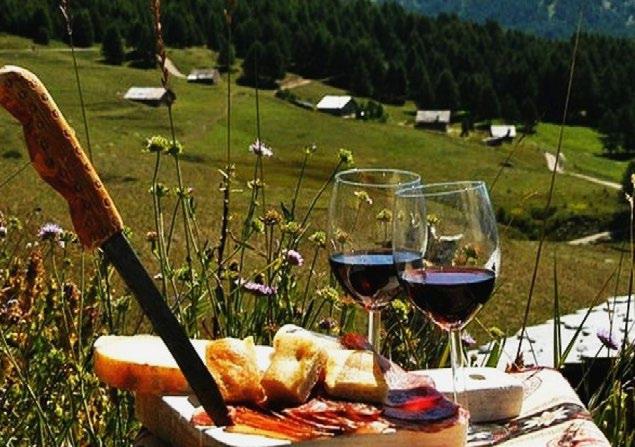
After a period of understandable (and obligatory) stagnation, food and wine tourism in Italy has returned to pre-pandemic levels, recording over 5 billion euros of induced activities, of which half relating to the wine sector and, specifically, to vineyard visits. This is the data collected by Coldiretti in the report drawn up in the last quarter of 2022, according to which as many as 58% of Italians choose to visit oil mills, creameries, wineries, farms, agriturismo farm houses or farmers’ markets during their holidays. Plus, for 17% of them, food guides the choice of travel des tination; and only 4% of those inter viewed declared that they were total ly indifferent to the question. Italy once again confirms itself as the world leader in food and wine tour ism, with a local offer counting on a network of 25,000 farmhouses and
10,000 farm-to-table farmers with Campagna Amica, as well as numer ous enhancement initiatives, from festivals to road itineraries of wine,
A chef at the museum. The portrait of José Andrés in the Smithsonian’s collection in Washington
The Smithsonian’s National Portrait Gallery was created in Washing ton D.C. in 1962 with the idea of paying homage to “poets, presidents, visionaries, actors and activists” who with their work have made a contribution to the history of the United States. Since 2015, with the idea of updating its collection, the museum has commissioned the creation of new portraits through an annual award - the Portrait of a Nation Award - which identifies, in every sector of society, those who have distinguished themselves in promoting scientific or cultural evolution of the country and in helping the community. And this is how, for the first time, even the portrait of a cook enters the Smithso nian’s gallery, in the company of Dr. Anthony Fauci and tennis stars Serena and Venus Williams. The chef in question is José Andrés, in the past even a candidate for the Nobel Peace Prize for his efforts in establishing and implementing the solidarity network of the World Central Kitchen. The Spanish-born chef, who started his American career in the city of Washington, was portrayed by Californian artist Kadir Nelson in a piece entitled José Andrés and the Olla de Barro that Feeds the World, which will be on display among the new acqui sitions of the museum until October 2023. The work represents An drés and his team bringing food to the most extreme situations.

6 GAMBERO ROSSO NEWS NOVEMBER-DECEMBER 2022
olive oil and the many regional spe cialties of Italy, equally of great inter est to foreign travelers visiting our country.
Panettone Pairing. Christmas dessert going beyond the “usual” wine
Panettone pairing. Meaning, what to drink with the iconic product of Christmas? Wine, of course, but not only. Tradition sees Italians filling their glasses with bubbles, dry or sweet wine, or with still aromatic or passito wines. Instead, the tasting experience can range beyond this, as suggested by Nicola Bonera, AIS sommelier and course lecturer of Italian Sommelier Association. Here are 4 types of panettone and the combinations that we can play with.
1
CLASSIC PANETTONE.
«This version needs two main components, a palate cleansing one - because the texture is fatty - and a delicate one, having no creams or icings. So yes to bubbles, but not necessarily Moscato d’Asti. To “dare” a little, let’s try less young disgorgement Classic Method: enjoy its softness and enveloping traits. Also, why not try it with herbal teas and citrus infusions, with a reference to candied fruit? Another suggestion: a sake without fortification, a Junmai Ginjo, soft and delicate, without aggressive push and with a faint note of almonds.»
2
CHOCOLATE PANETTONE.
«The meltiness of the chocolate cream calls for an equally dense and silky liquid matter. No to simplicity: I recommend a Marsala, a liqueur-forward Cannonau, a not too bitter Vermouth. Baro lo Chinato, on the other hand, is not recommended because the classic note of cinchona would be too much.»
3
PANETTONE WITH CANDIED FRUIT.
«We are not just talking about the classic raisins or candied or ange, but about peaches, apricots, plums. The concept that best pairs with wine is dehydration. Think late harvests, preferably with a still intact acidic note: Fiano, Aleatico, Moscato Giallo. Also try beer, perhaps an IGA (Italian Grape Ale) made with grape must. If there are wild strawberries in the cake, go for a Strawberry Daiquiri or a Bellini cocktail.»
4
PANETTONE WITH LIQUEUR.
«Choose non-alcoholic or acidic components. So one of the best possible pairing is the one with... water! Yes, as long as it has a high fixed residue and a slight salinity. Even better if it is naturally sparkling to cleanse the palate from the fattiness of the panet tone.»
 Francesca Ciancio
Francesca Ciancio
Is the future of vertical farming in Italy?

The tech revolution in agriculture also passes through young but very ambitious Italian projects, which invest mainly in the vertical farm sector, following the principles of mass production lines, with the aim of producing ex act quantities of identical products in known times, with the favour of a closed environment, in which all environ mental parameters are controlled. In Italy the sector is ex panding rapidly, as demonstrated by various realities that aim to achieve prominence at an international level: The Future Farming District at Zero: with an invest ment of 100 million euros, the Friuli company (Porde none) Zero is preparing to baptise a production capable of yielding 1,300 tonnes of salads and aromatic herbs a year, straight to the heart of Parco dell’Oglio, in Lombar dy, inside a former spinning mill redeveloped to minimise energy impact of the farm, which will also produce clean energy from renewable sources. zerofarms.it Planet Farms: the project was born in the outskirts of Milan several years ago, and today, with the support of cutting-edge technologies, practises indoor agriculture in the largest vertical farming laboratory in Europe, in a 9,000 square metre warehouse in Cavenago. The water saving reaches 90-95%, while the soil is not consumed and the growth parameters of the plants are controlled without the use of pesticides. planetfarms.ag/it Agricola Moderna: Also located in Milan, this compa ny took shape with the aim of growing vegetables with a low environmental impact through vertical farming, with plants that grow without soil and without sunlight. To day the project has been transferred to Melzo, where the production plant covers 1,500 square metres. The Agri cola Moderna method allows cultivation without the use of pesticides, chemicals and with great attention to the environment, saving 95% of water and 98% of soil. The products are harvested daily, packaged within an hour of harvesting and delivered on the same day. The company mainly produces baby leaves, i.e. leafy vegetables har vested at a very young stage, distributed in recycled and recyclable packaging throughout Lombardy.
Maurizio Gaddi
7 GAMBERO ROSSO NEWS NOVEMBER-DECEMBER 2022

The return of amphora wine
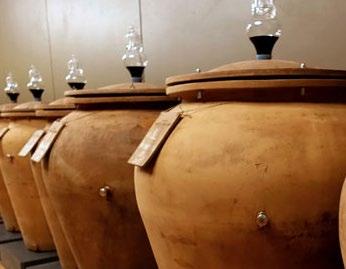



From the distant past of wine to a phenomenon pro jected into the future. We’re talking about the amphora, an ancient container of Bacchus’ nectar protagonist at Simei at the conference “Wine and amphorae: the re turn to clay,” a focus that retraced history and investi gated the prospects and commercial developments of this ageing vessel. Among the speakers, also Gambe ro Rosso international editor Lorenzo Ruggeri, who explained how wines in amphora are experiencing a moment of strong experimentation . “This is a phenom enon with a rosy future,” he said “in particular because it enhances a dynamic of horizontal communication that involves young producers on the one hand, very inter ested in researching the potential of this winemaking practice, and young consumers on the other, who are responding with interest. A trend that we also observe from a journalistic standpoint: at Gambero Rosso we re ceive a new amphora-aged wine every week to sample.” Professor Attilio Scienza also spoke of the long history of the amphora: “It was not only the first container, but also one of the first marketing tools for wine, with the engravings representing the merchant and the shape that revealed its origin.” Among the producers who have converted to ageing in amphora, Elena Casadei gave her testimony: “The amphora is like an acoustic box: it makes the quality of the grapes we put inside resonate.”
Conclusions entrusted to the moderator of the meeting, Master of Wine Gabriele Gorelli : “The return to the am phora today represents a novelty destined to grow and establish itself. But it must be remembered that, beyond marketing, this vinification does not in itself represent a guarantee of pleasure or style. Producers will have to find ways to differentiate their labels by giving them a subjective and distinctive interpretation.”
Maurizio Gaddi
TOP ITALIAN RESTAURANTS www.gamberorossointernational.com/restaurants/ TOP ITALIAN RESTAURANTS sponsor b GamberoRossoInternational x GamberoRossoInternational NEWS
Paolo e Noemia d’Amico.
A story of love, wine and beauty
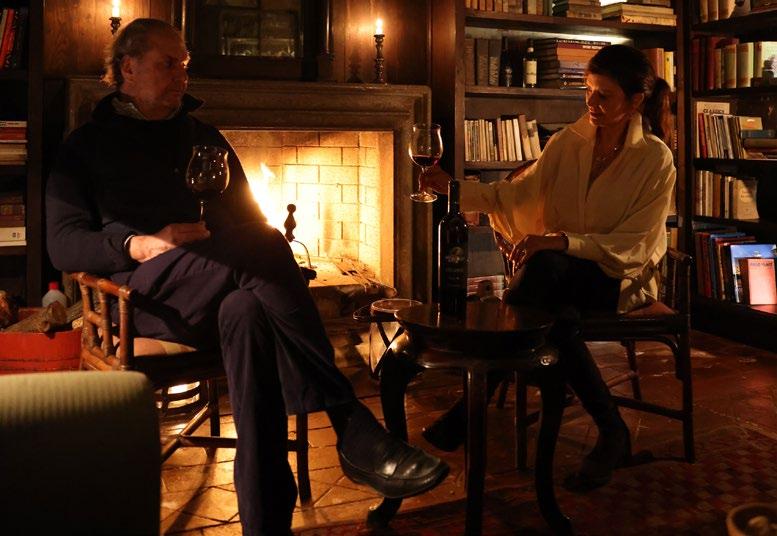
Founded in 1985, the winery owned by Paolo and Noemia d’Amico –the latter of Portuguese origin and born in Rio de Janeiro and her husband, descendant of a family of shipown ers and always passionate about wine – is located in the heart of the Tuscia, in an area that extends on the border between Lazio, Umbria and Tuscany. It all began about 40 years ago, when the couple decided to plant the first 5 hectares of vineyards of Chardonnay, a variety that still to day allows them to be very compet itive on the market thanks to super lative products. Located in the Valle dei Calanchi, the current 30 hect ares of organically managed land proliferate on a unique terroir: the long period of volcanic activity and the consequent rock formation of tuff and peperino give the wines of Paolo and Noemia a unique refine ment characterised by a strong min erality. But what is most perceived upon entering the estate is the love for the environment, for beauty, for art and hospitality. Villa Tirrena was born thanks to the passion of both for the unusual and for challenges. The cellar is extraordinary: you walk among French oak barrels, with hundreds of candles that illuminate the tuff vaults and notes of classical music. Here the wines are tasted in an intimate, beautiful ambiance, full of suggestions. Paolo and Noemia d’Amico have created a portfolio of different labels (see sidebar), all obtained from grapes grown and produced in northern Lazio. Mainly international grapes (Chardonnay, Merlot, Cabernet Franc, Pinot Nero
plus Grechetto, a great native vari ety) but it is the volcanic soil of the Valle dei Calanchi that adds a touch of class to all the wines. Once pro duced, the bottles are stored to the sound of classical music in the cel lar created by Noemia d’Amico and world-famous architect Luca Bras ini.
HOSPITALITY AND LOVE FOR ART
A few years ago, Paolo and Noemia decided to enter the world of hos pitality with the family property. Villa Tirrena became a destination for charming events and high-level vacations, and is therefore an ex ample of the incredible work and passion that the d’Amico family
transmits through their home and what surrounds it. Located only 1.5 hour drive from Rome and Flor ence, the Villa allows guests to enjoy a unique natural environment and relax in this hidden corner of Italy. Beyond the hectares of vineyards, there is an exclusive sculpture gar den on the private property, and a 13th century tower. The structure, on the other hand, dates back to the 16th century and has 7 double rooms and exclusive services such as an in-house chef and wellness therapists specialised in detox nu trition, yoga and fitness. In short, a place of subtle elegance, calm and contemplation, where guests can either relax in one of the four
10 GAMBERO ROSSO
E NOEMIA D’AMICO NOVEMBER-DECEMBER 2022
GAMBERO ROSSO X PAOLO
sitting rooms decorated with piec es that combine traditional coun tryside and lush Italian design; by the pools or in the Turkish bath; or enjoy a tasting in the underground cellar where there is also a library with titles ranging from travel to history and, of course, wine. In ad dition, strolling through the gar den will make one experience a true immersion in contemporary art: over the years, the Amicos have collected works by famous artists from the world scene such as Anish
Kapoor, Banksy and Mitoraj. They are strategically distributed among rose bushes, lemons and cypresses in a game of hide and seek in a truly unique garden. Paolo and Noemia also dedicated a part of the garden to their dear friend, British writer and explorer Mark Shand, founder of The Elephant Family charity, for the defence of endangered ani mals: elephants, toucans, gorillas and crocodiles, a memorable set ting where nature, art and love for beauty walk hand in hand.
Paolo e Noemia d’Amico Castiglione in Teverina (VT) - fraz. Vaiano - loc. Palombaro 0761948034 - 3407725010 - paoloenoemiadamico.net

The wines


The vineyards are located at an important altitude of about 450 metres above sea level. We present the labels re viewed in the latest edition of the Vini d’Italia guide. Starting with Seiano, it declined in white and red. These are two everyday wines, simple and of excellent drinkability. The Ros so is obtained from merlot and syrah, the Bianco from Trebbiano and Grechetto. There is also an Orvieto, com ing from the neighbouring Umbrian vineyards: it is called Noe and is a blend of grechet to, trebbiano and pinot grigio. Terre di Ala is a very varietal and fresh sauvignon and se millon, aged only in steel. In stead, Agylla is the fruit of pure Grechetto, where ageing hap pens in amphora. Calanchi di Vaiano is a chardonnay, com plex and of great elegance, while Falesia is obtained from the same grape variety, but which ferments and ages in oak. We conclude with Villa Tirrena and Notturno dei Calanchi, two reds, two pure bred horses from the estate. The first is a blend of merlot and syrah (for this vintage aged for 12 months in French oak barrels), the second is a pure pinot nero that brings with it all the elegance and class that one breathes upon entering this beautiful estate.

11 GAMBERO ROSSO
NOVEMBER-DECEMBER 2022
GAMBERO
ROSSO X PAOLO E NOEMIA D’AMICO
WINE TO BUY

PIO CESARE Barolo Ornato 2018

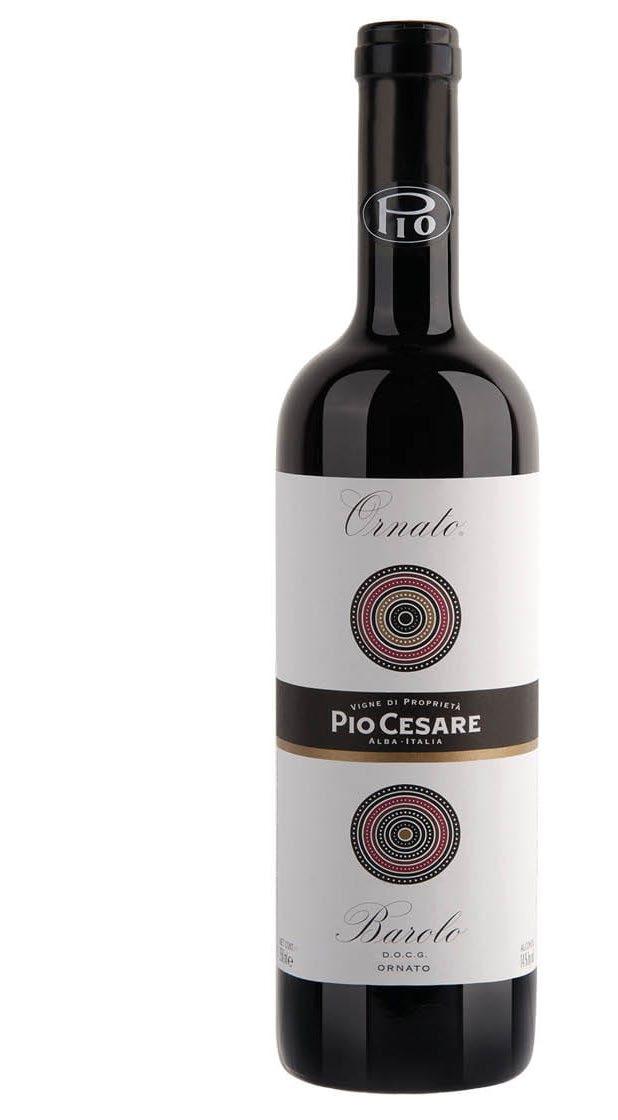
Alba (CN) www.piocesare.it average retail price: 100 euros
TheThe significant legacy left behind by Pio Boffa is now in the hands of his daughter Federica and his grandson Cesare, who continue his work with equal passion. The winery, founded in 1881, is one of the few still situated in the center of Alba, in a historic and charming building that houses the cellars and production space. The average quality of their range is impressive, with the entry-level Barolo and Barbaresco in no way out of place next to the Vigna Mosconi, Ornato or Il Bricco, thanks to a skillful combination of small and large barrels and painstakingly careful selection of the grapes. This year’s excellent performance saw one outstanding wine after another. Our Wine to Buy is the immense Barolo Ornato 2018, which is simply one the most complex and layered Barolo of the vintage. The grapes come from family-owned vineyears of Cascina Ornato in Serralunga d’Alba, an rea well celebrated for sublime structure, and logevity. The wine is aged for about 30 months in big cask, while a small amount matured in French barriques for the first 12 months. Barolo Ornato 2018 is unveiling magnificent, refined red fruit full of facets, warm hints of sweet tobacco and balsamic nuances that lend character, complexity and finesse; the palate is luscious, rich, with very fine tannins and rare fullness and harmony - a drink that’s in a class of its own. It that stands out for its creamy, harmonious palate. The finish extremely long and lively, we bet it will age beautifully over the next 20 years. We remind that this single vineyard Barolo was produced for the first time in 1985. Food pairings? We would go for a tender and juicy braised beef cheek.
THE
12 GAMBERO ROSSO NEWS NOVEMBER-DECEMBER 2022

SCHIRATA


Schirata, the red squirrel in Cortina dialect, is the symbolic animal of Cortina d’Ampezzo: this cock tail is dedicated to the squirrel and to the wonder ful forests of the Dolomites. The cocktail recalls the naimal’s coat, thanks to the use of raspberry syrup. Cortina Mountain Gin, “high altitude gin” created by the owner of the Hotel de la Poste Gherardo Manaigo who personally selected the botanicals, is the protagonist of the drink, with floral accents and notes of mountain meadows, fol lowed by soft and enveloping juniper. Drambuie acts as an aromatic shoulder to the gin, with its blend of scotch whiskey, heather honey and mountain herbs. A cocktail with a sweet entry on the palate, which thanks to the fresh and aromatic scents of juniper, wild mint, geranium and raspberry gives the mouth the sensations of a hike on mountain paths.

BARTENDER : Filippo Borghi became passionate about the world of bartending at the end of the Nineties, attending the American bars of the hotels where he stayed for work. Through travels between Brazil and Central America he fell in love with South American cocktails, a passion that led him to devote his full attention to the profession of full time bartender. His first teachers are Edmondo Ragazzi and Giuseppe Riviera of Picchio Rosso in Formigine (Modena) and Endo Masahiko; the latter transmitted his Asian culture of mixology and drinking, along with rigor and determination. It is then at the Hotel de la Poste that Antonio di Franco, the historic bartender of Bar del Posta, introduced him to the world of hotels where he has been working for four years animating the counter of the iconic American bar, a milestone of Cortina d'Ampezzo social life for almost a century. Among his favourite ingredients are fresh fruit and vegetables, and the inevitable Champagne, protagonist of immortal sparkling cocktails: his diamond is the Bellini which in autumn gives way to Tintoretto and in winter to Puccini, present in cocktail lists for more than eighty years.
 SEASONAL COCKTAIL by Paola Mencarelli
Filippo Borghi, Bar del Posta, Hotel de la Poste, Cortina d’Ampezzo
SEASONAL COCKTAIL by Paola Mencarelli
SEASONAL COCKTAIL by Paola Mencarelli
Filippo Borghi, Bar del Posta, Hotel de la Poste, Cortina d’Ampezzo
SEASONAL COCKTAIL by Paola Mencarelli
14 14 GAMBERO ROSSO SPIRITS NOVEMBER-DECEMBER 2022 6 cl Cortina Mountain Gin 2 cl Drambuie 1 cl Raspberry syrup
Glass: Shake Technique: Martini glass
A WINE AT THE OPERA

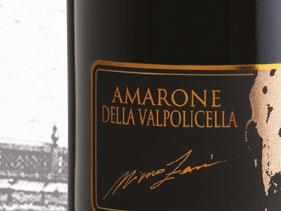

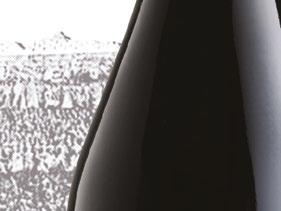
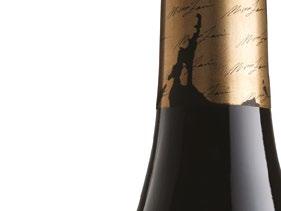
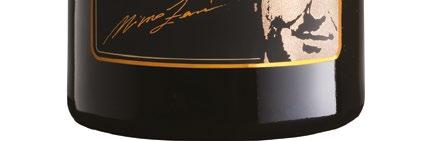


Behind every great interpretation there’s a history of passion, patience, respect, rigor, work and method.

















Zeni 1870 Araldo + Logo Colore
Hospitality, tourism, territory

Feudi di San Gregorio looks to Irpinia

Feudi di San Gregorio rises on the soft hills of Irpinia, an evocative area with its vineyards alternating with fruit trees and olive groves surrounded by woods and evergreen landscapes: an ecosystem rich in history and with great biodiversity. In 2021 the com pany became a “benefit company”, including in its statute the commit ment to protect and enhance the beauty of the environmental, social and cultural heritage of the area and the community in which it operates. A path entirely pointed towards sustainability - declined in its vari ous aspects and culminating in the B-Corp certification, the most im portant in the world on this issue - which sees safeguarding and enhancing the beauty of territory as one of the main objectives.. On this front, the Sorbo Serpico (AV) winery aims to attract curious explorer tour ism by becoming a cultural and food & wine hub of the area. Guesthouses immersed in the vineyards; gourmet proposals of the Marennà restaurant and guided tours open daily thanks to which guests can admire the art collection recently enriched by the work of Pietro Ruffo “Il Canto della Terra.” The company’s goal is that its attractiveness can be an economic boost for the entire territory.
Strengthened by the wine tourism proposal which is seeing growing interest (every year the winery wel comes about 20,000 visitors) and thanks to the work with local guides and producers, Feudi di San Grego rio wants to promote a new territorial narrative to develop the tourism in Irpinia. Tourist itineraries have been
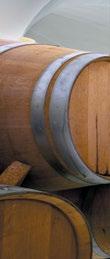
1 2

developed which, starting from the cellar, introduce Irpinia from a natu ralistic, historical-cultural standpoint (with the rediscovery of the Gole to Abbey and the Norman Castles) and also the natural biodiversity that has always characterised the area. In the estate there is a permaculture vegetable garden that uses very ad vanced techniques to protect the soil and there are many proposals for the discovering the territory: foraging ac tivities in the woods with experts, and trips to meet the suppliers of Maren nà restaurant to discover their differ ent production methods (sometimes ancestral). «Feudi, as a matter of fact, does not want to be just a winery - explains Antonio Capaldo, Presi
dent of the company - but aims to become increasingly a place for dia logue, comparison, knowledge; a lab oratory of ideas, art and culture.» It is with this goal that the projects were born in collaboration with great rep resentatives of design, architecture, art and photography, who with their work have contributed to building value for this territory, starting with the cellar designed by the Japanese starchitect Hiraku Mori. Just like Massimo and Lella Vignelli, protag onists of Italian design in the world, designed the interiors and labels that today distinguish the brand. And then as anticipated, in addition to hospitality amid the rows, there is Marennà, a gourmet experience
16 GAMBERO ROSSO
ROSSO X FEUDI DI SAN GREGORIO NOVEMBER-DECEMBER 2022
GAMBERO
1. An overview of the Feudi di San Gregorio vineyards
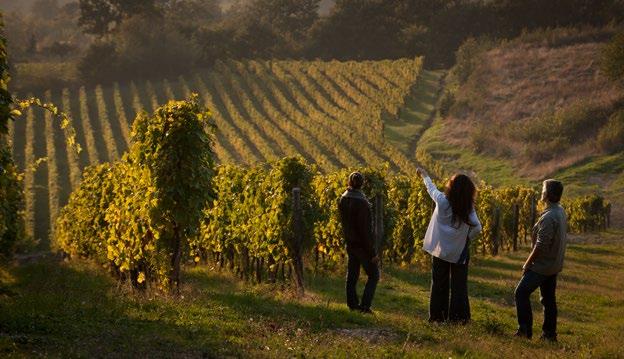
2. The cellar, designed by Japanese star architect Hiraku Mori, flanked by a path of aromatic herbs
3. The barrel cellar with its suggestive vaulted ceiling

4. The lobby, designed by designers Massimo and Lella Vignelli Feudi di San
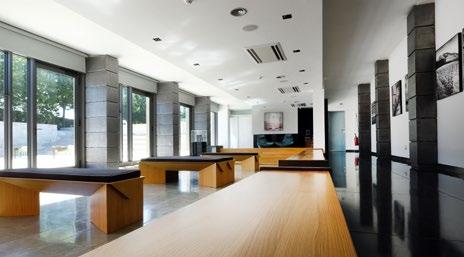
B-Corp, a great result on the road to sustainable business management

The wine company, leader in Southern Italy and one of the main Ital ian wine brands, confirms its path towards a sustainable business model, obtaining B-Corp certification which measures and rewards businesses on the basis of their social and environmental perfor mance, transparency and responsibility, and who are committed to generating a positive impact on employees, the reference communi ty and the environment. B-Corp standards are today the most wide spread but also the most rigorous in the world: out of over 200,000 companies measured to date, only 3% have in fact met the require ments of excellence established by B-Lab, the international body that bestows the certification. In Italy, there are about 150 B-Corp compa nies. «The achievement of this certification - comments Antonio Capaldo, President of Feudi di San Gregorio - represents a great encour agement to continue our work in respect of our suppliers and our customers, of our daily work, and the economic and social objectives of the company. And it is also the recognition of our commitment to sustainable action, in environmental, social and economic terms, try ing to preserve the beauty of our territory and the integrity of our community in order to leave a better world than the one we found.»
of Feudi which reopened at the end of 2019 thanks to architect Roberto Liorni, focusing on wine and the ter ritory. Marennà is a theatre of wine among the splendid hills, a research laboratory for high-quality and ter ritorial products, and a restaurant of excellence. Chef Roberto Allocca car ries out deep research on ingredients thanks to both daily interactions with suppliers and strategic work plan ning relative to the onsite vegetable garden for the production of specific - and sometimes forgotten - vegeta bles, fruits and aromatic herbs.
Serpico (AV) – loc. Cerza Grossa 0825986611 – feudi.it – ffeudisg

–
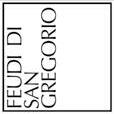 Gregorio
Sorbo
Gregorio
Sorbo
3 4
17 GAMBERO ROSSO GAMBERO ROSSO X FEUDI DI SAN GREGORIO NOVEMBER-DECEMBER 2022
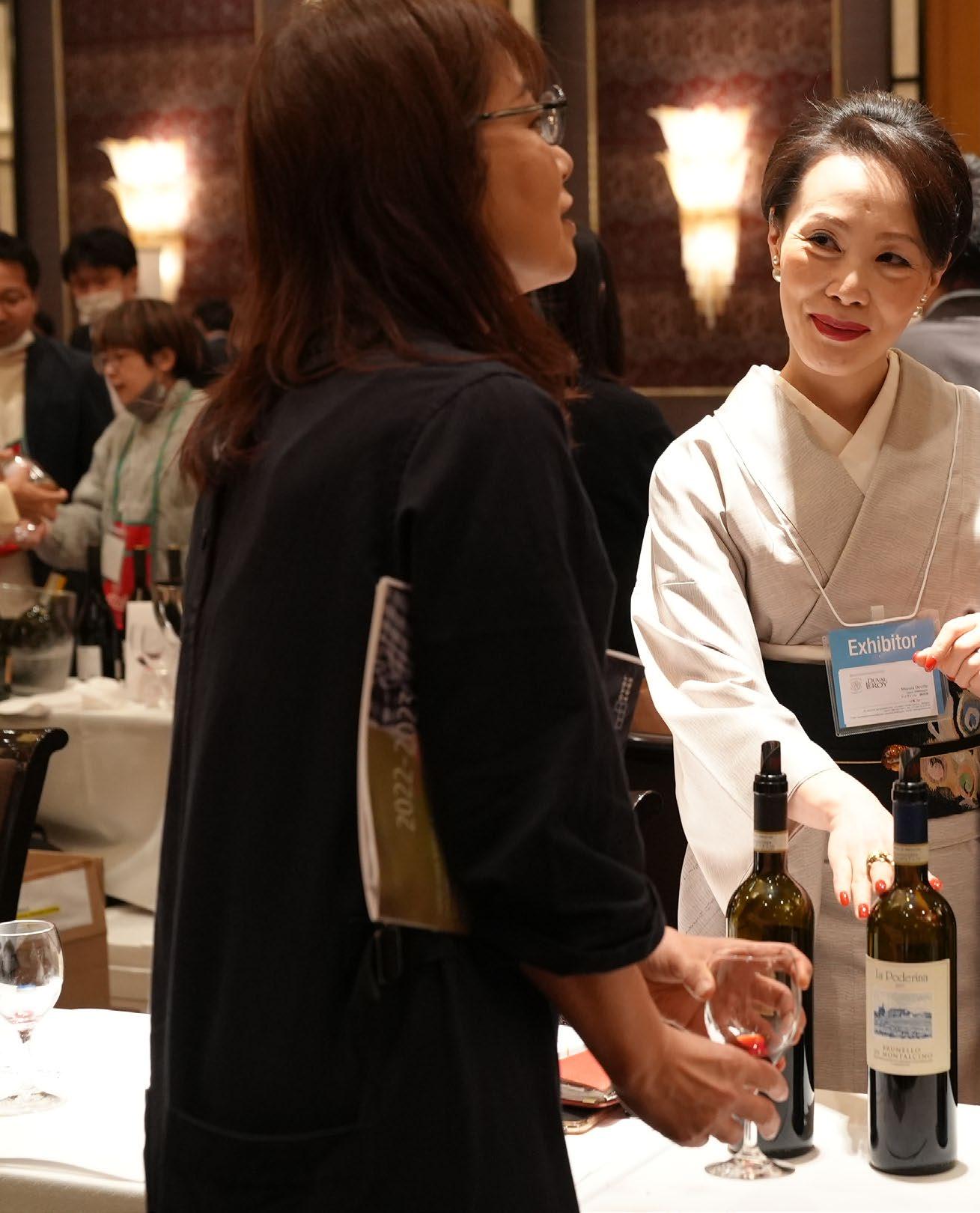
GOAL: JAPAN AND KOREA. ITALY IS BACK IN THE FAR EAST
The Gambero Rosso tour is at the start line with two strategic locations. In the Rising Sun market, 2022 is marking a clear recovery in consumption after the difficult two-year pandemic. In the Korean market there are record numbers, with an excellent performance of appellation wines
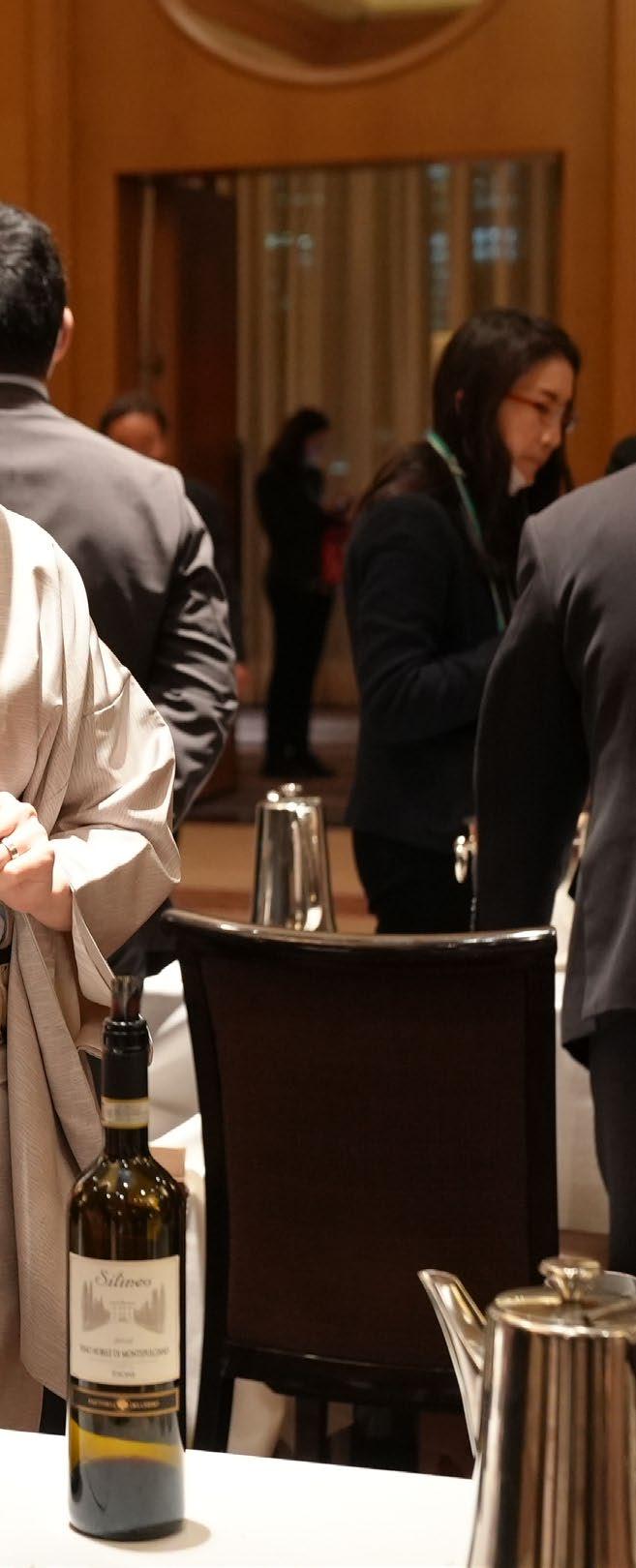 by Giuseppe Carrus, Lorenzo Ruggeri and Marzio Taccetti
by Giuseppe Carrus, Lorenzo Ruggeri and Marzio Taccetti
Reclaiming Japan and ex tending into South Korea. A war metaphor, translated to wine, which indicates the strategic importance of the two stops included in the busy schedule, just started, of the Gambero Rosso world tours. At the end of October, as a mat ter of fact, this is where Italian wine
is called to monitor, consolidate and oversee for the next few years. On the one hand, Japan (considered a mature market for years) seems to have lost some confidence with wine due to the consequences of the pandemic on the economy, but which in the first part of 2022 gave clear signs of a re-awaken ing. On the other hand, South Korea,

TOKYO LOVES PROSECCO ROSÉ





A masterclass, a tasting corner within the Tre Bicchieri event, a party all in the name of the beloved wine of north-eastern Italy. Tokyoloving wine undoubtedly smelled of Prosecco Doc, given the many initiatives organised by the Prosecco Consortium and Gambero Rosso in the land of the Rising Sun during the last week of October. The opportunity was especially tempting to get to know the whole world of Prosecco Rosé. It all started on October 24th in the prestigious Shibuya neighborhood. At Ce la Vì, a glamorous event space set up specifically for the occasion, was the stage for the Pink Party. The protagonists were Italian dishes and 13 Prosecco Rosé labels: types from Brut to Extra Dry for a perfect pairing from appetizer to dessert. To liven up the evening there was a well-known DJ in the coolest environments of the city and a very good bartender who showed off his mixology prowess, and where Prosecco finds more and more space and is mixed perfectly with liqueurs, spirits and aromatics. Dj Rickey and mixologist Hiroaki Nagashima furthermore entertained the guests who were happy to experience a splendid evening in the name of Italian Sound. To top it all off, an all-Italian menu paired with Prosecco. The day after the Masterclass was held, scheduled within the Tre Bicchieri event at the Ritz Carlton in Tokyo. For the occasion, Italian Wine-Expert Isao Miyajima tasted 14 Prosecco Rosé labels, revealing every characteristic. It is a wine produced with the classic variety of the appellation, Glera, and a percentage of Pinot Nero that gives colour and body. Pinot Nero grapes add a special character especially in terms of structure in the mouth. The wine can be produced in the Brut Nature, Extra Brut, Brut and Extra Dry versions. The production method is always the famous Martinotti or Italian method which involves fermentation in a tank for a minimum of 60 days. The vintage is always expressed on the label, with the obligation to use a minimum of 85% of the grapes of the indicated vintage. The masterclass was open to experts and operators in the sector, while many other guests of the event were able to taste the different labels in the corner set up inside the large room where the Tre Bicchieri Walkaround tasting was staged.
a country increasingly in love with the West and its productions, where wine consumption has undergone a verita ble boom in the last two years. Here It aly managed to break through with all its wine types, starting with denomi nation wines. A sign of the clear pref erence of consumers for good quality products and the excellence of Made in Italy.
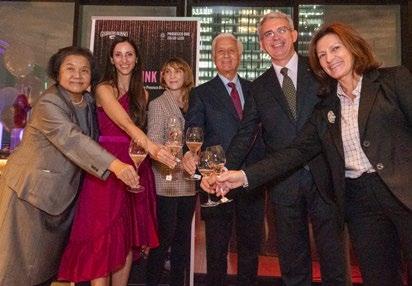
20 GAMBERO ROSSO EVENTS NOVEMBER-DECEMBER 2022
JAPAN RESUMES DRINKING
ITALIAN WINE

Gambero Rosso has returned to Japan in Tokyo, on October 25th, with the Tre Bicchieri World Tour after a forced absence due to the Coronavirus pan demic, whose effects were felt on wine consumptions. The Japanese scenario is very delicate. In the medium term, taking into account the long period of stagnation in wine consumption and the effect of the two-year pandem ic, especially on the on-trade channel (dining), the Land of the Rising Sun lost around 4 million consumers be tween 2018 and 2022, with the num ber of inhabitants unchanged. Consid ering Italian exports by value, in 2021 (according to Istat data processed by Ismea), Japan imported over 155 mil lion euros worth of wines, with an in crease of 0.7% over 2020, a year which, in turn, suffered a strong backlash on trade due to the effects of the pandem ic, thus losing around 30 million euros in turnover compared to 2019. The good performance of the sparkling and semi-sparkling wines, respective ly, up by 4.7% and 14.4%, determined a slight recovery in 2021. Still bottled wines are stable, with over 104 million euros, representing the bulk of Ital ian wine exports to Japan. In 2022, however, the trends appear to be significantly improving: +27% be tween January and July, at 118 million euros, with bottled prod ucts approaching +30%.
Considering the quantities exported from Italy, 2021 recorded a minus sign for shipments of Italian wine to Japan (–4.1%), at 37.7 million litres (they were 39.3 in 2020 and 48 million in 2019). However, Italy is catching up. In the period January-July 2022, sales to this market increased: from 22.6 to 28.2 million litres compared to the same period of the previous year. Also
Tenute Rubino brings to the fore a noble red grape from Salento, the susumaniello. Bringing it to none other than the city of Tokyo where the wine obtained from the homonymous variety surprised Japanese experts and enthusiasts. Luigi Rubino’s winery has invested a lot of time and energy in the rebirth of Susumaniello, a vine that was about to disappear only a few years ago. Now the winery is proud to present its exciting range of Susumaniello labels to connoisseurs of the Rising Sun, ranging from sparkling wines to reds, passing through rosés. Two special events in collaboration with Gambero Rosso took place in Tokyo on October 26th, inside the Etruschi restaurant in MinamiAoyama, one of the best Italian tables in Tokyo according to international critics, also awarded by Gambero Rosso in the Top Italian Restaurants guide. In the afternoon Luigi Rubino and Isao Miyajima - wine critic and highest authority on Italian wines - led the audience through an exciting journey into the world of Susumaniello in a special Masterclass. Following this was dinner, where chef Takuya Maeda combined creative recipes of Italian inspiration, with seven different Susumaniello labels, from Spumante Metodo Classico Sumaré ‘17, to a vertical of three vintages of the famous Brindisi Susumaniello Torre Testa, the wine flagship of the winery.

21 GAMBERO ROSSO WORLDTOUR NOVEMBER-DECEMBER 2022
TOKYO FOCUSSES ON SUSUMANIELLO
TOKYO: ITALIAN CUISINE OF THE HIGHEST LEVEL

With 10 Italian restaurants awarded in the 2023 edition, Tokyo is confirmed as one of the best destinations in the world for Italian cuisine: for the quality of the ingredients, the skill of the chefs, the professional service and the accuracy of the wine lists. Three pizzerias are valued, Napoli sta’cca’, awarded with Tre Spicchi for a restaurant that continues to offer some of the most faithful, light and authentic Neapolitan pizza doughs outside Italy thanks to the talented pizza maker Giuseppe Errichiello. Tre Spicchi also awarded to Daniele Cason with his innovative The Pizza Bar on the 38th, a creative authorial pizza in the Mandarin Oriental Hotel: a counter, few seats, lots of flavour. Due Spicchi instead for Chef Yamamoto’s Pizzeria and Trattoria Da Isa, always in the name of Neapolitan philosophy. And now for restaurant dining, the traditional cuisine section. Due Forchette at Etruschi, a restaurant with a Tuscan accent but with specialties from all over the Peninsula, and Due Forchette at the Dai Paesani restaurant, a true hymn to Abruzzo flavours thanks to owner Giuseppe Sabatino. Same rating for the historic Antica Osteria del Ponte, thanks to chef Stefano Dal Moro who managed to guarantee crisp flavours and consistency over time. Fine dining section: Due Forchette to Faro, the Shiseido Group restaurant in Ginza, with the elegant proposal of chef Kotaro Noda. The emerging restaurant to follow closely is Gucci Osteria, Massimo Bottura’s Japanese restaurant, which has only been open for a year, and which has won Due Forchette and is already at high level thanks to the resident chef from Campania Antono Iacovello. Tre Forchette, our highest goal, on the other hand, goes to Il Ristorante - Luca Fantin of the Bvlgari Group in the Ginza Tower. Since 2009, the chef from Veneto has been leading one of the most elegant, original and traditional Chinese and Japanese cuisine, for an authorial experience. Finally, Tre Forchette also at Armani/Ristorante, led by Carmine Amarante, already Chef of the Year in the 2022 edition.

Villa Sandi Best Contemporary Wine List Award Tokyo Faro restaurant wins the award for its wine list in Tokyo. The cellar is deep and articulated, combining cult wines and still little known Italian appellations, with a selection that reflects an accurate and profound knowledge of the matter. Lots of research work, while the wine service is nothing short of professional, starting from the serving temperatures and the proposed pairings.
in this case, the performance of spu mante (+13.3%) and sparkling wines (+10.9%) is positive and in double fig ures.
TOKYO’S WELCOME
The venue for the Gambero Rosso leg in Tokyo was the Ritz-Carlton, a lux urious hotel in the Japanese capital
events. The numbers paint an image of this celebration of Italian wine in the Japanese territory: a total of 84 pro ducers from all regions of Italy took part in the wine festival, welcoming an audience of wine lovers. The num ber of participants who gave a warm “welcome back” to the Gambero Rosso
wine event was impressive. Alongside the wine tasting, two Mas terclasses were held, focusing on Ital ian bubbles, enriched by an overview of the production methods of Prosec co and Oltrepò Pavese. In the former, attention was paid to the recent rosé version of the Veneto sparkling wine,
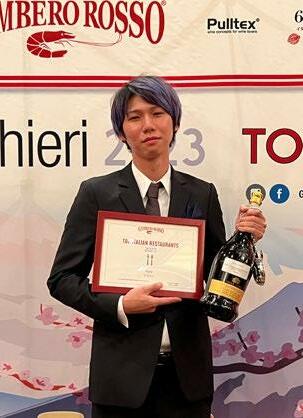
22 GAMBERO ROSSO EVENTS NOVEMBER-DECEMBER 2022
Among the many activities organised by Gambero Rosso in Tokyo there was also a masterclass with the great Franciacorta by Berlucchi, protagonists at the Ritz Carlton Hotel. Five wines tasted and explained with wisdom by Isao Miyajima - the highest authority on Italian wines in Japan - together with Leonardo Mocetti, export manager of Berlucchi.
The first three wines tasted are part of the Berlucchi 61 line that the company dedicated to its best cuvée in the name of the year in which the Franciacorta winery was created.

Opening the tasting was Extrabrut, a very classic, fine and deep bubbly. Then two very different Nature: first the Blanc de Blancs 2015, elegant, graceful and with perfectly
balanced acidity with the chardonnay grape as the protagonist; then the Nature Rosé 2015, more fleshy, structured and enveloping thanks to the contribution of the pinot nero. The closing of the tasting featured the two Riserve Palazzo Lana, both Cuvée that can boast very long stays on the lees, over 72 months. We are talking about the 2010 and 2011 vintages that surprised those present for their complexity, depth and still a lot of life ahead.
available in 14 interpretations by 14 different wineries. In the latter mas terclass, ten producers from Oltrepò Pavese offered an overview of the po tential of the Lombardy region. Not only wine was the protagonist of the Tokyo day, but also dining, with the award ceremony of the Top Italian Restaurant guide (see sidebar article), in the presence of Italian Ambassador Gianluigi Benedetti. In the closing, the bestowment of the special prizes of the 36th edition of the 2023 Italian Wines Guide. To complete the pro gram, two other events dedicated to the best Italian wine production were held in Tokyo: Prosecco Pink Party and the Tenute Rubino dinner-mas terclass. Therefore, talking about re turning to Japan, the expectations of Tokyo wine lovers have not been be trayed.
THE PROMISING SOUTH KOREA: ITALIAN BUBBLES DOUBLE
South Korea is one of the most in teresting realities for the export of Italian wine and beyond, considering the open disposition of this country towards Western products. Between 2019 and 2021, the values traded to this Eastern market went from 33 million euros to over 75 million eu ros. Bottled products in 2021 alone marked a +70% over 2020, going from 34.8 to almost 60 million euros, while sparkling wines rose from 4 to 9 mil lion euros. The performance of PDO wines was excellent, going from 12 million in 2019 to 31 million euros in 2021. Considering 2022 alone, be tween January and July the turnover was close to 49 million euros, com pared to 51 in the corresponding pe riod of 2021.

The volume of wine exported from Ita ly to South Korea also more than dou bled between 2019 and 2021, from 6.6 to 13.1 million litres. The protag onists of this success were spar kling wines, which in just one year (between 2020 and 2021) went from one million to two million li tres, and bottled wines which, with +63%, exceeded 9.5 million litres. Between January and July 2022, the quantities of wine exported amount ed to 8 million litres, a slight decrease compared to the 9 million litres in the same period of 2021.
For analysts, South Korea is an ex tremely promising market: the av erage per capita income of the adult population is high and the growth prospects of both still wines and spar kling wines are due to grow until 2025 (according to Iwsr estimates).
23 GAMBERO ROSSO WORLDTOUR NOVEMBER-DECEMBER 2022
A MASTERCLASS FOR GETTING TO KNOW BERLUCCHI WINES UP CLOSE
THE BEST OF ITALIAN WINES IN SEOUL
After Tokyo, Seoul was a further con firmation of how Italian wine has fol lowed and has attracted a strong inter national interest in this type of event. Like in the Japanese city, the location chosen was exclusive. The rooms of the Grand Ballroom in The Ambassador ho tel hosted the occasion, welcoming 64 Italian wine producers who, together with sommeliers, importers and en thusiasts, took the opportunity to ap proach and weave a mutual knowledge of flavours and culture. The period of the pandemic certainly contributed to the increased interest and desire to participate in the three master classes, conducted by the speaker Marzio Tac cetti. The central theme was an over view and virtual journey into the oeno logical heritage of Italy through a total of 64 labels, giving way to operators and enthusiasts to have an exhaustive idea of the potential of the territory and of the different facets of the re gions and Italian wine offer. Like in Tokyo, Gambero Rosso celebrat ed authentic Italian cuisine exported and offered in Seoul. The award cere mony included the presence of the Ital ian Ambassador Federico Failla, who opened the ceremony with a speech on Italian cuisine.
The two stages, Korea and Japan, of the Top Italian Wines Roadshow, con sidering the participants, the sold out masterclasses, the satisfaction of pro ducers and participants, testify to the renewed and strong interest in Italian wine as a product of excellence, able of surpassing borders and becoming a sharing moment between countries and cultures. A success that is increas ingly linked to the role of the Italian Vini d’Italia Guide, now in its thir ty-sixth edition.
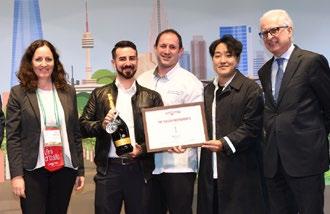

SEOUL: A MIX OF TRADITIONAL FLAVOURS AND NATURAL WINES
Trattorias, osterias and classic recipes: in South Korea people love our traditional flavours. In a city that is increasingly lively on a gastronomic level, Italian restaurants play an important role with various high-level and well-established proposals, while on the wine front the natural wave is very strong, with many wine bars offering only natural wines. During the Seoul event, 6 restaurants were awarded in the Top Italian Restaurants guide. Among the novelties, we also point out Gucci Osteria, the Bottura restaurant opened last April, that will be evaluated only in the next edition to assess its development and consistency over time. On the pizzeria front, the Neapolitan trend is very successful. Awarded for the first time with Uno Spicchio is Pizzeria O, thanks to a wellrun wood-fired oven, classic recipes and imported ingredients. Due Spicchi were awarded to Spacca Napoli, thanks to the scrupulous work of meticulous pizza chef Lee Yung Woo, better known as Giulio. On the restaurant front, Una Forchetta goes to Al Choc, a classic-style osteria led by Marco Caverni: show cooking, direct Italian flavours housed in a relaxed and informal atmosphere. Una Forchetta also to Boccalino, an elegant restaurant inside the Four Seasons Hotel in Seoul, directed by the rampant chef Marco Erba, who took over from Ciro Petrone. Due Forchette rewarded the perseverance of Paolo De Maria, his namesake restaurant is proposed as a fine trattoria, with a menu full of homemade pastas, regional recipes and a big interest in Italian wine, even with less celebrated labels. Finally, Due Forchette enhanced what in the Guide is considered the best regional cuisine proposal in South Korea: we are talking about Ciuri Ciuri, the restaurant of Filippa Fiorenza and Enrico Olivieri, who have faithfully ferried Sicilian flavours to Seoul.

VILLA SANDI BEST CONTEMPORARY WINE LIST AWARD SEUL
The prize was won by Boccalino. The wine list is fresh and deep, with many wines that are rarely found in big hotel wine lists. Artisan producers, not very famous native grapes, classic wines but also true biodynamic gems. The package is completed by a good by the glass offer and professional service.
24 GAMBERO ROSSO EVENTS NOVEMBER-DECEMBER 2022
Tenute Rubino “Home of Susumaniello” presents “The next Big Red from Apulia: Susumaniello”

From the incredible reservoir of gre at native grape varieties, Tenute Rubino is bringing back under the li melight a noble red variety from Sa lento, Susumaniello. Luigi Rubino’s winery has invested a lot of time and energy in the revival of Susumaniello, a noble variety that only few years ago was about to disappear. Now is proud to present to the New York con noisseurs and to the trade his exciting line-up of Susumaniello labels, which range from the sparklers to the Rosé and up to the reds. Two special events in cooperation with Gambero Rosso had a great success in New York on
November the 10th, in the elegant setting of Piccola Cucina at 75 Thompson St. in Soho, one of the best Italian tables of the Big Ap ple according to the international critics and Gambero Rosso Top Italian Restaurants in the World Guide. Luigi Rubino and Marco Sabellico, senior editor of Italian Wines Gui de by Gambero Rosso – guided the audience through an exciting trip in the Susumaniel lo world in a special Masterclass, where the audience of professionals was introduced to this noble variety, a real rising star in the Apulian wine scene: it was a comprehensive tasting of seven different “variations on the theme of Susumaniello” by Tenute Rubino. The wine were Sumaré Su sumaniello 30 Mesi Metodo Clas sico 2017, Oltremé Susumaniello Rosato Salento 2021, Oltremé Doc Brindisi Susumaniello 2019, Jad dico Doc Brindisi Riserva 2017, and then Torre Testa Doc Brindisi Susumaniello in a mini vertical tasing: 2017 the most recent on
the market, the excellent 2016, and the first produced, the 2004, still in great shape today. Rich and elegant wines that earned Tenute Rubino the title of “home of Susumaniello”. The tasting was followed by a light lunch fragrant of Mediterranean flavours. In the evening, a fabulous dinner, where chef Philip Guardione paired his Italian-Mediterranean creative re cipes to seven different labels of Susumaniel lo, from the classic method sparkling Sumaré ’17 to the vertical of three vintages of Torre Testa, Tenute Rubino flagship wine. It was a masterclass on Mediterranean cuisine, with Fugassa di Recco, arancini, polpo, bruschetta, Cavatelli ai porcini Maccheroni alla Norma, Costata di manzo, Cannoli Sicilani e Biscot ti alle mandorle. “My next trip to Italy will be in Apulia, to the discovery of Susumaniello and its terroir - said an happy Baroness Sheri de Borchgrave, a well known name in New York food and wine scene, columnist for Wine & Dine and Spirits magazine – Apulia is really a trove of oenological treasure, and Susuma niello is a perfect example”.
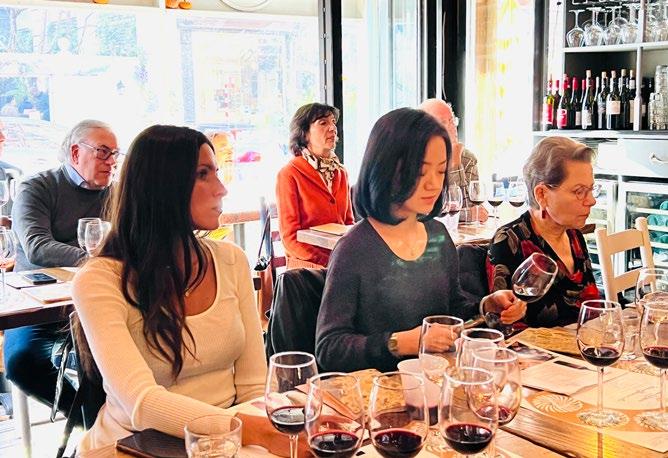
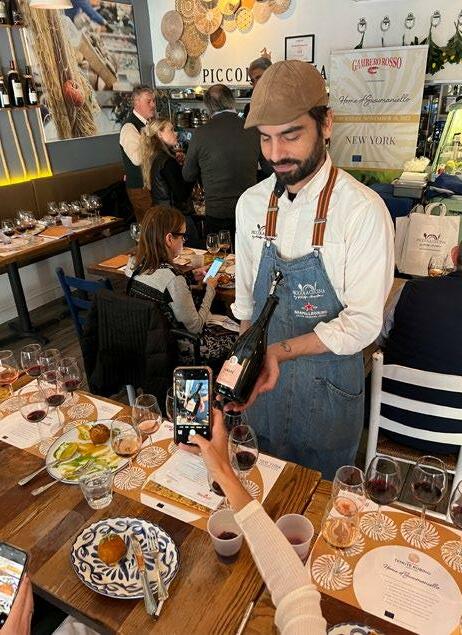
25 GAMBERO ROSSO WORLDTOUR NOVEMBER-DECEMBER 2022
WINES ON THE SPOTLIGHT Sumaré Susumaniello 30 Mesi Metodo Classico 2017 Oltremé Susumaniello Rosato Salento 2021 Oltremé Doc Brindisi Susumaniello 2019 Jaddico Doc Brindisi Riserva 2017 Torre Testa Doc Brindisi Susumaniello 2017, 2016, 2004
by Marco Sabellico
PHOTOGALLERY TOKYO

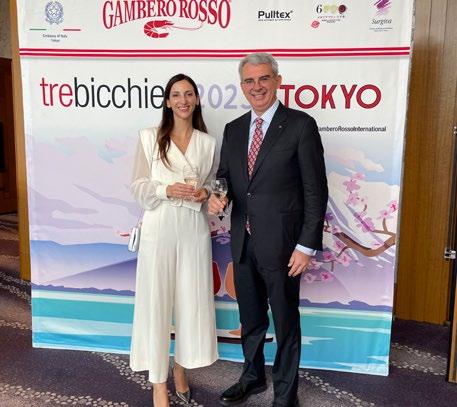

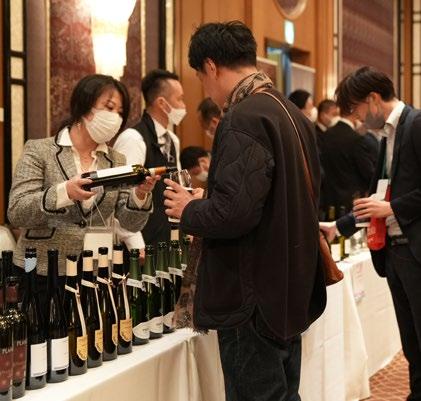


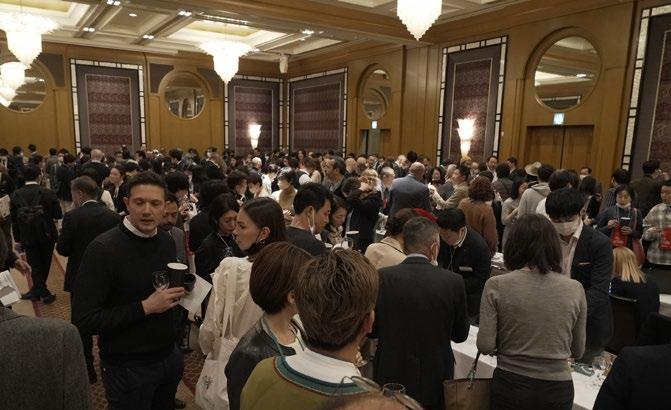
26 GAMBERO ROSSO EVENTS NOVEMBER-DECEMBER 2022
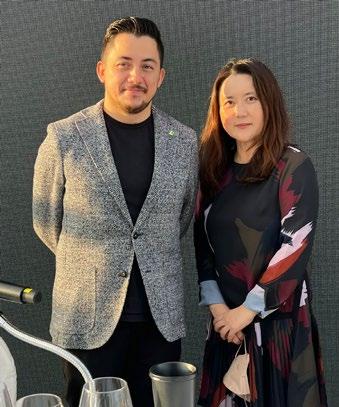
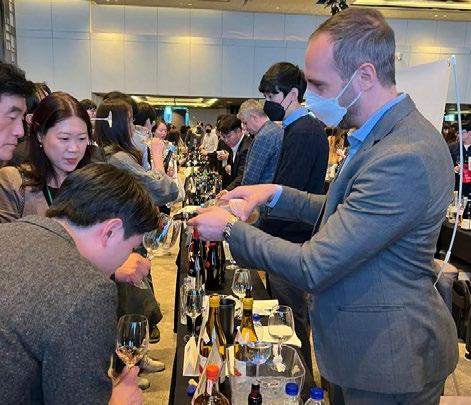


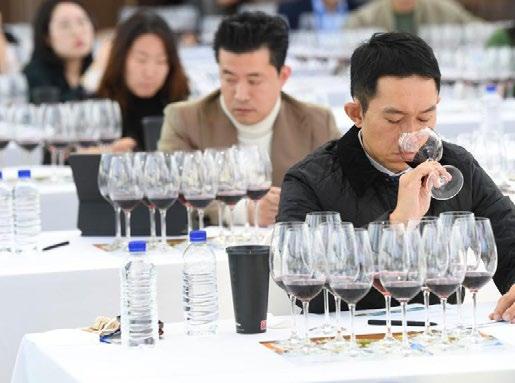
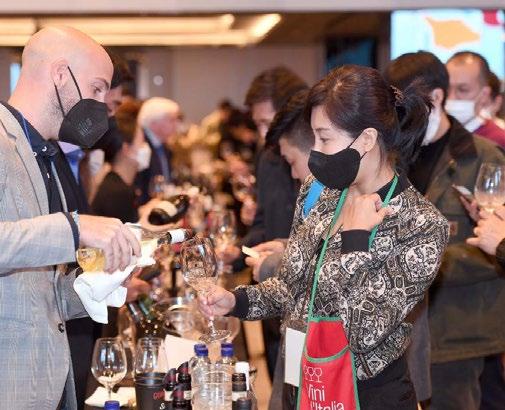
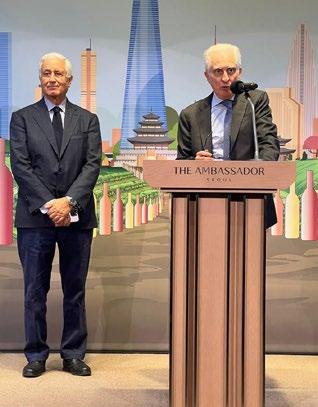
27 GAMBERO ROSSO WORLDTOUR NOVEMBER-DECEMBER 2022
SEOUL
PHOTOGALLERY
With Radici Vir tuose - Virtuous Roots starts a three-year pro gram that has Gambero Rosso supporting four pro tection consortia for the promotion of the splendid Puglia and Salento territory. The project, financed by Mipaaf, is aimed at the regeneration of the area affected by “Xylella fastid iosa.”
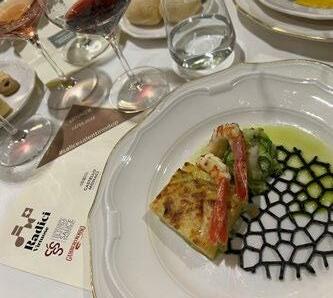
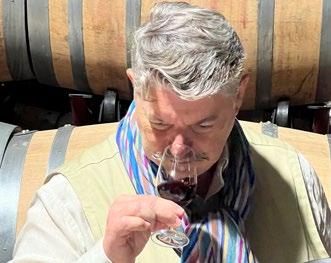
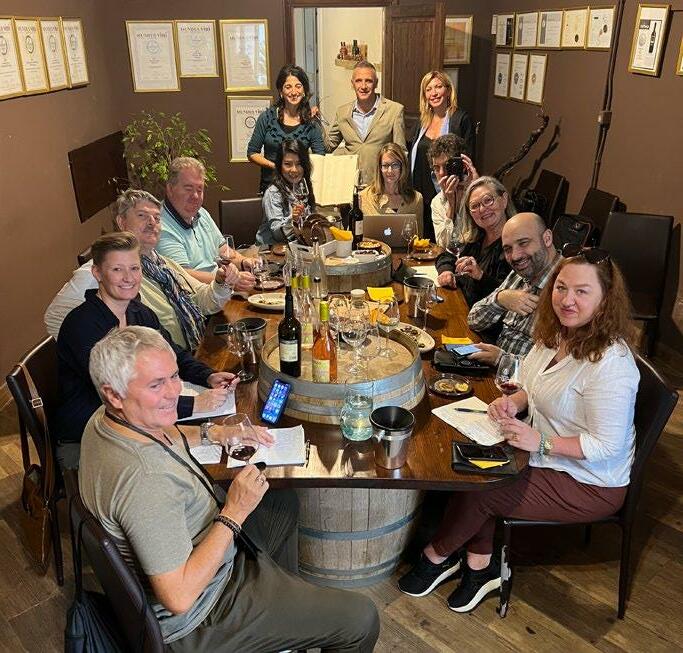
The wounds are there, visible, pain fully evident. The green sea of cen turies-old olive trees, the pride of Salento together with its great wines, is on its knees due to an indomitable bacterium, Xylella fastidiosa. This is carried by an insect, the average spit tlebug. Within a few years, hundreds of thousands of plants have dried up,
and while science studies remedies for the Rapid Dying Olive Complex, the plague advances and forces the agri-food sector and the authorities to rethink the production models of the entire region. Radici Virtuose (Virtuous Roots) is a program initi ated by the Jonico Salentino Agrifood District (Dajs) and financed by the Ministry of Agriculture in favour of the Consortia for the protection of Primitivo di Manduria PDO wines, Salice Salentino PDO , Brindisi PDO and Puglia IGP Olive Oil . In short, Salento farmers are not giv ing up. By now, a hundred producers between Lecce, Brindisi and Taranto are betting on innovation and di versifying with respect to the olive groves affected by Xylella. Invest ments for companies in the produce, viticulture, animal husbandry and
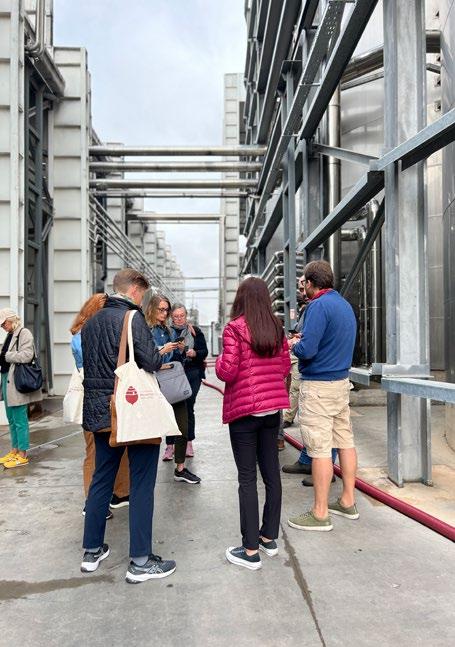
28 GAMBERO ROSSO STORIES NOVEMBER-DECEMBER 2022
grain sectors are changing the face, but not the essence, of this land. At the same time, an international promotion plan was launched with Gambero Rosso in the front row to tell its readers all over the world the uniqueness and excellence of Salen to. Together with the consortia of Primitivo di Manduria PDO wines, Salice Salentino PDO, Brindisi PDO and Puglia IGP Olive Oil, a multi-year international promotion program was launched which had a significant start up a few days ago when a group of eight renowned foreign journalists from the Czech Republic, Denmark, Canada, Brazil, Switzerland, China, Germany and the United States had the opportunity to know the best typical products of Salento, visit companies, accommodation facilities and restaurants in the Ionian-Salento area, accompanied by Gambero Rosso experts. From October 9 to 13 was a succession of meetings, lunches and

dinners with the protagonists of the Puglia food and wine scene, from small jewel cellars to the most mod ern cooperatives.
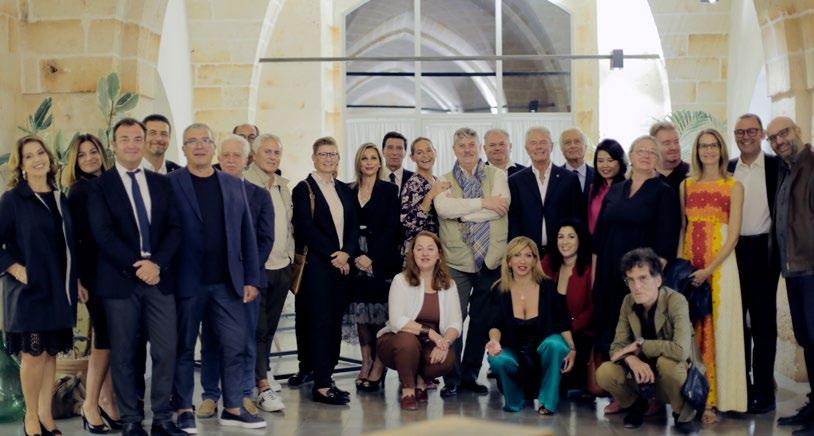
And all this through the tasting of the best Brindisi, Salice Salentino and Primitivo di Manduria wines paired with creative and traditional recipes based on the typical products of this magical area. “ I had been away from Salento for a few years - commented Michal Šetka, authoritative food and wine journalist from Prague - and it was exciting to see how the Puglia wine sector has grown. Great wines that meet the challenges of these complex times... tasting them while visiting this beau tiful territory was a great experience.” “Lecce is one of the most beautiful cities of art in the world - added Michaela Morris, journalist and wine educator from Vancouver - visiting it was beau tiful... how to visit the lands of Primi tivo, Brindisi, visit the Salice Salentino Museum, meet the producers and the
Presidents of the Consortia. Here great wines are born, which are deservedly gaining an ever-wider audience.” “A hol iday in Italy is the dream of many Chi nese people - echoes Lynn Zhou from Beijing, a well-known food and wine journalist in constant contact with her followers in the motherland - I hope that my tastings, my articles and my posts will bring visibility and tourist flow in this wonderful area, where I too will soon return…”
“Negroamaro, Primitivo and Susu maniello are grapes of great quality - added German wine writer Andrea Heinzinger - t he Salento winemakers make great wines from these, among the most fascinating in Italy. For me it was a very important experience.” Many other initiatives, at an Italian and international level, will follow in the coming months in the Gambero Rosso media and during the interna tional events that Gambero Rosso or ganises all over the world.
29 GAMBERO ROSSO NOVEMBER-DECEMBER 2022 RADICI VIRTUOSE
“PROGRAMMA DI RIGENERAZIONE ECONOMICA, SOCIALE AMBIENTALE DEL TERRITORIO JONICO -SALENTINO COLPITO DA XYLELLA FASTIDIOSA, RADICI VIRTUOSE", FINANZIATA A VALERE SULL'AVVISO MIPAAF N.10900 DEL 17.02.2020 “CONTRATTI DI DISTRETTO XYLELLA”


Pighin, from pioneers to ambassadors of Friuli wines around the world

Villa Agricola, historic residence of the XVI century Among the lush vineyards of the Pighin estate, in Risano, stands Villa Agricola, an elegant patrician residence used as a guesthouse by the Pighin com pany. It is in this secular atmo sphere that customers, friends and wine lovers are welcomed. And it is also here that cultural activities like exhibitions, con certs, readings organised by the company and often with local cultural institutions also find space. A small jewel that acts as a link between the ancient no bility of this sixteenth-century patrician villa, and the qualita tive nobility of Pighin wines.
Making Friuli wine known and ap preciated around the world. This has always been the mission of the Pighin family, which in the Sixties gave life to its winemaking history with the construction of the first winery in Risano with 160 hectares of vineyards in the Friuli Grave area, entrusted to renowned internation al architect Gino Valle. Today the family owns two estates for a total of 180 hectares of vineyards: next to the historic one, there is also Tenu ta di Spessa di Capriva, in the Collio Goriziano. Two completely different soils: flat of alluvial origin, most ly gravelly and clayey in the Grave; while in the Collio it is hilly and cal careous. A challenge that has never
worried the winery which, on the contrary, in this way, has had the opportunity to test its strength with different techniques and results: a world-famous denomination such as Collio and a territory which, like Grave, constitute a starting point from which gives life to wines with a marked minerality and freshness, capable of tapping into a more con temporary taste. The production ranges from Friulano to Refosco, from Picolit to Ribolla Gialla, from Malvasia up to types from interna tional grape varieties and sparkling wines. Despite a name now well es tablished all over the world, Pighin wines are all produced starting from the family grapes. «Family
management is our strong point» underlines Roberto Pighin, who today leads the company, founded in 1963 by his father Fernando to gether with his uncles Ercole and Luigi.
«Our company philosophy - explains Roberto - has always been aimed at the maximum enhancement of our wineries and our wines, through meticulous and total control of the production chain to ensure reliabil ity and consistency of quality in our production. All this while respecting the environment and our tradition.»
“Man must never leave the soil as he finds it,” in the sense that he must respect and enhance it, is the mot to that the Pighin family has made

32 GAMBERO ROSSO GAMBERO ROSSO X PIGHIN NOVEMBER-DECEMBER 2022
Collio Bianco Soreli ‘19

There is class and personality in this wine that brings together Ribolla Gialla, Malvasia Istriana and Friulano. The result of a long ageing, the nose is remi niscent of orange blossom and jasmine and then opens with notes of vanilla, hon ey and candied or ange peel. The sip is energetic and finds the right balance between softness and mineral im print. Excellent with white meats, it also pairs well with vegeta bles, fresh or blue cheeses.
its own and from which it makes its contribution also to respect the envi ronment. Hence the choice, five years ago, to plant 7 hectares of vineyards, converted to organic farming, with rooted grapes that are resistant to attacks of downy mildew and pow dery mildew. In addition, Globalgap certification has also been received since 2007 and Sqnpi certification since 2016, which from this harvest also allows the company to access the national certification approved by Mipaaf. In addition to this, the
process to obtain UNI EN ISO 22000 certification is being implemented. In the future, the idea is to continue investing in research and planting of native grapes. «If Friuli viticulture is appreciated all over the world to day, this is also due to the progress that has been made in the vineyard and in the cellar.» And, in this, Ro berto - like the iconic rooster that stands out on all Pighin bottles - puts his face and above all his heart into it.





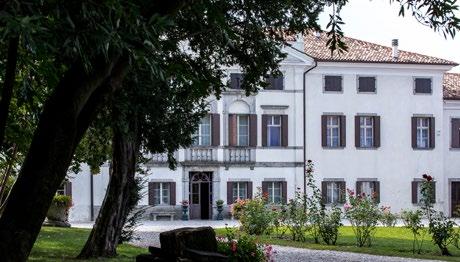


33 GAMBERO ROSSO
ROSSO X PIGHIN NOVEMBER-DECEMBER 2022
Fernando Pighin e Figli S. Agr. A R. L. Pavia di Udine (UD) – fraz. Risano – v.le Grado, 11/1 – 0432675444 – pighin.com
30mm
GAMBERO
Pighin produces one of the most appreciated Pinot Grigios in the international markets.s
Oltrepò Pavese in a nutshell in Tokyo
Oltrepò Pavese DOCG
Metodo Classico Pinot Nero Brut Oltrenero
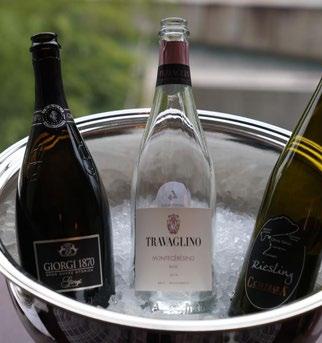
Its fragrant nose of wild berries with tangerine notes is accompanied by a complex, balanced palate with full flavour, a fine bead and a long, well-defined finish, dominated by notes of acacia honey and peaches. It will perfectly match a risotto with porcini mushrooms.
Oltrepò Pavese DOCG
Metodo Classico Pinot Nero Extra Brut Vergonberra 2018 Bruno Verdi
A dedicated corner and a master class to highlight the various types produced by the beautiful Oltrepò Pavese area, a name known for clas sic method sparkling wines made from Pinot Nero grapes, but capa ble of surprising even in regards to still reds and whites. All of this took place in Tokyo, during the Tre Bic chieri 2023 event on the 25th of Oc tober. Leading the masterclass was Isao Miyajima representing Gam bero Rosso in Tokyo, a fine taster, but above all a top expert in Italian wines. Nine wines tasted and de scribed with the precious support of Carlo Veronese, current director of the Consortium. Unmissable open ing with bubbles, three of them, all from Pinot nero. Space for Brut and Rosé of different vintages and then we moved on to two exceptional whites, where the protagonist was Riesling, a variety that demonstrates

how well it can express the details of different climate, soil and vineyards.
To close the tasting again Pinot Nero, but this time in a still version: elegance, finesse and depth are not lacking for one of the most presti gious grapes in the world which in Oltrepò has found a land of choice for centuries. Here is our report:
The Vergomberra ‘18 once again stands out as one of the most charming, historically important and characterful metodo classi cos of the territory. It conjures up minty aromas, citrus peel and white pepper; on the palate it unleashes a vibrant freshnes, t’s still just a bit compressed on the finish, but will certainly improve with more time in the bottle. This is an hidden gem.
Oltrepò Pavese DOCG

Metodo Classico Pinot Nero Brut 1870 2018 Giorgi
The 2018, with its decidedly cop pery color, features variegated aro mas ranging from flowers to pastry, citrus fruits and aniseed. Fine and persistent bubble lend creaminess to a full, elegant, deep palate. This is a very rich and layered style of Metodo Classico, which suites white meats recipes.

34 GAMBERO ROSSO GAMBERO ROSSO X CONSORZIO OLTREPÒ NOVEMBER-DECEMBER 2022
Oltrepò Pavese DOCG

Metodo Classico Pinot Nero Rosé Monteceresino 2016 Travaglino
Travaglino displays a wide range of Metodo Classico wines based on pi not nero. The Rosé Monteceresino 2016 shows a sound fruit and in triguing notes of black pepper and pennyroyal; on the palati is rich and vigorous, with unfaltering mineral ity and long finish. Food pairing? Charcuterie!
Oltrepò Pavese DOC Riesling Superiore 2020

Ca’

di Frara
Luca Bellani is the volcanic figure behind the winery founded by his great-grandfather Giovanni way
back in 1905 and developed by his father, Tullio. The Riesling 2020 it’s austere, mineral, rich and firm, taut, full and long. It willa age with joy over a decated. We recommend to match it with a proper roasted salmon with mediterranean herbs.
Oltrepò Pavese DOC Riesling Vigna Martina Le Fleur 2020 Isimbarda Wow effect. The Fleur ‘20 demon strates the full potential of riesling in Oltrepò Pavese. It’s a fine renano in its aromas, vivid in its whiffs of Mediterranean herbs and balsamic sensations, creamy and progressive in its flavor, topped off by a pure, in tricate finish.
Pinot Nero dell’Oltrepò Pavese DOC C’era una Volta 2021 Losito e Guarini
The first Pinot Noir in red of the tastings comes from clayey soils, with limestone marl and chalk. Stainless still only, it offers fresh hints of violet and red cherries. The palate is crispy, with medium body and a lingering finish of licorice and black pepper.
Pinot Nero dell’Oltrepò Pavese DOC 2019 Torti Sandro Torti and his daughter Chi ara, who’s fresh off a master’s de
gree in enology, manage the win ery dedicated to Sandro’s father, Pietro (its founder) In Tokyo they showed us a convinc ing Pinot Noir ‘19, fragrant with Mediterranean scrub, watermelon and nutmeg; fragrant and contin uous on the palate. Elegant with character.
Pinot Nero dell’Oltrepò
Pavese DOC Piotta 2020 La Piotta
We are following with special at tention the work of the Padroggi family in Montalto Pavese, in Ol trepò. From these soils come some fine Pinot Noir wine, as in the case of this 2020, an inviting and yuicy red with fresh hints of wild dark berries and orange skin. The palate is crispy, vibrant, driven by a sharp acidity.
Pinot Nero dell’Oltrepò
Pavese DOC Noir 2018 Mazzolino
The Pinot Noir Specialist. The Noir 2018 is certainly one of the best ver sions in recent years thanks to its masterfully dosed oak, which ac companies lovely notes of cher ry and rose. On the palate it’s pervasive, broad, charac terized by considerable depth and length.
35 GAMBERO ROSSO GAMBERO ROSSO X CONSORZIO OLTREPÒ NOVEMBER-DECEMBER 2022
Consorzio Tutela Vini Oltrepò Pavese
Via Riccagioia, 48 – 0383 77028 - Torrazza Coste (PV) – www.consorziovinioltrepo.it/
Oltrepò Pavese on the spotlight in Miami
Oltrepò Pavese DOCG Metodo Classico Testarossa 2016 Terre d’Oltrepò

Italian winelovers have a special at tention to this cuvée based on pi not nero grapes produced in Santa Maria La Versa. The Testarossa ‘16 is lively, fresh in its aromas of medicinal herbs, with nice acidic verve, citrusy and energetic on the finish.
Oltrepò Pavese DOC Riesling 52 Filare 2020 Manuelina
Manuelina is the up-and-coming winery of Oltrepò Pavese both on sparkling and still wines. The terroir’s aromatic herbs are singing in the Riesling Filare 52 ‘20, a wine redolent of peach and mint, exhibiting a vig or and personality in which mineral sensations are emerging.
Oltrepò Pavese DOC Pinot Nero Rosato 2020 Bertè & Cordini

Biodiversity with style. The Consorzio Tutela Vini Oltrepò Pavese brought a glimpse of the first land for pinot noir in Italy to Miami. The wine district un der the province of Pavia was the special guest in Mami, during the Italian 2023 event on the 21st of November at the Glassbox Ironside. During the wine tasting, the Consortium arranged a special corner of tasting featuring 12 labels, plus a masterclass guided by Marco Sabellico, senior editor of Vini d’Italia guidebook, and Carlo Veronese, current director of the Consor tium. The seminars showcased the many faces of Oltrepò Pavese, opening with a super classic label of the terroir, the historical Testarossa cuvée, then moving to Riesling, 5 Pinot noir wines on a raw, and the final trio: Buttafuo co, Bonarda, and the sweet Sangue di Giuda. Here’s our report:
Matteo Bertè and Luca Cordini over see a broad range of wines that stands out for its great value for money (sister Marzia also lends a hand with administration). The Pinot Rosato 2020 offers hints of violet and orange skin, on the palate is creamy and delicate, with a pepperish finish.

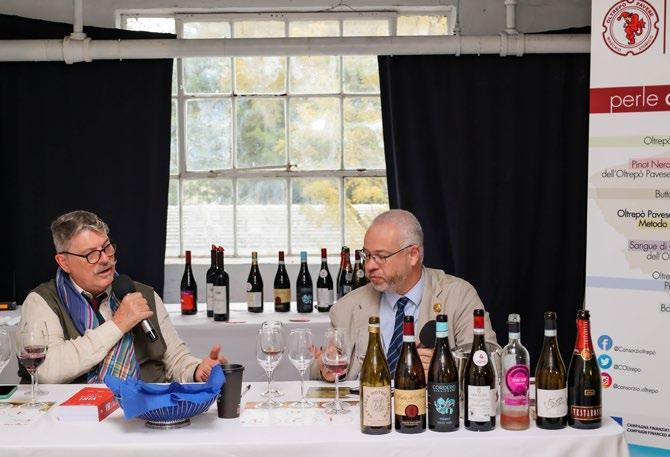
Pinot Nero dell’Oltrepò Pavese DOC Pernero 2021 Tenuta Travaglino
Situated among the vineyards and woods of one of Oltrepò Pavese’s most beautiful areas, Travaglino is rich in history and charm. The Perne
36 GAMBERO ROSSO GAMBERO ROSSO X CONSORZIO OLTREPÒ NOVEMBER-DECEMBER 2022
ro proves to be a gentle pinot nero in its balsamic profile, rich in dark fruit and mint sensations, balanced and lively on the finish.
Pinot Nero dell’Oltrepò
Pavese DOC Tiamat 2020 Cordero
What a vibrant Tre Bicchieri wine. The Tiamat ‘20 is a model of youthful ness and freshness, redolent of black berries and mint, with gentle tannins accompanying a palate rich in ener gy and flavor, all topped off by a clear, focused, persistent finish
Pinot Nero dell’Oltrepò
Pavese DOC Costa del Nero 2020 Conte Vistarino it was on the estate of Count Augus to Giorgi di Vistarino that the history of pinot nero in Oltrepò Pavese when the first cuttings were imported from France in 1850. Today Ottavia continues that legacy. The Costa del Nero ‘20 displays scents of liquorice, violet and blueberries. The palate is gentle, showind a medium and rhythmic body.
a licorice, mint and pepper character, calibrated in extraction. The finish is floreal with a mineral twist.
Buttafuoco dell’Oltrepò Pavese DOC 2018 Cà Montebello
is a sparkling bonarda with raspber ries and cherries hints. The palate is rustic and vivid thanks to a sharp acidity and pleasent tannic touch. Try to match it with a typical salame from Oltrepò Pavese of a proper slice of Mortadella form Bologna.
Luigi Scarani owns this winery lo cated in Cigognola. Buttafuoco is a blend of barbera, croatina and uva rara grapes that age for 12 months in french barrique. Red cherries and pepperish notes emerge from the nose, with good backbone and bal ance in the mouth, and a fairly sus tained finish.
Pinot Nero dell’Oltrepò
Pavese DOC Route 66 2018
Torti Eleganza del Vino
The dynamic winery run by the Tor ti family in Montecalvo Versiggia is showcasing a complex pinot noir. The Route 66 is a layered wine, with
Bonarda dell’Oltrepò Pavese Frizzante DOC Sommossa 2021 Castello di Luzzano Bonarda is surely of the most food friendly wins of Italy. Sommossa 2021
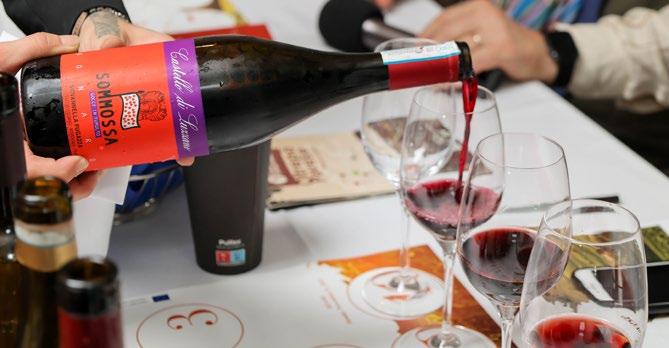
Sangue di Giuda dell’Oltrepò Pavese DOC C’era una Volta 2021Losito & Guarini Sweet happy ending. Sangue di Gi uda is a sparkling sweet red wine based on croatina, barbera, uva rara and nespolina grapes. This is all about fruit intensity with notes of blueberries and plums, with a touch of fresh violet. The pal te is light, fresh, with juicy blackcurrants finish. Consorzio
– www.consorziovinioltrepo.it/


37 GAMBERO ROSSO GAMBERO ROSSO X CONSORZIO OLTREPÒ NOVEMBER-DECEMBER 2022
Tutela Vini Oltrepò Pavese Via Riccagioia, 48 – 0383 77028 - Torrazza Coste (PV)

ITALIAN BARTENDERS CONQUER DUBAI, THE CAPITAL OF OPPORTUNITY
From a speck of sand in the desert dunes, a crossroads of caravan routes, Dubai has become a world capital of business, crossroads of different cultures and traditions: a vital hub for global experimentation. And here, thanks also to the impetus of the Expo held in 2021, a formidable enclave of Italian bartenders is emerging - like in London for decades now - alongside successful chefs, pizza makers and entrepreneurs.
 words by Federico Silvio Bellanca and Paola Mencarelli
words by Federico Silvio Bellanca and Paola Mencarelli
Al-Wașl is an archaic name, whose memory was lost in the dunes of the desert and the waves of the gulf. Literally it means "the link," or even better "the connection": a strip of land overlooking the sea that stretches on both sides of a river whose fresh waters have made life possible, and birthplace of the village that today is a gigantic metropolis of more than three million inhabitants, a true melt ing pot of different cultures where an increasing number of Westerners decide to land in search of fortune. Among the many workers that Italy provides to the Emirates, standing out are those in the world of hospitality. It's surprising to see how many Italian chefs, pizza chefs and bartenders live and work in Dubai. Here, in a mirror image of what London
has been for decades, a formidable en clave of Italian bartenders is emerging. Especially thanks to the impetus of the Expo held last year, these have experi enced international success with stories lived between skyscrapers and artificial islands, parallel to those of a country that does not appear tired of growing.
EXPO 2021 AND THE COCKTAIL BAR BOOM
It was supposed to be Expo 2020, but the pandemic postponed it to 2021. The theme of the Exposition was "Connect ing Minds, Creating the Future," closely linked to the Arabic name of the city, alWașl. The international stage has given stimuli and new visibility to Dubai and it is in this context of ferment and re newed vitality that we are witnessing a flourishing of high-level cocktail
1. Zuma Negroni-style cocktail created by Laura Marnich who is starting a new adventure at the Ergo Bar
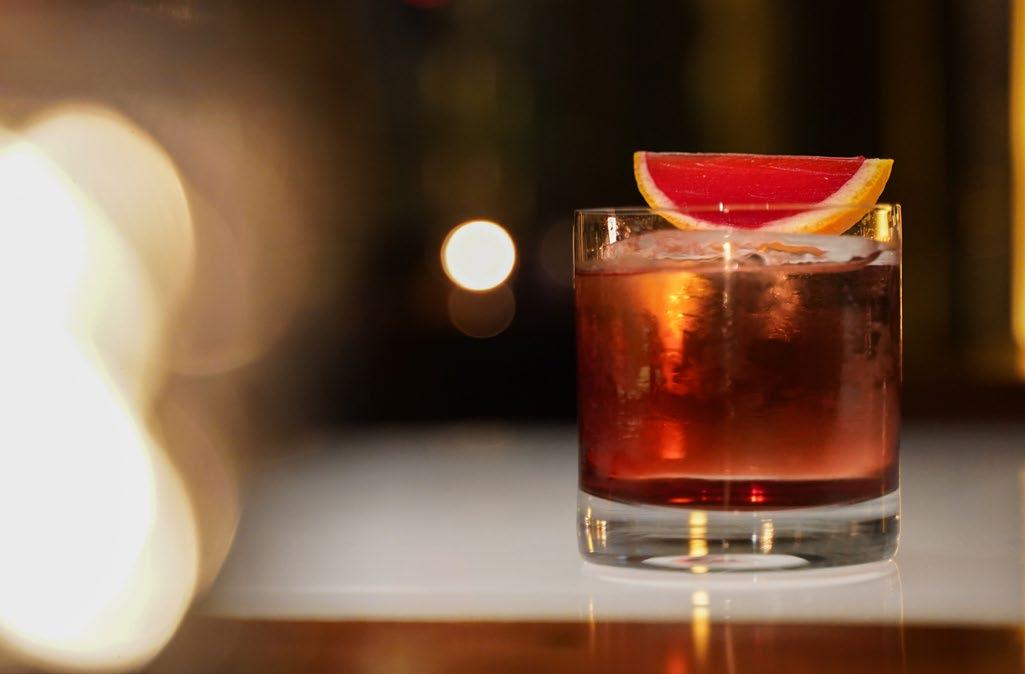
2. The Dubai skyline seen from the Siddhartha terrace at Buddha Bar at the Grosvenor House in Dubai
In the opening: view of the capital, with the famous sail-shaped skyscraper in the foreground, taken from the windows of Pierchic. In the Emirate city the great Italian aperitivo fashion is all the rage: the community of the Italian bartenders in Dubai undoubtedly contributed to this new trend focused on bitters and vermouth
1
40 GAMBERO ROSSO STORIES NOVEMBER-DECEMBER 2022
FROM AVERSA TO AMAZÒNICO
I am 29 years old: born in Aversa, after London and Sydney came the opening of the Galaxy Bar that brought me to Dubai. Here, alongside bar manager Danilo Pozone, I spent two intense years receiving important awards such as the Rémy Martin UAE Competition and positioning myself among the Top 5 for World Class UAE. Now I'm Head Bar tender at Amazònico Restaurant & Bar, alongside Bar Manager Giannis Apostolopoulos. Together with a team of over 25 bartenders we manage the three different bars of the structure: the Rooftop, the Restaurant and the Lounge Bar. Amazònico today is certainly among the top bars in Dubai, with the recent inclusion in the best 50 Best Restaurant MENA and our proposal of contemporary Latin American cuisine. An example of our mixology? My signature cocktail "Quintessential" is a twist on the classic and timeless Margarita, made with Karak Milk Punch of black tea, cardamom and condensed milk.
Francesco D’Arienzo , Amazònico Dubai


bars, between new openings and con solidated realities. The attention to the world of mixology in these parts seems to be very high, and the cosmopolitan elites who frequent these shores are happy to experience new things. As a matter of fact, if the consumption of al cohol is practically prohibited for Mus lim residents, it is possible for expats to apply for a special license, and for the millions of tourists who arrive in the city every year it's easy to find a quality offer in hotels, but also in the vast ma jority of restaurants with appropriate serving permits.
THE NEW WAVE OF MIXOLOGY
TraAmong the most known and appre ciated cocktail bars in the city, outside of the hotels, the three we are talking about are all located in DIFC (Dubai

2 41 GAMBERO ROSSO ITALIAN MIXOLOGY IN THE WORLD/DUBAI NOVEMBER-DECEMBER 2022
International Financial Centre), the beating heart of the city and undis puted destination for bon vivants.
FRENCH AMBIANCE AND LOTS OF VODKA
It all started behind the counter of my dad Vittorio's bar, con tinuing first at hotel management school and then at the Four Seasons in Milan. It is precisely there that, under the expert guidance of my mentor Luca Marcellin, I grew up within an extraordinary family that took me to Dubai in 2016, personally following the opening of the Four Seasons alongside the Corporate Office of FS EMEA. I became Head Bartender of Luna Sky Bar, the first place in the DIFC district to close at 3 am and there fore a point of reference for the entire bar industry. Currently I have married into a completely new project, which has brought here a historic brand from Paris, Kaviar Kaspia. My role is Assis tant General Manager, always with an eye on the beverage proposal. The concept of the restaurant is of French cuisine but with Russian inspira tion; there is no lack of Champagne but the leading role is played by vodka and its service rituals.


The first to mention is Zuma Dubai, which in 2021 climbed The World's 50 Best Bars ranking in 17th place. The bar completes the offer of the contem porary Japanese cuisine restaurant of the same name, recently elected among the best in the MENA (Middle East and North Africa) area. Guided by Laura Marnich, flanked by Angelo Immorlano, who added a touch of Italian style even to an international proposal, as with the "Garibaldi," with yuzu cordial, the Amerikonos or the twist on the Ramos Gin Fizz employ ing a homemade Pannacotta base in stead of the traditional double cream. A separate chapter begs to be dedi cated to the "phenomenon" Galaxy

3 42 GAMBERO ROSSO STORIES NOVEMBER-DECEMBER 2022
Mariano Ricciari , Caviar Kaspia Dubai
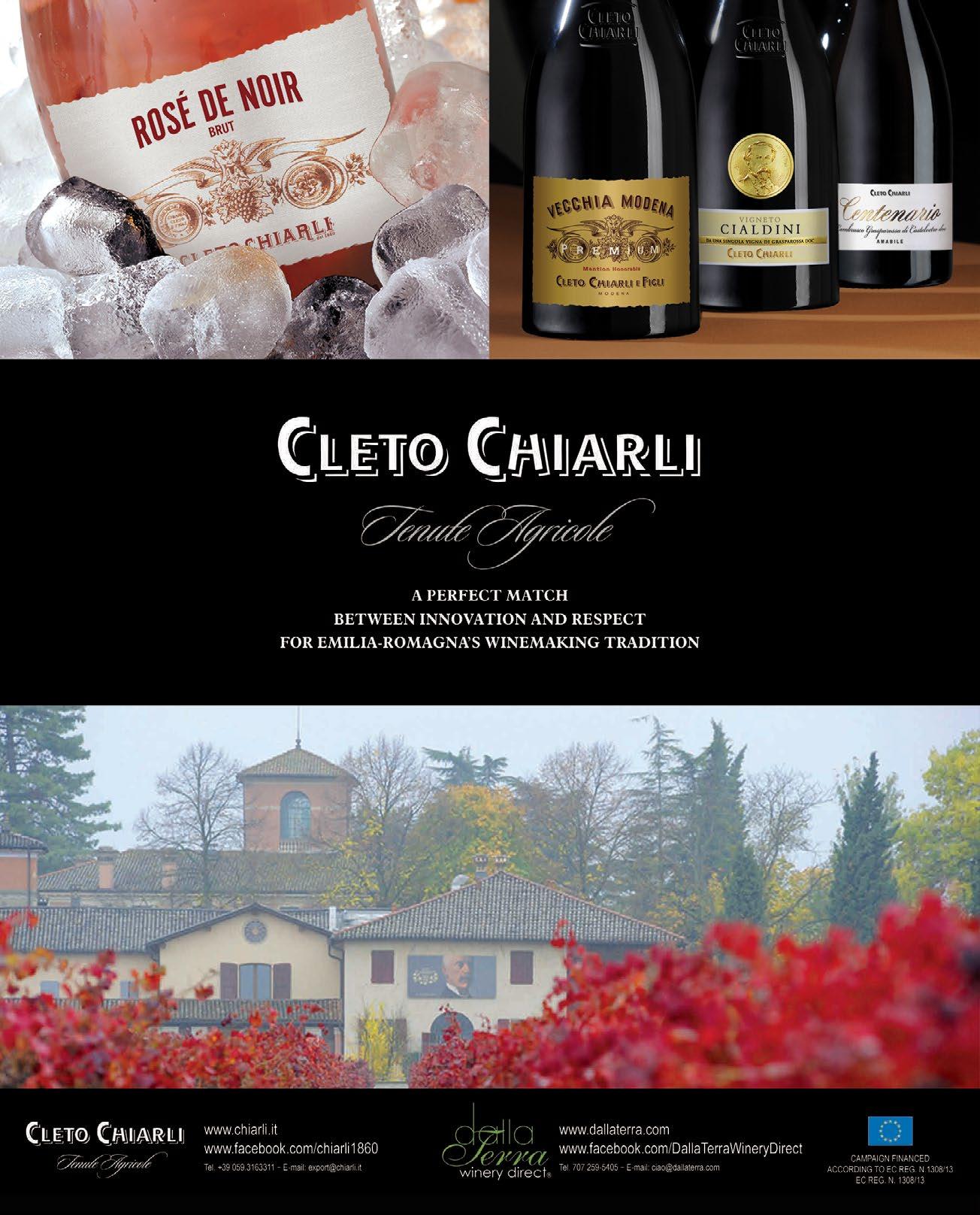
ITALIAN MIXOLOGY EXPERIENCE IN DUBAI
Amazónico
Dubai – Dubai International Financial Centre (DIFC)
Pavilion – Dubai – +971(0)45713999 amazonicorestaurant.com
Caviar Kaspia Dubai
DIFC – Gate Village Building 2 +971(0)42435633 – kaspiadubai.com
Galaxy Bar
DIFC – Unit C-01, Ground Floor (Near Dubai Four Seasons)
Gate Village Building 9 +971(0)505135908 – galaxy-bar.co
Mayabay Dubai
Jumeirah Al Naseem +971(0)42752500 mayabayrestaurant.com
Josette
DIFC – ICD Brookfield Place Trade Centre +971(0)42752522 – oh.co.uk
Zuma Dubai
DIFC – Gate Village 06
Podium Level – Al Mustaqbal St. +971(0)44255660 zumarestaurant.com
The Bulgari Bar
Bulgari Resort Dubai Jumeirah Bay Island +971(0)47775555 – bulgarihotels. com
Buddha Bar
Grosvenor House Dubai Al Emreef St +971(0)43176000 buddhabar-dubai.com
Papadom Bar Trèsind Studio
R002, East Wing Rooftop Nakheel Mall – The Palm Jumeirah +971(0)42421666 – tresindstudio. com
Bar: opened in 2019 with an all-Italian dream team led by Danilo Pozone and composed of Mauro Cortese, Frances co D'Arienzo and Christian Carro, has won the attention of 50 Best Bars like Campari One To Watch and in 2021 it entered the official ranking by right, positioning at 45th place. Today Ste fano Gambardella is at the helm, pro posing a research mix based on twists on classics, each dedicated to a zodiac sign of the Greek mythology: "Scor pios" is a twist on the Negroni with beetroot vermouth, chocolate bitter and bitter aperitif with orange; "Little Prince" is a twist on the Gimlet with gin and cherry blossom cordial. It's a recent opening and in the city ev erybody is talking about nothing else: Amazonico, landed from Madrid and in the process of new openings in 4
3. The now famous Paloma, true signature cocktail by Zuma Dubai
4. The counter of the Siddhartha lounge bar, always by Buddha Bar
5. A variant of the vodka Martini Cocktail by Laura Marnich at Zuma
6. The view from the windows of Buddha Bar from which guests can truly enjoy a unique aerial view of the Emirate city

44 GAMBERO ROSSO STORIES NOVEMBER-DECEMBER 2022
Amazónico Dubai Zuma Dubai Caviar Kaspia Dubai
2 km 200 m
Mayabay
Dubai
Buddha Bar Papadom Bar Trèsind Studio The Bulgari Bar Seu illuminati Dubai Niko Romito Galaxy Bar Josette DIFC Bulgari Hotel & Resorts Dubai EMIRATI ARABI UNITI
Jumeirah Emirates Towers
AlMustaqbalSt.
45 GAMBERO ROSSO ITALIAN MIXOLOGY IN THE WORLD/DUBAI NOVEMBER-DECEMBER 2022
Jumeirah Bay Palm Jumeirah
ITALIAN MIXOLOGY EXPERIENCE IN DUBAI
3000 BCE – First traces of human settlements in Hatta, Al Qusais and Jumeirah
1095 CE – First written mention of human settlement in those places
1833 – Dubai ceases to be a dependent outpost of Abu Dhabi. By the will of the Bu Flasa tribe, headed by the Maktoum family, a permanent community begins to live around Dubai Creek.
1894 – Under the reign of Sheikh Saeed Al Maktoum in 1894 people began to think along the dynamics of a small state, through the implementation of trade (especially of the famous pearls) and the extension of taxes.

1908 – The city slowly begins to grow, mainly in the areas of Bur Dubai and Deira.
1940-1950 – Two events disrupt the fragile economy of Dubai: World War II and the economic meltdown due to the appearance of cultured pearls in the market. Sheikh Saeed Al Maktoum signs an agreement with the British government for oil exploration.
1960 – Black gold begins to flow: bridges, roads, networks for lighting, water and telecommunications and obviously the airport are born.
1971 – Dubai joins the federation of the United Arab Emirates with Abu Dhabi, Sharjah, Ajman, Umm Al Quwain, Fujairah and Ras Al Khaiman.
1977 – In twenty years the population has tripled, in the city it exceeds 200,000. These are the years in which the price of oil skyrockets: the port of Jebel Ali, the World Trade Centre, the desalination plant, the Shindagha tunnel and the Garhoud bridge are built.
1980-1990 – Growth is unstoppable, with an impressive urban boom between the 80s and 90s, a period in which the city reaches over half a million inhabitants..
1990 – Sheikh Rashid bin Saeed dies and governance passes to his son. In less than a century Dubai has become the New York of the desert and also frees itself from the dependence on oil which today is only 20% of the business. The focus is on tourism.
2004-2006 – Surge in construction investments: Dubai becomes one of the cities with the greatest urban development in the world, on a par with the Chinese metropolises.
2015 – Palm Islands in the Persian Gulf are completed.
2021 – Expo
2022 – NMuseum of the Future is born
A TOUCH OF TUSCANY IN THE DESERT
A few years ago I flew to Dubai to col laborate with Danilo Pozone, Bar Man ager at Galaxy Bar, an experience dur ing which I shared the achievement of the prestigious Campari One to Watch award in The World’s 50 Best Bars. Today I am the Bar Manager for Orange Hospi tality, a leading company in the hospitality field in Dubai, under the direction of Omar Saideh. With a portfolio of six restaurants, I manage the bars of Il Borro Tuscan Bistro London, Il Borro Tuscan Bistro Dubai and Alici. At the moment my team and I are working on the creation of a cocktail proposal for the new Orange Hospitality concepts such as Maya bay, Thai-Japanese restaurant and Josette, French restaurant, both in Dubai.
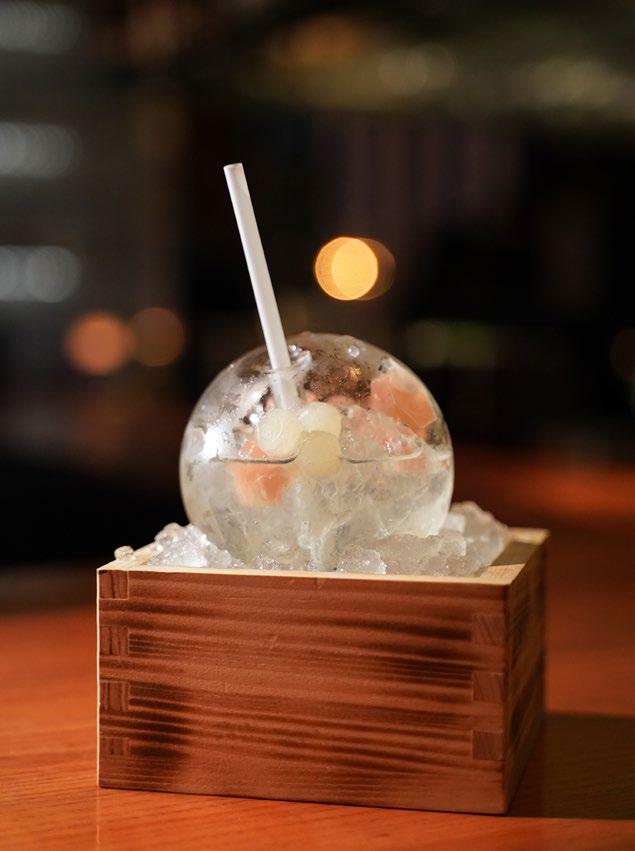
Mauro Cortese , Orange Hospitality

5 46 GAMBERO ROSSO STORIES NOVEMBER-DECEMBER 2022
TIMELINE
1800 3000 BCE 1900 2000
OUR EXCELLENCE IS GOING STRONG

Today I'm at the Gros venor House in Dubai Marina. I got to work in several international cities, including London, Ibi za and Paris, and then landed in the Emirates where I have lived for sev en years. The leap from my native Salerno to a more international context made me grow a lot. At Grosvenor House today I am the F&B Manager of the hotel, that is, I take care of the actual operation and management of all the venues located within the structure (we have 12 of them, including bars and restaurants). Bar 44 is our cocktail bar based more on the classics, with a traditional mixology propos al and maybe even a good cigar in front of a breathtaking view. Obvi ously, our Italian touch is not lack ing, among waters, wines and local beers: our excellences are in great demand and often considered the best ever.
Giacomo Vezzo, Grosvenor House Dubai

the world, is a winning formula that combines high-level dining, cocktails and musical entertainment with DJ sets, in a restaurant with an engaging atmosphere spread over three floors. The cocktail proposal, as well as the cuisine, is dedicated to the tropical fla vours of Latin America, but an Italian heart beats behind the bar counter: Francesco D'Arienzo, strengthened by his experience at the Galaxy Bar first and then at the ME, here he occupies the Head Bartender position. He is highly motivated to climb the heights of success. Among the signature cock tails is the "Sangria Blanca" with gin, white vermouth, Homemade Tropical Cordial (white wine infused with trop ical fruit) and a splash of Aloe Vera. Finally, among the latest news, the signature of a great Italian Mixol
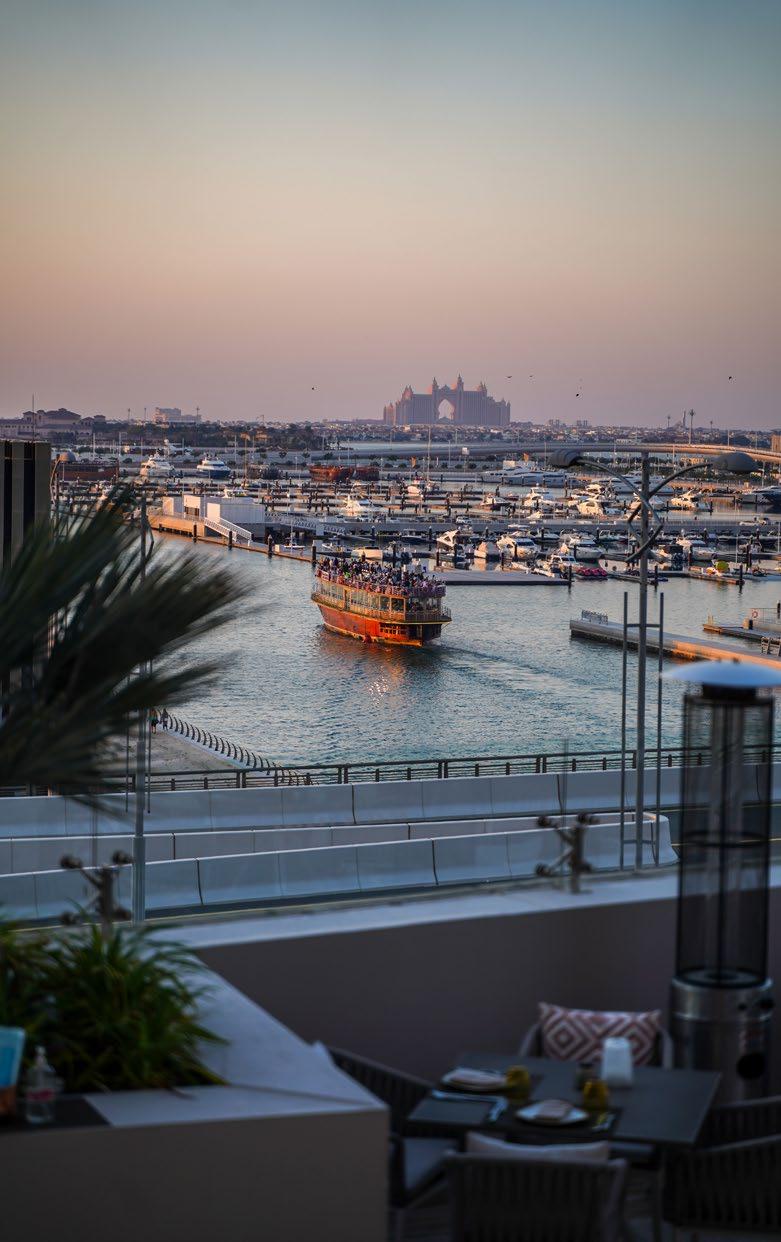
6 NOVEMBER-DECEMBER 2022
FROM UDINE TO MIXOLOGY ASIAN STYLE

I come from Udine: I wanted to be a chef, but when I discovered the world of mixology I realised that this was my path. I made the leap of faith by going to London, experiencing the "New Golden Cocktail Era" firsthand. In 2012, however, a new op portunity came and I found myself in Dubai. Today I work for Zuma: I joined the company in 2013 as a bartender and grew up to the current role of Bar Manager for Dubai and Abu Dhabi. Zuma restaurant is a sophisticated and contemporary version of the traditional Japanese iza kaya, with a very wide range of drinks that obviously winks at sake and a strongly Asian mix. I'm about to start a new adventure at Ergo Bar, but it's too early to talk about this news in detail.
 Laura Marnich , Ergo Bar
Laura Marnich , Ergo Bar

ogy master such as Dom Carella on the cocktail list of Trèsind Studio, a dining project that is unafraid to put pairing among the central pillars of its offer.
THE COCKTAIL BARS D’HOTEL
It is precisely in the large hotels that we find most of the most famous Cocktail Bars in Dubai, and paradoxically in the same structure we can find several dif ferent but equally interesting places. An example of this is the Grosvenor House, a Luxury Collection Hotel, which houses the famous Buddha Bar, an internationally recognised brand. But it is often lesser known that in that same hotel structure there are also two other wonderful bars, namely Siddharta and Bar 44, all three man aged and supervised by Giacomo Vezzo (F&B manager) and Francesco Galdi, who for the group holds the role of global beverage director. An other Italian-led bar known globally is the Bulgari Bar Dubai, whose flash rise happened after the arrival of Dario Schiavoni taking charge. In a short time he gave a well-defined identity and an interesting and modern drink proposal also paired to delicious fin ger food proposals that come from the kitchen of Ristorante Niko Romito. A bar mainly linked to fine dining but the brand is strong and promotes it well: it is Il Borro Tuscan Bistro - of the Ferragamo family - in the complex of the luxurious Jumeirah Al Nassem, which broke into the 50 Best Restau rants MENA 2021 positioning itself at 11th place. The bar is supervised by Mauro Cortese, former presence at the Galaxy Bar and currently bar man ager of the entire Orange Hospitality group. Here the cocktail list is concen trated on a few great classics of Italian mixology, but with new projects for the upcoming openings of Mayabay, a Thai-Japanese restaurant and
7

5 VENUES FOR 5 FOOD & DRINK PAIRINGS

1
Buddha Bar Dubai
FOOD Buddha Bar Maki (Maguro, Shake, Alaskan crab, caviar, cucumber, avocado, creamy Goma sauce)
DRINK Kiiro (Rum, Homemade Spiced Mango Jam, Lime, Salt Solution 20%, Champagne)
2
Niko Romito - Bulgari Hotel & Resorts
FOOD Spaghetti with sea urchin
DRINK Daiquiri made with Rum, syrup and sweet pepper grilled in the josper oven
3

Trèsind Studio
FOOD Roasted crab with ghee, burnt cinnamon, curry leaf tempura
DRINK Tomato water and jasmine (non-alcoholic cocktail)
4 Zuma Dubai
FOOD onetsuki ko-hitsuji no karashi yaki (marinated lamb chops, pickled spring onions and myoga)
DRINK Japanese Paloma (tequila blanco, clarified yuzu and hibiscus cordial, grapefruitscented Himalayan salt, soda)

5

Seu illuminati Dubai
FOOD Tartare (Tuna tartare, stracciatella, lime zest, pistachio)
DRINK Our Martini (Gin, Sake, beet perfume)
OUR NEW NEGRONI SERVICE
I am Roman, but I feel like a citizen of the world. I travelled for work from Portugal to London, from Australia to Japan to China and finally to Dubai. The experience in Tokyo was certainly one of the most important steps in my growth and my career: there I met the Bulgari group. I have been in Dubai for two years now and I personally manage the Bul gari Bar at the Bulgari Resort Dubai, a wonderful bar with a strong Italian offer. Here we are all Italian, both at the bar and in the restaurant, and therefore we try to offer our guests a completely authentic Italian experi ence. The most popular cocktail? Definitely the Negroni, which we make directly at the table with a special trolley and a very much appreciated tailor-made service.
Dario
Schiavoni , The Bulgari Bar, Bulgari Resort Dubai

50 GAMBERO ROSSO STORIES NOVEMBER-DECEMBER 2022
8
9

Josette, a French restaurant, both in Dubai.
Instead, the happy but brief paren thesis of ME Dubai by Melia bar has faded, where the bar manager Danilo Pozone, one of the Italian pioneers in Dubai, gave the hotel a lively win ter season between 2020 and 2021, flanked by Francesco D'Arienzo.
THE FOREIGN POP-UP BARS IN DUBAI
Non Not all bars in Dubai are born with the idea of permanence: in fact, the phenomenon of Pop-Up Bars is spreading rapidly. Ephemeral places that serve to raise awareness and of fer a touch of novelty. This is the case of "Dante" from New York: wanted by Danilo Pozone, Chris Moore's shift animated the ME Dubai by Melia bar
for the entire month of January 2021, proposing a cocktail list dedicated to the great Italian classics of the fa mous New York bar. As well as the most recent opening of the spin off of the award-winning "Floreria Atlan tico" in Buenos Aires by Renato "Tato" Giovannoni, hosted at Iris Dubai in the three winter months until the end of January 2022, with a drink proposal evoking scents and flavours of the Argentine land. The Expo also brought some big names to land in the Emirate, signing cocktail lists and bars dedicated to the event. An example of this is Simone Caporale, who in the Pop-Up Bar "Rex" created by Peroni on the forty-ninth floor of the InterCon tinental Dubai Marina, an IHG Hotel, has created a cocktail made with beer and bitters in perfect Italian style.
AFTER THE PANDEMIC, THE ENLIGHTENMENT: A SPEAKEASY IN DUBAI
From a small bar on the Amalfi coast to London, my pas sion for the bar tending world started as a teenager and soon led me to the interna tional capital of mixology. I went to Australia, I came back, I trained in luxury chains. The pandemic made me think a lot about the fu ture and I therefore decided to get back into the game by setting sail for Dubai. Having received the proposal of working at Galaxy Bar, where I hold the role of Bar Man ager today, I immediately under stood that I had chosen the right place for me. We are talking about a European-style speakeasy, small and welcoming, lit by a starry sky made of LEDs. Not surprisingly, the constellations of Greek my thology are precisely the source of inspiration for our new capti vating drink list.
Stefano Gambardella, Galaxy Bar
7. Il pairing tra cocktail e i piatti firmati da Niko Romito presso il Bulgari: Lo spaghettone ai ricci di mare e il Daiquiri Drink a base di Rum, sciroppo e peperone cotto nel josper
8. Il signature cocktail di Bulgari realizzato dal barmanager Dario Schiavoni

9. Una pizza di Pier Daniele Seu: nel suo locale si abbina una tonda a base di tonno fresco, stracciatella, lime e pistacchio a un Martini a base di Gin, Sake e aria di barbabietola
10. La vista del Burj Khalifa, il grattacielo più alto del mondo, da una terrazza del Four Seasons Dubai
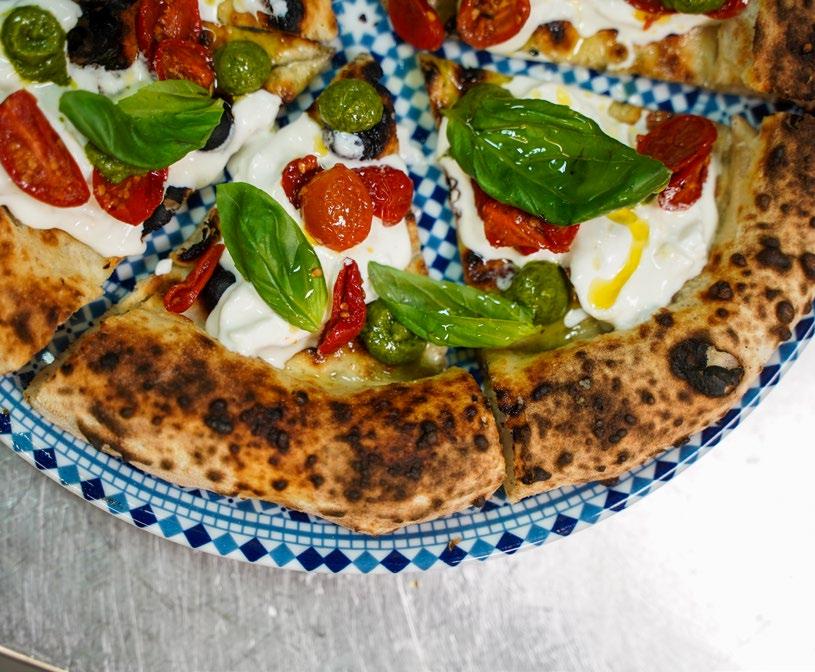
51 GAMBERO ROSSO ITALIAN MIXOLOGY IN THE WORLD/DUBAI NOVEMBER-DECEMBER 2022

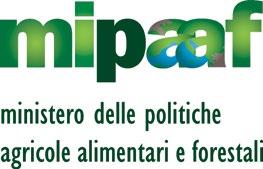
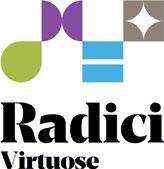

WE ITALIANS ARE THE BITTER OF WORLD MIXOLOGY

I took my first steps in the historic cafes of my Turin before mov ing to Dubai in 2014 and becoming Bar Manager at the Bud dha Bar. I returned briefly to Milan in 2017, winning World Class Italia in 2018, and then returning to Dubai in 2019. To day I am Corporate Beverage Manager for the whole Buddha Bar group. This reality was born in 1996 in Paris and represents a concept that incorporates three fundamental elements: mixology, entertain ment & music, and food. Buddha Bar landed in Dubai in 2006, indicating the way forward to animate the nightlife in the Emirate capital. After all, we Ital ians are the "Bitter" of world mixology: with just two drops of our spirit we can transform a simple experience into a memorable experience. And that's what I tried to do here as well at Buddha Bar.

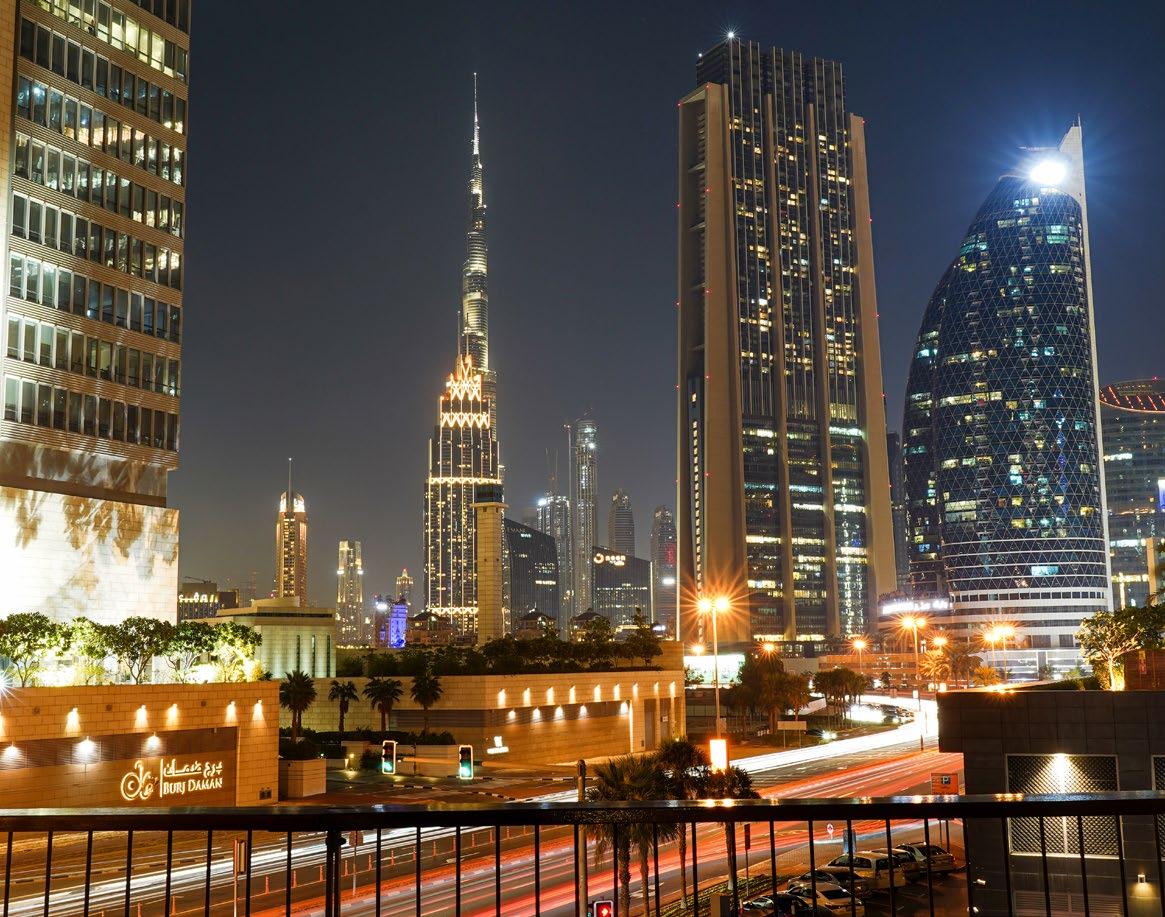 Francesco Galdi , Gruppo Buddha Bar
Francesco Galdi , Gruppo Buddha Bar
Inside Expo, on the other hand, a sin gle illustrious presence, Erik Lorincz, at Warhol's Bar & Bistro housed in the pavilion of Slovakia, his homeland. The Expo has perhaps lost the oppor tunity to give more space to the world of mixology: Jubilee Gastronomy, a rooftop with a magnificent view of Al Wasl Plaza, dedicated chef's table to Michelin star-studded chefs from all over the world - including the Italian Valentino Cassanelli - but the beauti ful bar of the structure has only of fered a cocktail list, undoubtedly in teresting, of drinks dedicated to the cities of the countries that have host ed Expo over the years. Obviously, the presence of the "Milan" cocktail, a twist on the Negroni, is inevitable.
10 53 GAMBERO ROSSO ITALIAN MIXOLOGY IN THE WORLD/DUBAI NOVEMBER-DECEMBER 2022
Giulio Fiamberti, the Rock of Oltrepò Pavese
Handsome, determined, tireless, always ready to improve. Giulio Fiamberti is the passionate soul and the inexhaustible engine of the winery in the Oltrepò territo ry, located in Canneto Pavese, in the province of Pavia. Alongside him we find the experience of his father Ambrogio, who works with him at all stages of production. Fi amberti is one of the historic win eries in Lombardy, the first deed of sale dates back to 1814 when Giovanni Fiamberti bought the Solenga vineyard, one of the most suitable vineyards in the region for the production of Buttafuoco Storico (his father Ambrogio was
also one of the founding members of the Historical Buttafuoco Club in 1996). On the other hand Canne to Pavese has a well-defined soul: it is one of the municipalities with the highest density of vineyards in Italy, just think that out of a total area of 581 hectares, 461 are dedi cated to grapes.
The great leap in quality came with the arrival into the company of Giulio, at the end of the 1990s. In 2007 the new company name bore his name. Bonarda, Sangue di Giuda and above all Buttafuoco Storico come from the vineyards of Canneto. Giulio is in fact an enthu siastic ambassador of the denom
ination, definitely at the centre of the company project: two crus on the market, to which he could even add a third.
The recovery of ancient grapes such as moradella is also being studied to compose the blend of native varieties of the future Mon te Acutello, another historic label of the winery.
But we are in the land of Pinot Nero, so there are also two versions of the Classic Method, Caristoro bi anco and rosé, another ambitious project by Giulio with the grapes of the Versa Valley and Valle Scu ropasso even above 400 metres in altitude.
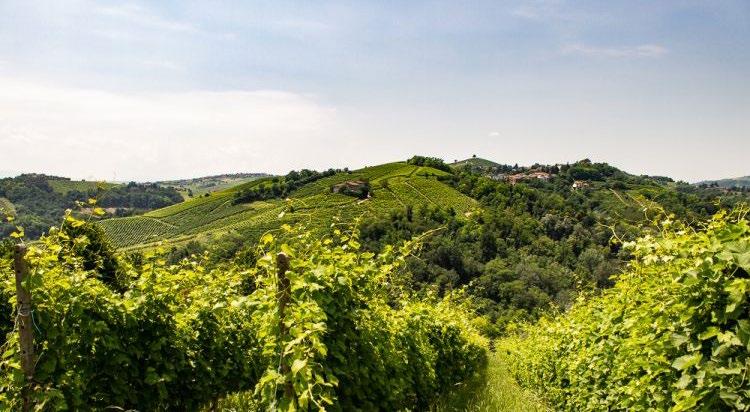
54 GAMBERO ROSSO NOVEMBER-DECEMBER 2022 GAMBERO ROSSO X FIAMBERTI
CALLING CARD, POKER OF WINES
OP Metodo Classico Rosé Caristoro Extra Brut


Let’s start with the Classic Method which rests on the lees in the bottle for at least 30 months. Inviting in its references of small berries and toasted coffee, with a crisp fruit and soft perlage in the mouth, for a dry and defined finish on tones of pomegranate and lime.
Buttafuoco Storico Vigna Sacca del Prete 2018

Hails from a single vineyard in Can neto Pavese planted in 1990. Same blend of the previous wine listed, but long maceration of 50 days on the skins and ageing in wood be tween tonneaux and barriques for 30 months. It has ripe tones of cher ries and licorice, lots of pulp but also a deep breath of pepper and mint for a red that needs to wait in the bottle.d articulated spiciness.
Fiamberti

Via della Chiesa, 17, 27044 Canneto Pavese PV – fiambertivini.it/
Buttafuoco Cacciatore 2020

Tre Bicchieri recognition for this blend of croatina and barbera, with a balance of uva rara and ughetta di Canneto. Enchanting with a fra grant and airy spice twist, currant tones and an energetic and electri fying palate as far as rhythm and savoury pleasure, with a truly origi nal and articulated spiciness.
Buttafuoco Storico Vigna Solenga 2018

We close with the historic vineyard purchased in 1814, located in Stradella between 100 and 300 me tres above sea level, the same grape variety as the Sacca del Prete. The wine opens on hints of incense and pink peppercorns, with a back ground of withered flowers and notes of orange peel. The mouth is rich, alcoholic, with a deep toasted tone on the finish.

55 GAMBERO ROSSO NOVEMBER-DECEMBER 2022 GAMBERO ROSSO X FIAMBERTI

Tenuta Travaglino in Calvignano since 1868
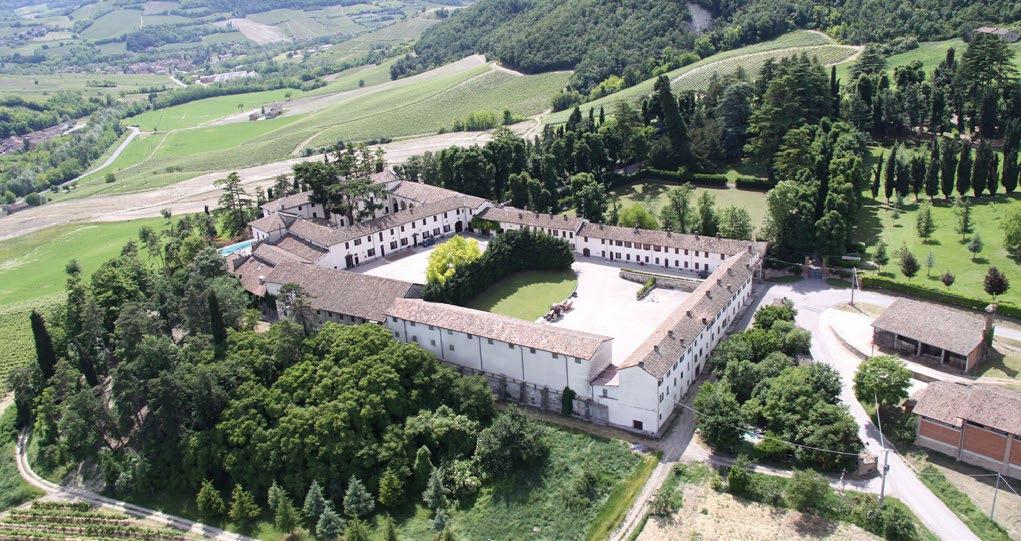
The first traces of the building that today houses the Comi family business date back to the early XII cen tury: it was a monastery where agri cultural activities were already being carried out at the time, as was cus tomary. “Surely an important date for Travaglino is 1868”, says Cristina Cerri Comi, at the helm of the winery to gether with her brother Alessandro: “that year Vincenzo Comi bought the estate. But there is also another im portant Vincenzo Comi, the grand son of the previously mentioned, my grandfather, in a certain sense the second founder. In fact in the 1960s he developed Travaglino as we know it today. After WWII he moved from Milan here to Calvignano, he be
came so fond of these places that he decided to transform the farm into a winery.” Travaglino therefore took a first step towards modernity in those years; on the contrary, in a far-sighted vision, in a perspective of quality wine production, Vincenzo put in place a first zoning of the land most suitable for vines: “moreover, in the 70s, we re placed all the Italian riesling with the Rhine one; we started the production of Classic Method in the 1980s, and then we also dedicated ourselves to the Pinot Noir Reserves vinified in red.” In 2014 Cristina and Alessandro arrived: a period of investments start ed again, we started exporting and we focused even more decisively on the search for quality.
But let’s try to put this long history in the geographical context in which it has developed over the course of over a century and a half. Located in Calvignano, a small village (only 100 inhabitants) in the central-western Oltrepò Pavese. Oltrepò Pavese is a wine-growing area in Lombardy where 60% of the regional wine is produced (13,500 hectares of vine yards) and is the first area in Italy for the production of pinot nero with its 3,300 hectares of vineyards on the hills close to the Apennines that sep arates the Po Valley from the Liguri an Sea. It is still a very “agricultural” area, made up of countryside with minimal human intervention, varied from the point of view of the

57 GAMBERO ROSSO GAMBERO ROSSO X TRAVAGLINO NOVEMBER-DECEMBER 2022
and more; especially after 1865, an important date for the wine history of this territory, because it is the year in which the first Classic Method was created exclusively from pinot nero in Italy. This is what has favoured the diffusion in the territory.” And what about riesling instead? “The Riesling traditionally present in the area was the Italian one. Then in the 1970s the Rhenish began to be planted. One of the first wineries to make this choice was precisely Travaglino since this grape variety guarantees more com plex and long-lived wines than those produced with Italian riesling. Calvi
58 GAMBERO ROSSO GAMBERO ROSSO X TRAVAGLINO NOVEMBER-DECEMBER 2022
gnano, Oliva Gessi, a part of Mornico and a part of Montalto Pavese are the areas of choice for riesling in Oltrepò. These valleys are wider and brighter, characteristics that the grape needs to express itself better.”
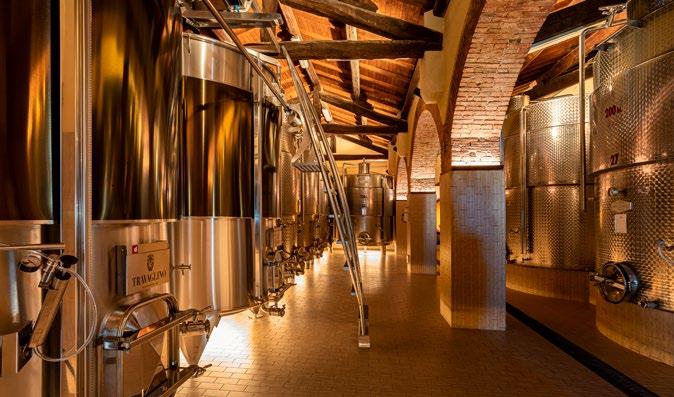
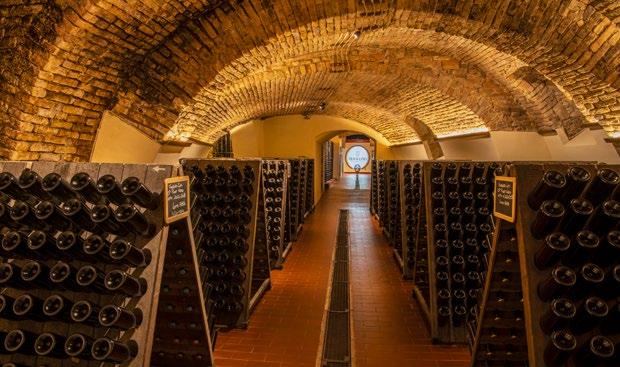

landscape and the crops that ro tate. It ranges from 70 metres above sea level up to 1,600 metres in the Apennines. “Travaglino rises at the foot of Mount Ceresino: the soils we have on our estate,” explains Achille Bergami, the company’s technical management, “are compact, white, fresh, capable of giving elegant and fine wines, played on freshness. more than body. They are perfect for creating the basis for the Clas sic Method sparkling wines, but at the same time they give depth and intensity to Pinot Nero vinified in red and Riesling.” Located on the second hill, there are 80 hectares of vineyard within a property of 400 hectares in a single body, a size that makes Travaglino one of the largest private wineries not only in the territory but in Italy in general. In these 80 hect ares, pinot nero and riesling cover the most important part (18 hectares for each). The rest is mainly dedicat ed to croatina and barbera. Achille explained the reason for this great diffusion of Pinot Nero in this area: “This prestigious and noble grape arrived here in the mid-19th century from France; it was initially cultivat ed in the Rocca de’ Giorgi area, in the Scuropasso Valley. Since it suited well, the farms began to plant it more
“We currently produce about 180,000 bottles a year, equally divid ed between sparkling wines, whites and reds. We started exporting in 2014, when I joined the company,” says Cristina, “and now we are at 15% of the total bottled, a percent age that is growing year after year. The process is obviously long, but we are trying to create structure, it is
FOUR TOP WINES

Poggio della Buttinera – Pinot Nero dell’Oltrepò Pavese Riserva Doc Poggio della Buttinera is a Pinot Nero Riserva. The grapes come from a single vineyard that has a slightly different soil from all the others of the winery: it is always clayey-calcareous but is looser and has ferrous elements; in summer it warms up a little more and the clones that are planted here are suitable exclu sively for red winemaking. “The pinot nero that comes from here” explained Achille, “is increasingly intense and complex and therefore we dedicate it to our Riserva. The masses remain in tonneau and barrique for a year, then they are assembled and bottled. The ageing takes place for another two years in our cellars. It is our symbolic wine when it comes to pinot nero vinified in red.” The 2019 version that we tasted for Vini d’Italia 2023 is elegant in its balsamic traits, rich in spicy and fruit sensa tions, while it is long and creamy in the finish.

Campo della Fojada Riserva: Oltrepò Pavese Riesling Riserva Doc


Campo della Fojada is one of the best crus for the Rhine Riesling in Oltrepò; it is the first Rhine Riesling vineyard planted in the winery in the 1970s. This Riserva is the result of a se lection of the best grapes of this vineyard. After vinification, the wine remains in steel tanks on the fine lees for a year; then it is bottled and also in this case, the ageing in the cellar lasts two years: “it is Riesling as we understand it, made to be a complex white wine with longevity: there are 3,000 bottles per year, a limited but very significant.” For Vini d’Italia 2023 we tasted the 2018 vintage, with great evolutionary potential: it has clear aromas of sage and basil, backbone and flavour in the mouth for a satisfying finish.
Vincenzo Comi - Riserva del Fondatore - Oltrepò Pavese Pinot Nero Metodo Classico Docg
It is the label dedicated to the two Vincenzo Comi, founders of Travaglino. Pinot nero grapes from the oldest company vineyards were reserved for it, of between 35 and 40 years of age. After vinification, the wine remains on the lees for at least 60 months: “it is a very important wine for our company, a product to which we dedicate a lot of effort; for example, the tip is done by hand to enhance the craftsmanship and attention to the maximum. that we reserve for him.” The classic notes of bread crust intersect with fruity nuances ranging from currant to light citrus; the mouth is creamy, harmonious and balanced.
Marc’Antonio - Oltrepò Pavese Rosso Riserva Doc
A reserve of barbera (60%) and croatina (40%), “a wine that was produced until 2009 and that we abandoned for a period. We resumed the project in 2019 because Marcantonio, especially abroad, allows us to describe our territory through the two most representative indigenous grapes: Barbera and croatina in the soils of Calvignano give life to an important red, but always very elegant, despite its powerful structure.” The ageing takes place in steel and barrique for one year; after blend ing, the wine rests in the bottle for six months. Black cherries and blackberries, vaguely balsamic and an imperceptible toasting materialise in a structured mouth, warm but with good progression.
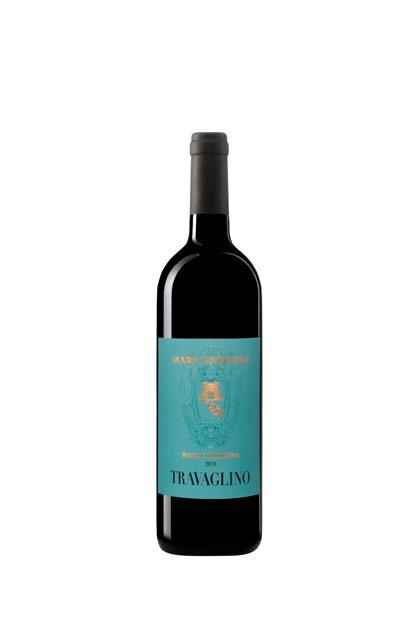
59 GAMBERO ROSSO GAMBERO ROSSO X TRAVAGLINO NOVEMBER-DECEMBER 2022
something we are focussing on a lot and for now we are mainly pres ent in the United States, Japan and Canada.”
Another point on which Travagli no bets a lot is wine tourism and hospitality; Alessandro is in charge of this mostly: “I want to say that Travaglino is a company that has been open 7 days a week for 20 years, for visits and tastings by appointment.” And he continues: “We also own a small inn with 5 bedrooms and a restaurant in the centre of Calvignano, 500 metres from the estate. In collaboration with the managers we organise lunches with wine pairings. Those who come to us can stop and sleep and then can leisurely discover the Oltrepò Pavese. We always rec ommend visiting other wineries. Above all we try to make other sup ply chains known including salumi, cheese and vegetables. We have seen that those who come to us want to discover the specialties of the area: there are the cheeses of the Staffora Valley, there are great producers of goat cheese, the saf fron from Mornico and Zavattarel lo, the mustard from Voghera, the pepper from Voghera, the ber rettina pumpkin from Lungavilla. And then we are one of the Italian homelands of truffles. It’s a territo ry to discover; wine tourism-wise we are at the beginning, but ours is a strategic position; we are not far from Milan, Turin, Genoa.

An aspect we have to in vest.” And he concludes:
Travaglino Località Travaglino, 6 Calvignano (PV) - 0383 872222 - www.travaglino.com/
is the beauty and usability of this territory. The lodging aspect must also be developed, we should bring as many people as possible here. We must ensure that everyone learns about our hills. We’re working on it.” GAMBERO ROSSO X TRAVAGLINO NOVEMBER-DECEMBER 2022
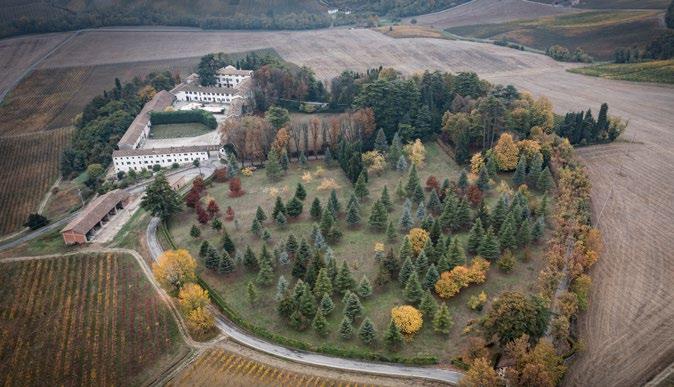

“Oltrepò Pavese is a very large and very heterogeneous territory. It is correct to have “various Oltrepò Pavese,” but a common thread should be found that unites them all. What everyone should focus on 60 GAMBERO ROSSO
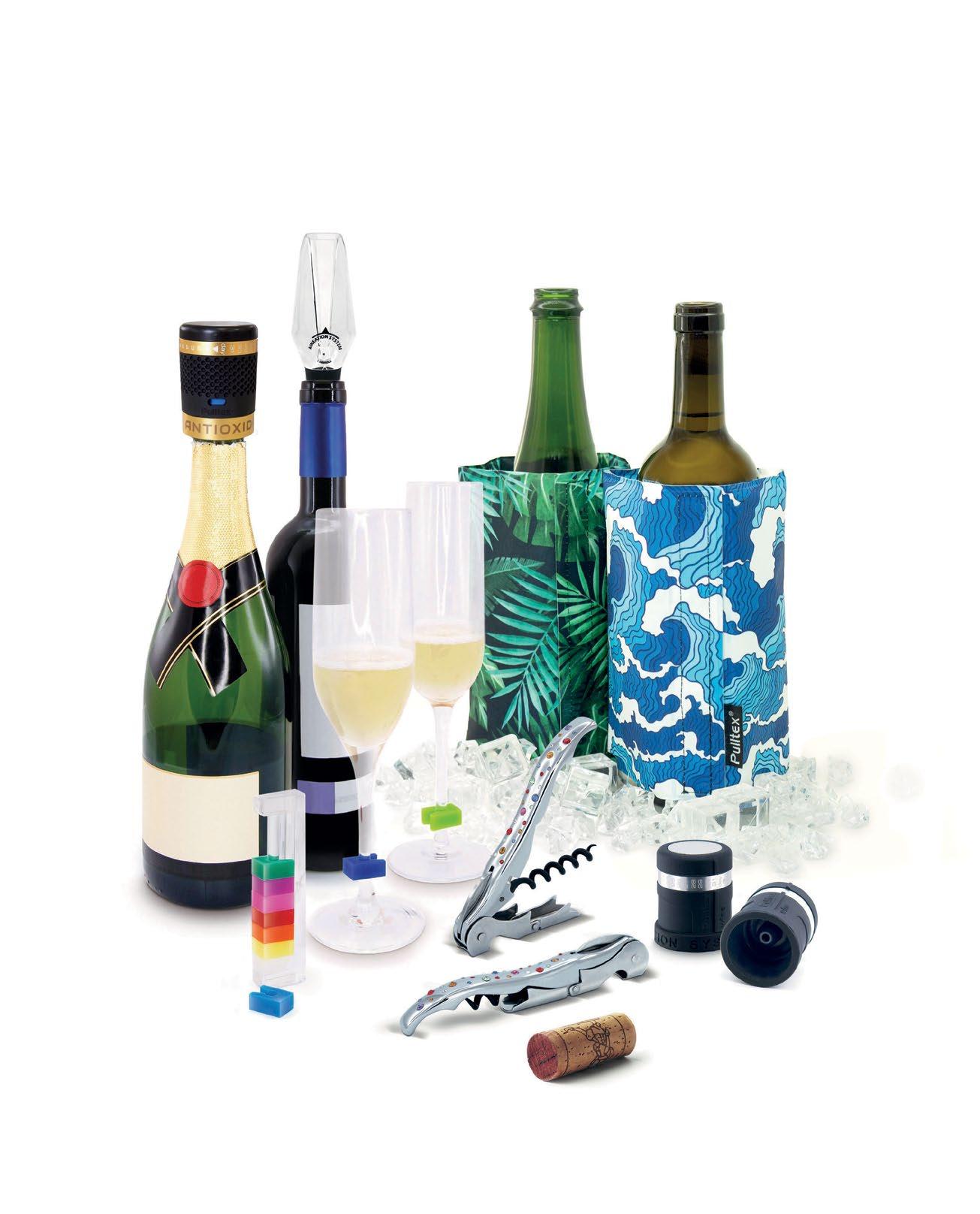
www.pulltex.com

Planet wine is in excellent shape: we say this on the basis of numbers and figures that we process every year, the result of field work carried out by our amazing team: over 70 people who for months have travelled far and wide around the beautiful country tasting and evaluating thousands and thousands of wines with the aim of crafting the just published Vini d'Italia 2023 guide. Presenting the 12 champions of this edition

455 TRE BICCHIERI 2,000 FINALIST LABELS 27,000 REVIEWS VINI D’ITALIA 2023 DRAWS THE NEW
OF THE BEST WINE
by Marco Sabellico, Gianni Fabrizio, Giuseppe Carrus art by Gaia Guarino
MAP
MAKERS
This year, about 46,000 labels were tasted by our 70 collaborators, over the course of approximately 6 months of work. Of these, about 27,000 are reviewed in the 36th edi tion of the Gambero Rosso Vini d'Italia guide, just published and available at newsstands and in bookstores, as well as on our website. It must be said that 36 years, at the speed at which society is evolving today, is equivalent to a couple of geological eras. So we decided to slow down a little and focus on substance and values. To begin with, this year we awarded 455 wines: a significantly lower number than the last edition.
THE QUALITY OF THE ITALY VINEYARD IS GROWING
A generalised decline in quality? No, far from it. The level of Italy's oenology, harvest after harvest, is growing. About 2,000 wines were deemed worthy of participating in our final tastings, where however the commission slightly raised the bar for assigning the covet ed recognition. In short, the gate has become a little narrower, but this was only done to pro tect the value of recognition, which continues to have an important weight in Italy as in the rest of the world, and this is also thanks to the translation we publish every year in German, English, Chinese and Japanese, and to an in credible promotion work that we have been carrying out for years and which sees us as protagonists, with the best producers, in over 40 highly attended events worldwide. We were talking about the wines that reached the final: that in reality they are "only" the tip of the ice berg: the emerged part is minimal compared to the submerged one, which is seven to ten times the size.
THREE THOUSAND WINERIES WERE REVIEWED
So the months of work that precede the re lease of the guide are an incredible whirlwind of tasters around Italy who collect samples, organise them, taste them blind, of course. But they also visit many wineries and completely
rewrite the copy and update the information of almost 3,000 wineries: what we believe are the elite of our wine scene. And these are not ephemeral impressions: they are information and evaluations we have recorded in the field and that are destined to make a statement also for the future on the state of the art in our sec tor. After all, we are writing for the consumer: our readers - in Italy as around the world - are enthusiasts who trust our evaluations and rat ing system, and who want to get to know the beautiful world of wine more closely. So, for the past 36 years we have continued to be an oenological Baedeker guiding the travels and purchases of thousands and thousands of con sumers and enthusiasts. Certainly, and also obvious, this great analysis and rating work has also become a precious tool for professionals in the sector who are looking for labels and producers on which to focus and invest. One thing, however, that does not distract us from our mission, which does guide our choice toward companies crunch ing large numbers to the detriment of those who instead bottle smallrun labels: we have no preconceived positions and we continue to taste both the great classics and the little big wines from rare and quasi un known grapes; glasses from large companies as ones from small producers; just browse the pag es of the guide and see for yourself.
The level of Italy’s oenology is growing. The 2,000 finalist wines are actually "only" the tip of the iceberg: the emerged part is minimal compared to the submerged one, which is ten times the size
RESEARCH AND TERRITORIAL ENLARGEMENT
In our research work and in the effort to taste and review as many wines as possible, a few years ago we opened the guide to producers from nearby Ticino, Switzerland. An operation appreciated by many, in Switzerland as in Italy, which continues to be quite successful. In the wake of this experience, this year we decided to dedicate our attention to another border area as well, the Slovenian Brda, which is nothing more than the continuation of the soft reliefs of the Collio, receiving continuous invitations from both the invitation of domestic enthu siasts as well as the many talented Slovenian
NOVEMBER-DECEMBER 2022 64 GAMBERO ROSSO STORIES
producers that share climate, land, grape vari eties, dialect and in many cases even kinship with their Italian counterparts. Borders, after all, are nothing more than a mere convention. We leave you to the pages of the Guide with a quote from Khalil Gibran: "Should you sit upon a cloud you would not see the boundary line between one country and another, nor the boundary stone between a farm and a farm. It is a pity you cannot sit upon a cloud." Who knows, maybe we even managed to for a little while..
CHAMPIONS OF 2023
And here are the special prizes that encapsu late the philosophy of our year of work and re search amid labels and vineyards. The Bubbles of the Year Award goes to Fran ciacorta thanks to the extraordinary elegance of Mosnel's Pas Dosé Parosé '16 cuvée, which makes the most of the exceptional vintage even in terms of the Classic Method, for an enchant ing, rarefied and pure version. The White of the Year takes us to the Marche region: this is the refined and multifaceted Castelli di Jesi Verdicchio Classico San Paolo Riserva '19, by Pievalta, a winery that has always been com mitted to serious thinking on sustainability issues. Travelling back to Lombardy, but in this case on the shores of Lake Garda, with the Rosé of the Year: the essential and very fine Riviera del Garda Classico Valtènesi Chi aretto Lettera C '20 by Pasini San Giovanni is proposed as a true stylistic reference model for those looking for delicate and aromatic rosés. The Red of the Year is Dievole's Chianti Clas sico Petrignano '19, an airy and deep wine that highlights the characteristics of an area with a high density of rock and limestone. The Adri atic sees the Best Value for Money: Abruzzo Pecorino '21 by Tenuta Terraviva, confirming a growing denomination in terms of sales and quality; you will find this white in Italian wine shops for around 10 euros. The Sustainable Viticulture Award goes to the Umbria com pany Arnaldo Caprai, which was a pioneer of the movement and continues to offer cut ting-edge projects and visions. A visit to the cel lar with Marco Caprai is enough to experience
first-hand what we are talking about. Piemonte takes home the Emerging Winery Award thanks to Lodali, who for the first time enters the Olympus of Tre Bicchieri with their Bar baresco Lorens '19. The winery led by Walter has made a clear leap in quality and has every thing in order to grow steadily and gradually. The Award for Winemaker of the Year goes to Giovanna Maccario, who in the territory of Dolceacqua, in Liguria, works together with her husband Goetz Dringenberg with terraces that are very difficult to grow grapes on, giving us fine, fascinating, exquisitely territorial wines. We must reach the only penitentiary island in Europe, Gorgona, for the Solidarity Project Award that goes to Frescobaldi for the virtu ous work carried out with the Istituto di Pena di Gorgona penitentiary, which allows inmates to have a concrete experience in the field of viticulture, recovering old grape varieties and giving light to wines that, among other things, are very good. For 25 years of great work car ried out in the Salento area by Angelo Maci, the Cooperative of the Year award goes to Due Palme. The Winery of the Year Award is bestowed to Bertani, who continues to update and enhance a very long winemaking tradition, with a style that has never succumbed to the flattery of the market but has always given val ue to the profile of traditional grapes, declined both fresh and dried for dessert wines, enhanc ing its aromatic qualities and finesse of taste. We close our review of special prizes with the Sweet Wine of the Year, Decugnano dei Bar bi's Orvieto Classico Superiore Muffa Nobile Pourriture Noble '20, another label that fully enhances the pedoclimatic characteristics of a great white wine territory. In the following pag es you will also find the Tre Bicchieri Verdi, be longing to certified organic or biodynamic win eries, precisely 154 this year, never so many, a number that certifies the growing attention of Italian wineries towards the environment and its protection. Finally, we would like to point out (published on the following pages) the Tre Bicchieri that can be purchased in a wine shop within 15 euros, which this year are 67 includ ing 6 sold under 10 euros.
Vini d'Italia 2023 by Gambero Rosso pages 1072 price 30 euro on sale on gamberorosso.it
2626 PRODUTTORI 25421 VINI 455 TRE BICCHIERI 154 TRE BICCHIERI VERDI 67 TRE BICCHIERI SOTTO I 15 EURO VINI
PERIODICITÀ ANNUALE
D'ITALIA 2023
NOVEMBER-DECEMBER 2022 65 GAMBERO ROSSO VINI D’ITALIA 2023
SPECIAL AWARDS. THE BEST ON THE GUIDE
WINERY OF THE YEAR Bertani Grezzana (VR)
Bertani is one of the great Italian brands by right: a com pany that since the first harvest has pursued an idea of quality that is respectful of the territory, its grapes and its traditions. After 150 harvests Bertani is the history of Amarone and even more of Valpolicella , a territory that has only known success in the last thirty years but which has always had a sure beacon in the Grezzana company. Since 2011, the Angelini family has taken control of it and with the technical direction of Andrea Lonardi has been able to renew the role of leader not only with its symbolic wine, Amarone Classico, but by exploring the great poten tial of the wines most linked to territory and less to the technique, such as Valpolicella and Valpolicella Superiore. «Bertani is an icon of Italian wine - says Andrea Lonardifor this reason each of his wines must be conceived and prepared with this expectation. When a new wine is staged
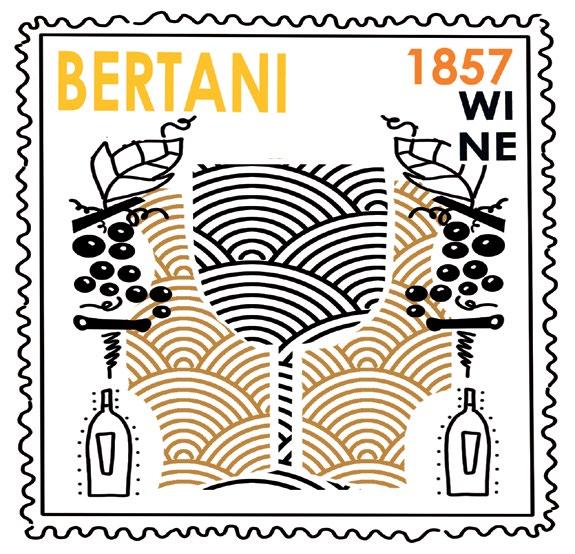
in a company like this, it is like the premiere of the Opera, you know you can't beat it ". An obstacle course that has forced the company to clash daily with an agricultural fab ric strongly rooted in its traditions and therefore not in clined to renewal, and with a market - precisely because it is very young - fascinated by its most impactful and wellknown wine, reluctant to explore its subtlest and hidden ravines made of subtlety, dynamism, tension. The Bertani Cru project - born about ten years ago, but only materi alised in 2019 - constitutes the cornerstone of the cultural and oenological renewal of Valpolicella: a sort of point of no return in which the different profile of the wines is fi nally read unequivocally of this wonderful territory. The fresher wines, free from the practice of drying, highlight the more elegant and agile profile of the historical grapes, enhancing the differences that the numerous valleys, ex posures and vineyards can offer while Amarone expresses the same average values with depth and stratification. however, from the skills of man and from the interpreta tion he makes of tradition, giving life to a wine that sounds on a completely different score. It might seem like Colum bus's egg, but for Valpolicella this is a real revolution. «One hundred and fifty years of history have shaped the many aspects of Bertani - explains Lonardi - We believe in shar ing within a cohesive and motivated work group towards increasingly ambitious goals; we work every day with ob sessive respect for our brand and for those who have con tributed to making it so. We raise young talents under the banner of an insatiable desire to always be original, iden tifying and recognisable: this creates a pure and genuine adrenaline that only some wine brands can lend. But above all we do not follow fashions or market trends. We work exclusively to enhance the territory with a faithful and recogniseable style.»
Nicola Frasson
Bertani Grezzana (VR) – via Asiago, 1 0458658444 – bertani.net
NOVEMBER-DECEMBER 2022 66 GAMBERO ROSSO STORIES
RED OF THE YEAR
Chianti Classico Petrignano ’20 — Dievole Castelnuovo Berardenga (SI)
The Red of the year 2023 - conquered by Dievole's Chianti Classico Petrignano '20 - is not just an award given to an impeccable wine, but to "an idea of wine": it must bring us within a territory through the flavours and aromas of that place (and only that, but just that) land.
«In our project - explains Stefano Capurzo, CEO of the Ale jandro Bulgheroni Family Vineyards Italia group - we have put the expression of a territory with great personality at the centre. And to bring out the originality we decided to work more in the vineyard and less in the cellar, relying on essen tial and traditional techniques such as vinification with stems. Petrignano will be joined by two other Crus: Casano va, from the company's highest vineyards planted in 2017 on sandy soils facing north-west and all focussed at elegance; and Catignano, from vineyards planted in 2008 and 2015 facing south to create a more Mediterranean character.» Since the mid-Eighties the company from Castelnuovo Be
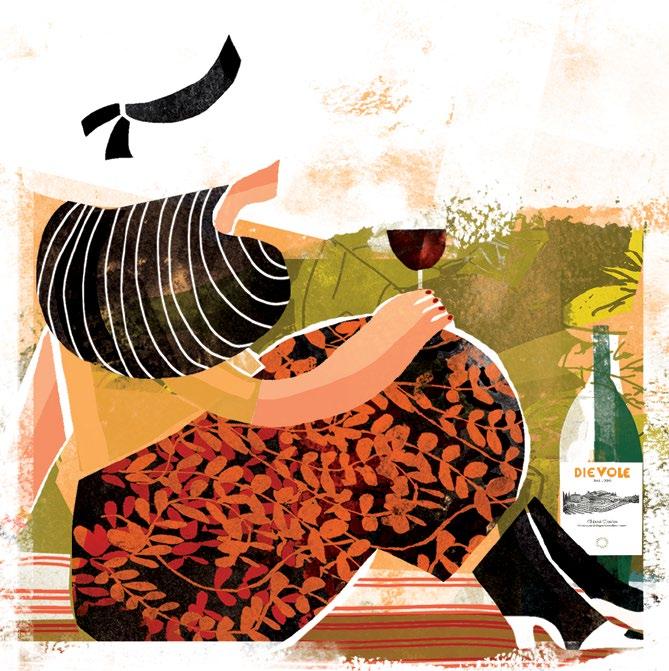
rardenga has been travelling through the history of Chianti Classico, but af ter the arrival of the Alejandro Bul gheroni Family Vineyards (2012) it has flourished in a sort of Renaissance. Di evole, 153 hectares of organic vine yards between 270 and 420 metres above sea level, is located in Vagliagli: a village close to Siena whose wine growing importance was already con firmed since 1924 in the deed of incor poration of the Consortium for the Defence of Typical Chianti Wine and its brand of origin. A value recognised even today with its inclusion among the 11 Additional Geographical Units, proposed by Consorzio del Gallo Nero. Chianti Classico Petrignano '20, pure Sangiovese aged for 12 months in large untoasted oak, has a strong character and sober execution: its aromas refer to pomegranate and violets, with woody and spicy touches in the finish. In the mouth, the sip is rich but not dense, fragrant and lively, the kind that immediately requires another. «Petrignano is a Cru planted in 2014underlines Capurzo - it is located on the company hill overlooking the Val d'Arbia, where its slopes cross the calcareous soils of Mount Morello and the sediments of Macigno del Chianti: it com bines elegance in the glass from the former and solidity coming from the latter.»
In Italy Alejandro Bulgheroni, President of Pan American Energy, also owns Poggio Landi and Podere Brizio in Montal cino, Meraviglia and Le Colonne in Bolgheri. The Argentine magnate also includes the winegrowing realities of Bodega Garzón (Uruguay), Vistalba, Cruz de Piedra, Pacheco Pereda, Cuesta del Madero and Otronia (Argentina), Château de Lan galerie and Château Suau (Bordeaux), Renwood and Alejan dro Bulgheroni Estate (USA), and Greenock Farm (Australia).
Dievole Castelnuovo Berardenga (SI) loc. Dievole 6 0577322613 - dievole.it
NOVEMBER-DECEMBER 2022 67 GAMBERO ROSSO VINI D’ITALIA 2023
WHITE OF THE YEAR
Castelli di Jesi Verdicchio Class. San Paolo Ris. ‘19 — Pievalta Maiolati Spontini (AN)
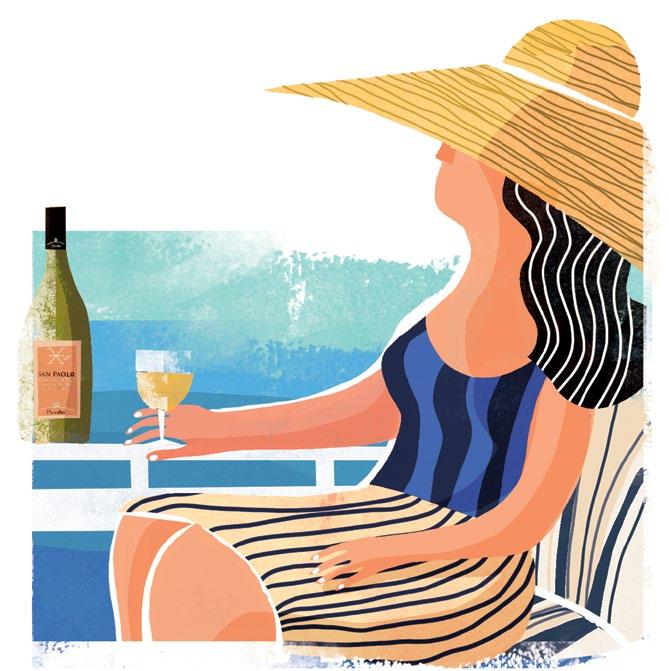
The hill that divides San Paolo di Jesi from Cupramontana is somewhat pompously called "Monte" Follonica, probably due to its round summit conquered by a grove of oaks and surrounded as a crown by tufts of broom. Silvano Brescianini , CEO of Barone Pizzini, came here in search of other vineyards to buy after hav ing taken over a plot in 2002 on the other side of the Esino river, where Pievalta was born, the Marche proj ect of the Franciacorta company. «The Castelli di Jesi is an exception al area where there is wine culture, art, cuisine, the Adriatic Sea not far away and the Apennines around the corner,» explains Brescianini. Well advised, he soon realised that the vineyard to be conducted organical ly clinging to the north-east side was just right for the case: fresh ly ing, sandstone bottom with good presence of limestone that the root system must cross in depth to obtain nutritious elements, challenging slopes when pruning and harvesting but which then yield wonderful grapes. With Alessandro Fenino , the young Milanese called to direct Barone Pizzini's Jesi seg ment, it was decided to make it a cru for a Riserva dedi cated to the municipality that hosts the vineyards. The first harvest was in 2003. In the years to come, San Paolo underwent a phase of tests and experiments: from the use of barrique to the combination of harvested overripe grapes, partly also affected by noble rot. There are three salient points in his career: in 2005 the winery switched to biodynamics and renounced ageing in oak; in 2009 the grapes were vinified slightly earlier or in a perfect state of ripeness; in 2015 they stopped using selected yeasts. The devastating hailstorm of September 1st, 2018 at the end of what promised to be an excellent harvest, once again changed the fate of the label. «That disaster is partly the father of San Paolo 2019,» Alessandro recalls. Continuous attention to that wounded vineyard led to «a new phase of Pievalta in which greater awareness sug
Pievalta Maiolati Spontini (AN) fraz. Monteschiavo, 18 0731705199 pievalta.it - baronepizzini.it
gested the use of tools that were not previously used, such as the large wooden barrel and concrete tanks.» The taste reveals a white of great expressiveness, ele gance, with a quiet energy that from the most intimate descriptors of Verdicchio such as anise, almond, wild fennel and a citrus in the background turn into a tena cious and brackish finish, rich in nuances, and very deep.
NOVEMBER-DECEMBER 2022 68 GAMBERO ROSSO STORIES
Pier Paolo Rastelli
BUBBLES OF THE YEAR

Franciacorta Pas Rosé Pas Dosé ‘16 — il Mosnel Camignone (BS)
«They looked at us like Martians.» Starts Lucia Barzanò begins, at the helm of the winery with her brother Giulio, the fifth generation of the family. The company is located in a sixteenth-century hilltop village, en tirely surrounded by its own vine yards, 41 hectares cultivated organi cally. All the cuvées mature, at least partially, in oak as in the case of our Bubbles of the Year: the 2016 Fran ciacorta Pas Rosé Pas Dosé . «I re member the faces well when we presented it for the first time in Mi lan, in 2004: super light colour, at the time wines were all loaded and fragrant. In addition, from the begin ning we had not added dosage: at the time we were the only rosé pas dosé in Franciacorta and among the very few in Italy. This award is an im mense satisfaction.» The formula has never changed: 70% pinot nero and 30% chardonnay, with the vine yards mainly facing east and southeast. The first vintage produced was 2001, while 2017 skipped due to se vere frost. What is so special about the 2016 version? «I find it very juicy, it reminds me a lot of 2008 for its softness and pleasant ness. I find it just as it should be, it fully represents our idea of the identity of our grapes.» A pure and polite sty listic code, of extraordinary overall harmony, may we add. The production is divided into 7,000 bottles per year, the cost is about 50 euros in the wine shop. We highly recommend a visit to the winery: the silence of the cu vées that rest in the cellar under the solemn vaults dating back to the 1500s is unforgettable. And now some advice regarding the table. «The following anecdote is true. When we tasted it for the first time at the volée, we had roast beef in the kitchen - says Lucia - So we cut it, still warm, pure English style, and it was truly a perfect match. Even today we like to pair the wine with rare meat, even beef in oil or a Brescia-style assorted spit roasted meats.»
In the tasting it was difficult to choose: even the Franci acorta EBB '16 scored very high ratings, like the Satèn '18
and the Franciacorta Re-edition Riserva '07. Our applause also goes to oenologist Flavio Polenghi . Finally, it was Pas Rosé '16 that hit the finish line: it is enchanting for its aromatic purity; it is delicately balsamic, with very fine aromas of orange peel and withered flowers. In the mouth it fits like a glove, the bubble is silky and infiltrat ing: tones of anise, coffee and rose dance with rare class. Not just Tre Bicchieri: for us it is the Bubbles of the Year.
Lorenzo Ruggeri
il Mosnel Camignone (BS) c.da Barboglio, 14 via G.C. Abba, 38 030653117 – mosnel.com
NOVEMBER-DECEMBER 2022 69 GAMBERO ROSSO VINI D’ITALIA 2023
ROSÈ OF THE YEAR
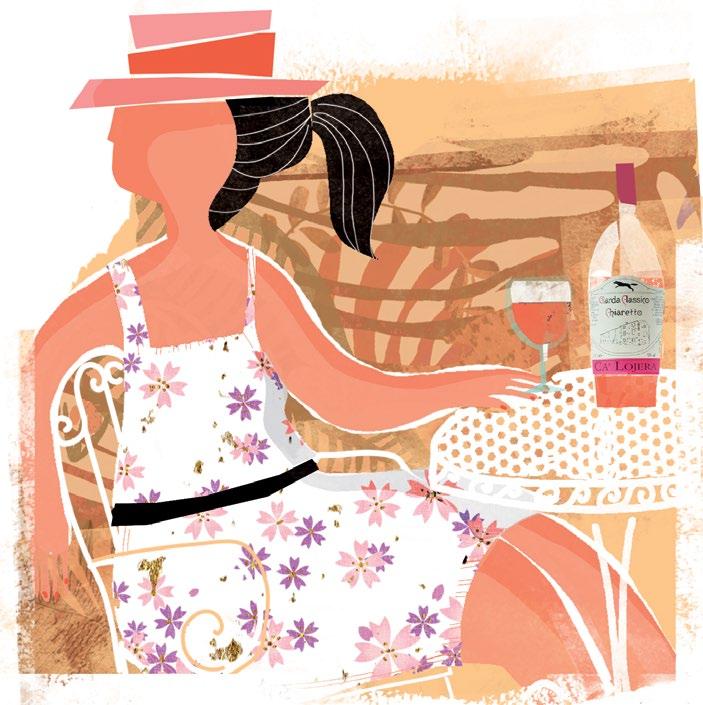
Riviera del Garda Classico Valtènesi Chiaretto Lettera C ’20 — Pasini San Giovanni Raffa (BS)
Lettera C '20 by Pasini is a spectacular wine. It has a very pale and bright pink colour, and in the glass it opens with unexpected elegance, intensity and finesse for a type that until a few years ago was considered "minor" in the way of great wines. But some time ago, from the shores of Lake Garda, an important challenge started from Valtè nesi, which is redesigning the hierarchies of the territory. «We are not children of fashion - tells us Paolo Pasini who with his cousins Luca, Sara and Laura is at the helm of the family business - rosé has always been at home in our territory: since 1896 Chiaretto (which was then by Moniga) collects accolades in Italy and around the world. But in recent years, thanks to the commitment of our companies, the spotlight has once again turned on this wine.» Deservedly, we say, thanks to a great deal of work on the terroir, on the groppello grape and on the winemaking techniques carried out with en thusiasm by the wineries of the appellation. Years of research and experiments on grapes, con tainers and winemaking systems that involved the Pasini family like other companies, and which led to a sort of revolution in the world of Italian rosé. All this gives us wines of extraordinary texture and elegance, capable of defying time, just like the Lettera C. «C is for Chiaretto, C is for cinquantotto (fifty-eight) the year the company was founded, C for Ceramica (the wine is vini
fied and matures in ceramic barrels), and C is for circle, which represents harmony, but with drawn in free hand, open to evolution…» explains Paolo. A research wine, in short, from groppello in purity - from the oldest vine yards of the winery - which rests for a long time on the fine lees and thanks to micro-oxygenation it acquires that clarity and that expressive depth that make it a great wine, among the best expressions of the northernmost corner of the Mediterranean. A stratified, vertical wine, which comes out two years after the harvest, capable of giving sensations of extraordinary fruity freshness and great drinkability. But also capable of lasting years in the bottle. Impossible not to reward it.
Marco Sabellico
Pasini San Giovanni Raffa (BS) via Videlle, 2 0365651419 pasinisangiovanni.it
NOVEMBER-DECEMBER 2022 70 GAMBERO ROSSO STORIES
Orvieto
SWEET WINE OF THE YEAR
Cl. Sup.
Muffa Nobile Pourriture Noble ’20 — Decugnano dei Barbi Orvieto (TR)

Obtained from grechetto and sauvignon, Pourriture Noble imme diately strikes for its complex, persistent and clear olfactory notes that play on ripe fruits, yellow flowers, sweet spices, with a touch of saffron and candied citrus of great charm. The mouth is sweet, but never cloying, fresh with acidity and a savoury, deep finish. Great drinkability, elegant and smooth, which leaves its mark. A wine that makes a fool of France in the name, but not only... But let's tell the beautiful story of this Umbrian winery but with partic ular ancestry... «Decugnano - says Enzo Barbi, now at the head of the estate - was born in 1973. My father was from Brescia, he was already working in his father's cellar and decided to buy some land in Orvieto. The wine that was produced there was already recognised as vino di Orvieto. He had fallen in love with that part of Umbria to such an extent that he decided to become a wine
maker, thinking of producing high quality wine, as he had seen done in France.» Enzo remembers with emotion the steps taken by his father since the seventies. «The farm I bought at the time was abandoned. It was called Decugnano and thus the name De cugnano dei Barbi was born. There were few vineyards, others were planted and shortly thereafter, in 1978, the first harvest was carried out. It gave rise to three wines, an Orvieto Bianco, a Rosso and a Metodo Classico, wines that still represent our production.» Noting how almost 50 years ago Claudio Barbi thought of a Clas sic Method, makes us understand the vision, preparation and winemaking culture of a man who knew well the great wines of France, Champagne, but also Burgundy, Bordeaux and… Sau ternes. «It was in 1981 that the first vintage of Pourriture Noble was released.» Another great vision of the founder: in his travels Claudio Barbi came to know botrytis and above all the great sweet wines from Sau vignon and semillon grapes produced in Sauternes. «My father did not know what to call that wine, at that time nobody did noble rot. However, he noticed that, due to the particular microclimate of the vine yards not far from Lake Corbara, the grapes were attacked by these particular moulds. He thus chose to call it as the French called these particular wines: those who do not know about wine will think it is a French wine and will buy it for sure, said dad jok ing.» Three thousand bottles were made, all 0.75, no half bottles. And since then it has only been produced in years in which noble moulds attack the grapes, with a very irregular production: just over 15 vintages have come out in 40 years. Of the 2020, the awarded vintage, only 2,000 bottles were produced. It is a wine that must be redis covered, also by virtue of the pairings it can support. Not just with desserts, at the end of a meal, on the contrary. «With a great gorgonzola it is the best.»
Giuseppe Carrus
Decugnano dei Barbi Orvieto (TR) loc. Fossatello, 50 0763308255 decugnanodeibarbi.com
NOVEMBER-DECEMBER 2022 71 GAMBERO ROSSO VINI D’ITALIA 2023
BEST VALUE FOR MONEY
Abruzzo Pecorino '21 — Tenuta Terraviva Tortoreto (TE)
«In 2016, as soon as I returned from university, I decided to start working with my parents in the winery. One day I was at my computer, in silence, when I received an email informing us of our first Tre Bicchieri for the Montepulcia no Luì. It's hard to forget the emotion of the first Tre Bic chieri. But the Special Prize is something much much big ger.» And certainly Federica Topi does not hide this emotion. Together with her mother Pina Marano and her father Pietro, Federica is at the helm of Tenuta Terraviva , one of the wineries in the best shape in the Abruzzo wine scene. This year we awarded them the special prize for the Best Value for Money: the Abruzzo Pecorino '21 that won us over with a wholesome olfactory profile, with vaguely rustic features of grains combined with a fragrant sensation of citrus pulp on a mouth tinged with savoury tumults. It is a great white wine offered for just over 10 euro per bottle. The company was founded in the Seven
ties, when Gabriele Marano decided to buy the first plots on the hills of Tortoreto. In 1998 they made the choice to produce organic grapes. Ten years later, the decision to create their own brand and start bottling the fruit of their work. One of the win ery's turning points was the arrival as a consultant, in 2014, of Francesco Bordini who brought a new ap proach. «With his help - says Federica - we began to work on greater atten tion to the harvest, we understood how to bring ever healthier grapes to the cellar and how to make wine while respecting the grapes and re specting the territory. Obviously there have also been technical changes: by now we have almost completely abandoned oak ageing, which we only use on Trebbiano Ma rio's and on the Montepulciano Luì, in favour of concrete. Spontaneous fermentations and indigenous yeasts, on the other hand, have always been part of our production background.» And the price is also no coincidence: «Offering identity and good wines at a value price has always been part of our policy. We have always made sure that our wines could be drunk by everyone, trying to offer high quality. This award reassures us that we are on the right path - she smiles - during the presentation of the 2017 Guide, when we won our first Tre Bicchieri, I thought "who knows what it will be like to go up on that stage to receive a Special Prize?" In that edition the Best Value for Money award went to another Pecorino from Abruzzo, made by Cristia na Tiberio. I'm happy this time it's our turn!»
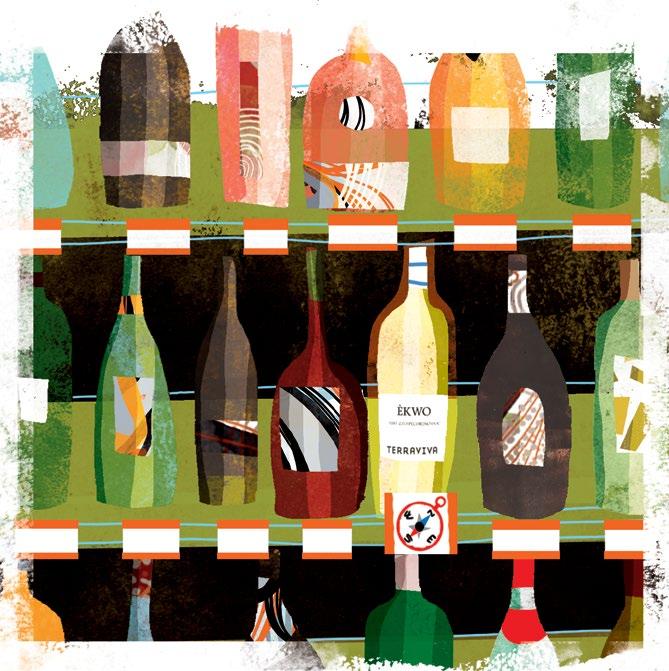 William Pregentelli
William Pregentelli
Tenuta Terraviva Tortoreto (TE) – via del Lago, 19/l tenutaterraviva.it
NOVEMBER-DECEMBER 2022 72 GAMBERO ROSSO STORIES
SUSTAINABLE VITICULTURE

Arnaldo Caprai Montefalco (PG)
We recite the Mea culpa: we should have rewarded this winery years ago, when this recognition was introduced in the Guide. Marco Caprai is not a par venu in the sector, he is not one to ride on electric machines among the rows, very greenwashing. At Caprai, sustain ability protocols have been applied for twenty years, and this is not just chit chat. Every year the winery publishes a sustainability report of over 50 pages. «In the early 2000s, on a trip to the USA, I saw that Californian winemakers were already on the issue, and not only tack ling it from an environmental point of view: Since then it's been a continuous research, for us at Caprai, but we imme diately understood that this journey cannot be undertaken alone, and that everyone must be involved: other vine yards, the territory, institutions. And if the demand for sustainability arises ini tially due to an environmental emer gency, it cannot be limited only to that milieu.» Marco is not a champion of or ganic or biodynamic agriculture: «I be lieve in technology, in scientific re search, in innovation: if today the organic surfaces have grown dramati cally in winemaking, we're also recording an exponential growth in the pathologies of the vine. We look at the problem too closely. We don't need slogans, but scientific data.» So while carrying out studies and experiments that projected Sa grantino di Montefalco among the great Italian wines and gave it international resonance (before its success, Sagrantino was produced in small quantities and was mostly consumed locally), Caprai involved universities and researchers, and has become a field of advanced experimentation. By involving the territory, all the wineries in the supply chain, up to the New Green Revolution a few years ago that led the Montefalco de nomination to use 75% less pesticides thanks to the most modern scientific tools. «The new technologies for collecting data in the fields allow us exact predictions on the onset of diseases... Big Data allows agriculture with a very low impact, but productive and sustainable, economically, for wineries.» Many good practices together make up sustainability, and in
Arnaldo Caprai
Montefalco (PG) – loc. Torre 0742378802 – arnaldocaprai.it
this Caprai is a model: just think that since 2016 most of the workers hired by the company are asylum seekers who are classified as agricultural workers, and trained through contin uous courses. This is just a hint of why we chose Caprai this year. There is much more to what they do, and we want to let you discover it on a visit to the winery or in the surroundings. Don't forget, however, that Montefalco Sagrantino and Rosso di Montefalco are not only beautiful to think about but… they're also very good to drink.
Marco Sabellico
NOVEMBER-DECEMBER 2022 73 GAMBERO ROSSO VINI D’ITALIA 2023
COOPERATIVE OF THE YEAR
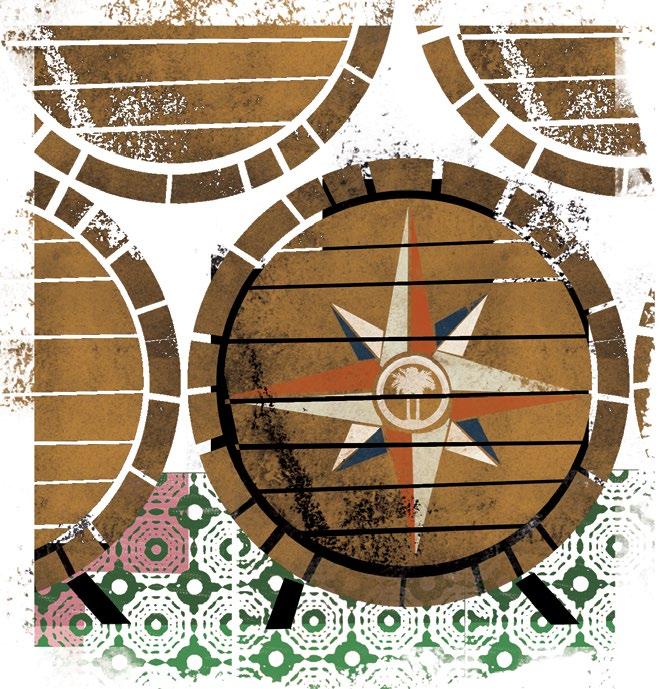
Cantine Due Palme
Cellino San Marco (BR)
Cantine
It was a journey of just over thirty years that led Due Palme to become one of the most important wineries in the Puglia wine scene but also nationally. «I founded this company in 1989 - Angelo Maci tells us - I was its Presi dent until last November when I gave way to Melissa. Ob viously I have not retired; I am too attached to this reali ty.» Third generation of winemakers, at the end of the 1980s, Angelo Maci decided to leave his farms precisely to enhance the idea of cooperation: «I was born as a private producer in 1971, inheriting my mother's cellar; then in 1989 I focused on cooperation. I thought: "alone I can win, but together we can win better." And I saw that our territory is made up of very divided properties; I thought of putting together all these small winemakers, who alone would have had no hope of survival. It was a way to allow all of them to receive fair compensation for working in
the fields; an opportunity to share value, to share wealth, reviving Pug lia viticulture. A peasant civilization like ours, which has been growing grapes for millennia, needed a choral work in order to to be revived.» Due Palme can count on the strength of 1,000 winegrowers who look after 3,000 hectares of vineyards, many of which are alberello-trained, which produce about 250,000 quintals of grapes processed in the two produc tion centres of Cellino San Marco and Lizzano. The range of products is really wide, divided into about for ty labels, mainly centred on red wines from indigenous grapes, good technical workmanship, reliable and with a typically Mediterranean char acter. Among the other labels, this year the great 2020 version of 1943 of the President stands out, a blend of primitivo and Aglianico. But it is a sumptuous Salice Salentino Rosso Selvarossa Riserva '19 that really steals the show: rich, deep, harmonious and articulated, it easily wins the Tre Bicchieri.
«We immediately focused on quality, in a period in which the Puglia cooperatives were losing ground: in these 30 years we have invested over 150 million euros in ad vanced production technologies capable of guaranteeing a product of the highest quality,» smiles Angelo. And in actual fact, the commitment paid off.
Pregentelli
Due Palme Cellino San Marco (BR) via San Marco, 130 cantineduepalme.it
NOVEMBER-DECEMBER 2022 74 GAMBERO ROSSO STORIES
William
EMERGING WINERY OF THE YEAR Lodali
Treiso (CN)
In his heart, Walter Lodali had always promised his father: "I will bring the winery you left me to the top of quality!" And he has shared this promise, from an early age, with his mother Rita who raised him while she also took care of managing her winery alone, due to the sudden death of her husband. So Walter, year after year, learning from his mistakes, has under stood how to enhance the Nebbiolo which comes exclusively from the family vineyards, all around Treiso, which his father Lorenzo had left him as an inheritance. The journey was nei ther short nor easy, but finally, having abandoned the search for concentrations, Walter began to enhance the elegance and authenticity of the grape which, in Barbaresco Lorens '19 (from the name of the father who is also linked to all the other selections, namely Barolo, Barbera and Chardonnay) is a per fect synthesis with wonderful and modern refinement thanks also to the beautiful spicy notes with hints of licorice, ripe plum and violet.
«I read my dad's school notebooks in which he wrote that he dreamed of making good wine to be tasted all over the world. These reflections certainly influenced me, only at the begin ning I was in too much of a hurry to get there by getting ahead of myself, skipping ahead... Now everything is much clearer to me and I must admit that it is also much more co herent: there are no shorter routes in the countryside, nor in
the cellar and not even on the markets. The persevering daily work in the vineyard, but also in winemaking, where we have continually invested in technology and precious oak barrels as neutral as possible, and staying as close as possible to those who offer our wines to customers are part of our recipe of quality - says Walter - I must specify, in truth, that this goal alone, which is certainly not a point of arrival, but more pre cisely a very important stage in our growth, that I never would have reached: it is for this that I want to share with those who help me face and solve problems every day. Even those of the last year when we 'gutted' the cellar in order to enlarge the production area, but which cost everyone a huge effort living and working in a never-ending 'construction site'»
The company produces about 100,000 bottles from 16 hect ares of property and being a historic winery, founded in 1939 by his grandfather Giovanni, it is also one of the few that is allowed to make Barolo grapes from the vineyards of Roddi, outside the DOCG.
Gianni Fabrizio
Lodali Walter Treiso (CN) – v.le Rimembranza, 5 0173638109 – lodali.it
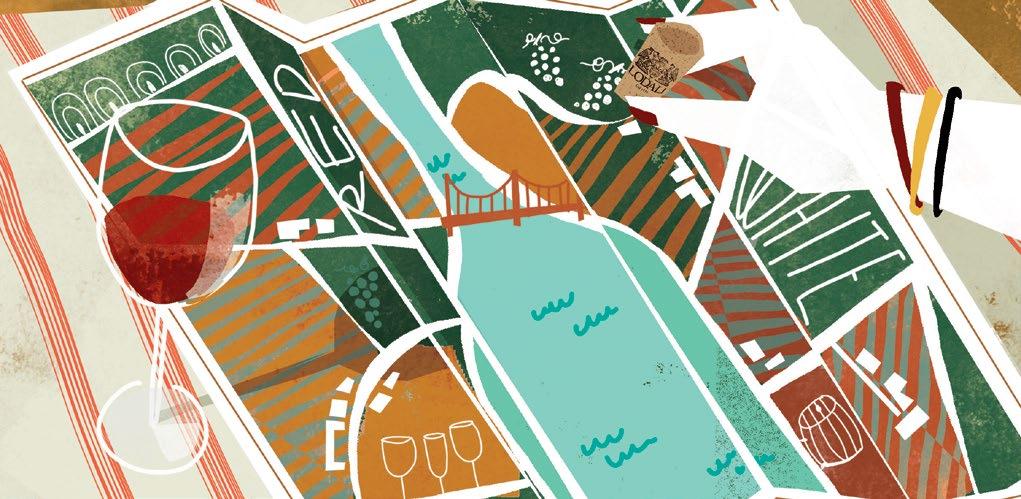
NOVEMBER-DECEMBER 2022 75 GAMBERO ROSSO VINI D’ITALIA 2023
WINEMAKER OF THE YEAR
Giovanna Maccario San Biagio della Cima (IM)
Located in Liguria, on the border with France in a some what wild environment, divided between the sea and very steep hills: this is where Giovanna Maccario grew up. The rugged orography of the area has imposed on local farm ers the only - or almost only - cultivation of the vine and in particular the Rossese grape (the French Tibouren). Viti culture and wine have always flowed in the veins of the Maccario family; Giovanna's grandfather, Giobatta (short for Giovanbattista), had already won a prize in a wine competition in the kingdom of Italy in 1922. But the ad venture of the Maccario-branded bottles began with Ma rio, Giovanna's father, in 1970. Despite a degree in archi tecture, Giovanna took over the reins of the winery after the untimely death of her father in 1994. And for about twenty years she has worked in the terraced vineyards
with her Bavarian husband, Goetz Dringenberg. Her Winemaker of the Year award fits her wonder fully: «As a child I followed my father among the rows. He im mediately entrusted me to the care of Signora Virgilia Ferrari, whom he considered the best in the vineyard. It was she who taught me how to keep the Provencal alberello clean, how to leaf through properly to encour age good production. My father has always maintained that in these operations, which require precision and meticulousness, women are more skilled than men.» Today, Giovanna and her husband cultivate just over 7 hectares in Rossese - between San Biagio della Cima, Perinaldo and Ventimiglia and produce dif ferent selections of Rossese di Dolceacqua. Giovanna also works in the cellar: «Compared to my father who used oak for fermen tation and ageing of wines, I de cided twenty years ago to use steel: it allows me to control temperatures and respect the delicate aromas of the Rossese. I prefer to ferment my wines at temperatures between 27 and 28 degrees Celsius, perhaps extending the macera tions up to about 30 days.» Giovanna prefers a longer stay on the lees: the wine is enriched and its longevity is in creased, therefore the selections are usually bottled be tween August and September. This year, a fantastic Rossese di Dolceacqua Posaú 2020 , rich in fruity and spicy aromas, enriched by a nice base of bark, and a palate of complete harmony allows Giovanna to deserve the Tre Bicchieri and the Winemaker of the Year award.

Cantina Maccario Dringenberg
San Biagio della Cima (IM) 3332063295 – fMaccario Dringenberg
NOVEMBER-DECEMBER 2022 76 GAMBERO ROSSO STORIES
SOLIDARITY PROJECT
Frescobaldi Gorgona
When in 2012 Lamberto Frescobaldi decided to embark on the business of making wine on the Island of Gorgona, he reflected a lot on an activity that is daily for him and has been continuing for generations: making a wine means setting goals and quality remains a constant. In this case, however, both the perspective and the goal have changed. The product, that is the wine, becomes a means; the goal becomes the people who have to produce it, who are the inmates. Through the necessary work, in the vineyard and in the cellar, a possibility of reintegration into civil society is born for the inmates, once they have served their sen tence. This is what can happen by learning a real profes sion. The adventure in Gorgona began thanks to the meeting of Lamberto and Maria Grazia Giampiccolo, cur rent director of the Volterra correctional facility but who then oversaw the is land penitentiary. From that dialogue the founda tions were born for a tenyear collaboration that continues to this day: a re markable achievement considering how, at times, partnerships with public administrations tend to fade over time.

Gorgona is a wine that fea tures traditional grapes, Vermentino and Ansonica, grown organically: they are about two hectares of vineyards for 9,000 bottles, each year dressed with a different label designed by Simonetta Doni. The rows are entrusted to the care of the inmates, who must also take care of the main tenance of the soil, i.e. the terraces and dry stone walls, which other inmates had built from scratch in other times. The inmates are regularly hired by Frescobaldi: some of them
remain in the company once their sentence is served. What becomes interesting is also the training that takes place among the inmates themselves, those who at the end of the sentence act as docents for those who will re place them. Lamberto Frescobaldi's reflection focuses pre cisely on this: «I believe that making people passionate about a job is the best way to satisfy people in search of redemption, to whom we give pride, a profession, a life goal.»
Frescobaldi Firenze 05527141 – frescobaldi.it fFrescobaldiVini – $frescobaldivini
NOVEMBER-DECEMBER 2022 77 GAMBERO ROSSO VINI D’ITALIA 2023
Muzic, standard bearers of the Collio A passion in the vineyard lasting 4 generations

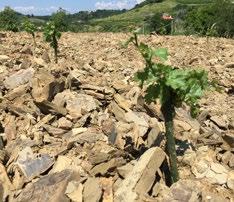
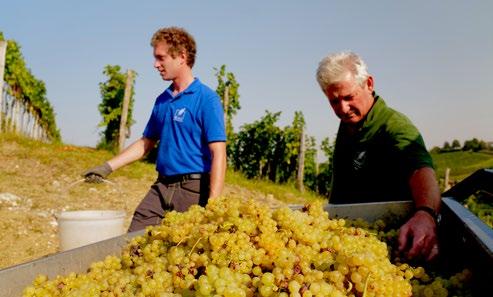
In San Floriano del Collio, five kilometres from Gorizia, at the beginning of the 1960s, Ivan Muzic’s parents bought the first vineyard nucleus. This then became the reason for living of their son Ivan, who to this day still guides it to gether with his wife Orieta, and the professional horizon of their grandchildren, now in their thirties and who are fully involved in the winery after having completed their stud ies and experiences outside the home. «My great-grand parents arrived here, in San Floriano, after the sufferings of World War I - says Ivan - These were years of reconstruction, they worked as farmers. They could count on the little house, on a dog, some fruit trees and some rows of grapes. This was the period in which agriculture was relaunched, Tocai and Malvasia were introduced. Then WWII brought more disasters. But in 1963 grandfather Luigi and grandmother Jolanda manage to buy the house where they lived, at the crossroads, between the road that climbs up from Gorizia to the summit of San Floriano del Collio and the one that descends towards Preval, along with 5 hectares of vineyard:
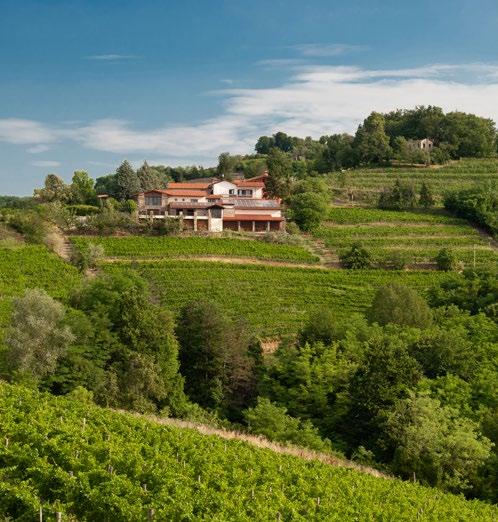
that’s where and when our adventure in wine began.» Located in a suggestive hilly area kissed by an Adriatic breeze, soils made up of stratified marl and sandstone. Here, in what is called the “Goriziano garden,” the Muzic family raise and care for the old grapevines of native, ancient variet ies, immersed in luxuriant nature: a captivating and unique image that Ivan and his family aim to transfer to the wines they produce with passion.
«There are three great thrusts that move our company: growth, tradition and respect for the environment, where the former cannot be separated from the others - explains Ivan Muzic - The focal point of our production is native grapes, also when we plant new vineyards we do it exclu sively starting from those same plants that we have been growing for years, without adding any outside clones. A choice that has led us to have grapes that have grown on our land for almost a century, among which our stand-out Malvasia, a local institution, considering how the plants have been the same for more than 80 years.»

1 2 4 3 78 GAMBERO ROSSO GAMBERO ROSSO X MUZIC NOVEMBER-DECEMBER 2022
1. An overview of the San Floriano del Collio winery
2. A moment of the harvest
3. Detail of the terrain, consisting of marl and layered sandstones
4. A bunch of Sauvignon grapes

5. The Muzic family: Elija, Orieta, Ivan and Fabijan Azienda Agricola Muzic – San Floriano Del Collio (GO) – loc. Bivio, 4 0481884201 – cantinamuzic.it


11 territorial labels in a cellar dating back to the year 1500
The estate has never stopped growing and has reached 26 hectares of vineyards (24 registered in the Collio Doc and 2 in the nearby Doc Friuli Isonzo) and 15 hectares of forests that embrace the vineyards. Recently, the Muzic family also acquired a historic building that belonged to De Randich, linked over the centuries to the production of wine in San Floriano. Today, Elija and Fabijan, the sons of Ivan and Orie ta, are permanently employed in the company after having studied at the Higher Institute of Viticulture and Enology in Cividale del Friuli and then at the University of Udine, and support their parents in the business by learning from their passion and tradition and teaching them modern techniques and technologies in a perfect mix in which the depth and heft of the family history are projected towards the future.
The Muzic company produces about 120,000 bottles a year, mostly white: seven single-vari eties and a blend of native grapes, the Collio Bianco Stare Brajde. The single grape varieties: Malvasia, Friulano, Ribolla Gialla and Picolit (in digenous) alongside Chardonnay, Pinot Grigio and Sauvignon. The reds, aged for one year in oak are: Collio Cabernet Sauvignon and Friuli Isonzo Merlot and Cabernet Franc. In the com pany complex, a part of the cellar houses mod ern technology with heat-controlled stainless steel tanks, while another hosts tradition, with the suggestive underground cellar dating back to the 16th century with vaulted ceilings and exposed brick walls: certainly one of the oldest of San Floriano del Collio, having miracu lously escaped the devastation of two world wars that devastated the area. Here, the Muzic family welcomes guests and friends to share and taste their labels.etichette.

5
79 GAMBERO ROSSO GAMBERO ROSSO X MUZIC NOVEMBER-DECEMBER 2022
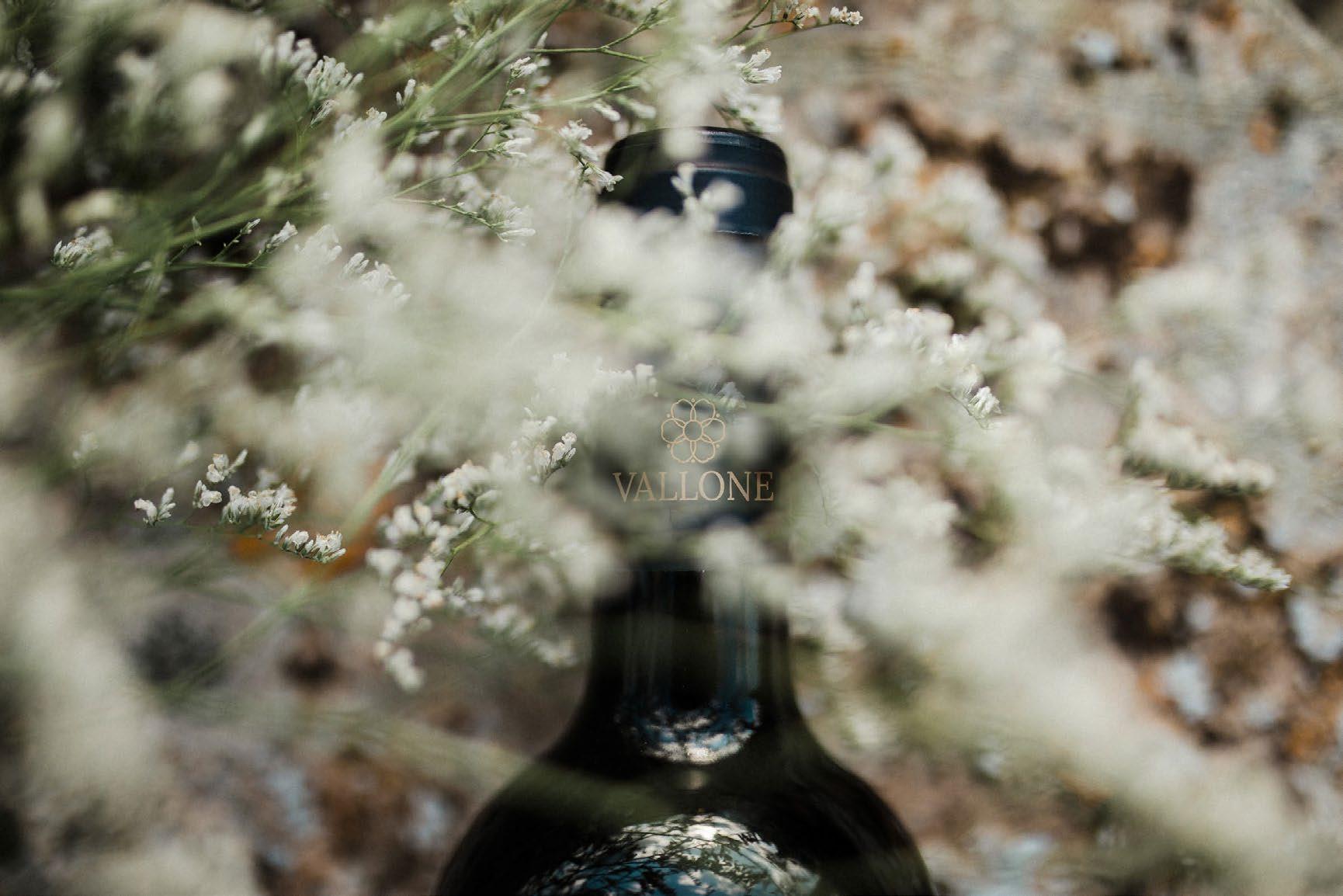

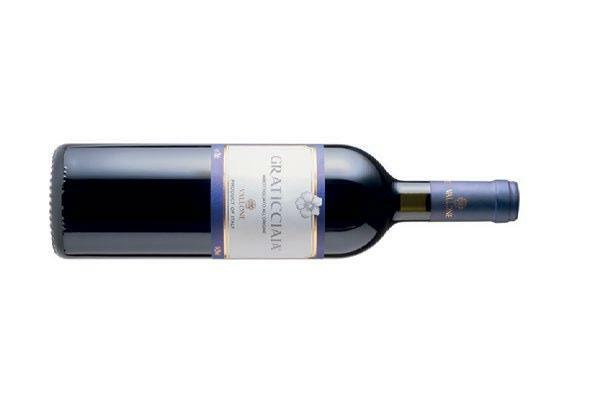

AT THE ROOTS OF PIEMONTE WINE: MONFERRATO DI BERSANO,

A CENTURY LIVED IN THE VINEYARD
115 years have passed from the first Cascina Cremosina in Nizza Monferrato to the 10 current farmhouses and the 230 hectares of vineyards that the winery manages today. Years in which the company founded by Giuseppe Bersano has gone through moments of splendour and moments of tranquillity. For years, firmly led by the Massimelli family, the winery has been one of the most active and quality protagonists of Piemonte oenology. As demonstrated by the vertical of 19 vintages of Barbera La Generala words by Gianni Fabrizio – photos
by Andrea Ruggeri
Back in 1907 the Bersa no winery was founded in Nizza Monferrato, thanks to Giuseppe Bersano . At the time it was a family-run company, which sold its wine in the production area, but it is precisely in that period, in 1912 to be exact, that the basis on which the prestige of Bersano still rests was laid: the purchase of the magnificent Cascina Cremosina in Nizza Monferrato in the centre of the Barbera d'Asti production area, formerly owned by the Counts of Cremosina and occasional residence of Napoleon. Since then, Bersano
has come a long way: 10 farmhouses - all located in the core areas of the area recognised as a Unesco World Heritage Site - and 230 hectares of vineyards. In this long period of time Bersano has gone through moments of great splendour and moments of relative tranquillity. After the first, albeit important parenthesis of Gi useppe Bersano, we owe the real birth of Bersano to Arturo Bersano , who became a lawyer by duty but with a passion for the vineyard in his heart. From his arrival in the company in 1935, this enlightened wine produc er worked to bring Piemonte wines to the world and to transform Ber
sano into the first and most brilliant regional château. His long stays at Cascina Cremosina made him aware of the potential of those hills if well managed. At that time Arturo coined the motto "If you want to drink well, buy a vineyard" which is the basis of his viticultural philosophy.
THE ERA OF ARTURO BERSANO
Even then Arturo showed great in tuition, choosing Barbera, Nebbiolo and Brachetto as the Piemonte wines to be enhanced. Under his guidance in those times of great splendour, Bersano bought numerous farm houses, all located in particular
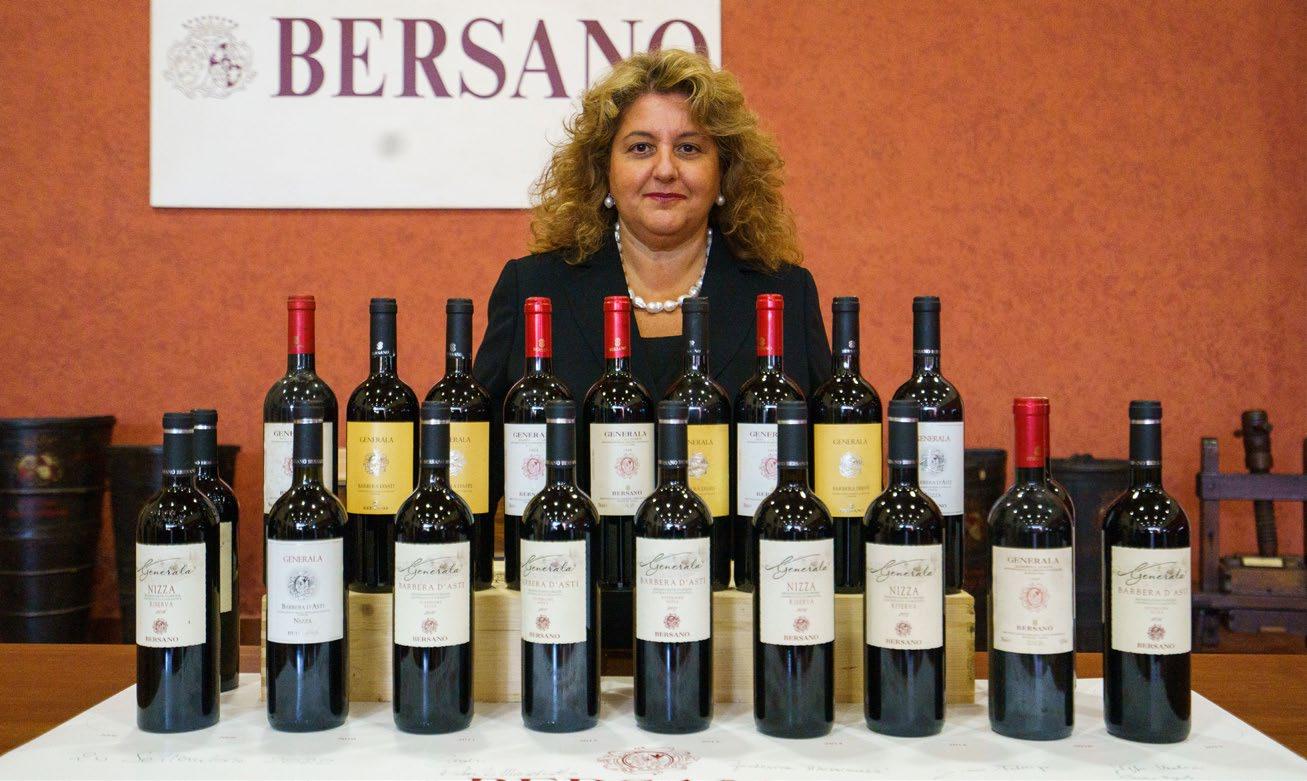
82 GAMBERO ROSSO STORIES NOVEMBER-DECEMBER 2022
THE FIRST 115 YEARS OF BERSANO
1907 – Casa Vinicola Bersano was born in Nizza Monferrato, the heart of the Barbera d'Asti area
1912 – Arturo takes over the leadership of the winery to which he gives new impetus: territory and vineyard are the identity elements
1935 – Museo delle Contadinerie is born, dedicated to utensils and the tools of peasant life; it is among the major Italian specialised museums
1961 – Nasce il Museo delle Contadinerie dedicato agli utensili e agli attrezzi della vita contadina, tra i maggiori musei specialistici italiani
1964 – Arturo creates the Confraternita della Bagna Cauda, one of the first associations to protect Piemonte regional food and wine
1968 – With Cascina Badarina in Serralunga d'Alba, Bersano is one of the first producers to give impetus to the great success of Barolo
1985 – Ugo Massimelli and other investors take the helm of the company. They are the ones who consolidate the currently impressive business venture
1995 – The Asteggiana vineyards, no longer Langa and not yet Monferrato, are the great intuition of Casa Bersano
2004 – Latest purchase: Cascina San Pietro in Castagnole Monferrato, fifty magnificent hectares selected for Ruché grapes
2021 – The Massimelli family assumes full control and management of Bersano. Federica Massimelli becomes CEO
20 YEARS OF A GREAT BARBERA
Nizza Generala Riserva 2017 912017 is the year of anomalies: the third hottest vintage of the last 60 and the fourth driest of the last 60 years. All this led to budding and early ripening. In addition, a severe frost in April reduced yields. So in 2017 Generala expressed itself at the highest levels, giving us a wine with a dark and impenetrable coat and a beautiful ruby hue. The nose is dominated by exuberant fruity aromas (plums and cherries) enriched with hints of wet soil and juniper berries; on the whole the wine is complex and multifaceted. On the palate it offers a portentous and volu minous drink, balanced by tantalising acidic-salty sensations that give harmony to the long finish.
Nizza Generala Riserva 2016
892016 appears a more regular year even if the beginning of spring was hot and dry. Fortunately, a cold month of May, with many violent rain episodes, and the months of June and July with normal temperatures brought back to more regular ripening times, despite the heat peaks of August and September. The 2016 vintage offers an intense ruby robe that the light cannot penetrate, while the nose appears less explosive and opulent than the warmer vintages. It is always the fruit that characterises the phase, but it is a more measured fruitiness that then devel ops aromas of spices and tobacco, with a finish reminiscent of cacao. The palate is powerful, but the marked acidity leaves us with a colder and more vertical finish.
Nizza Generala Riserva 2015
93
The 2015 vintage looks like one of the best of the decade. After a cold and snowy winter that delayed the vegetative phase, the above-average heat and the absence of rainfall in June and July anticipated maturation which retained good taste-olfactory freshness thanks to cool August nights. The first peculiarity of Generala 2015 is the brilliance of the ruby hue, then it continues with the fi nesse of the aromas of black berries, made more complex by clear hints of spices and wet soil. This Barbera with a strong personality is able to naturally express its power with extreme harmony. Finally, it closes with an enviable persistence, where the rich and soft pulp is balanced by freshness.
Barbera d’Asti Superiore Nizza Generala 2014
90
After a mild winter and spring, which favoured an early development of vegetation, we had a cool and rainy summer, which brought the vegetative phase back to more normal times, however causing fear for the health of the harvest. Fortunately, the more stable and sunny weather in September allowed the late varieties grown on the well exposed slopes to recover. Less intense than usual, Generala offers, even in more complicated years, fragrant and complex Barbera (fruity aromas enriched with balsamic notes) that give the palate an agile, fresh and dynamic drink, rich in savoury sensations..
Barbera d’Asti Superiore Nizza Generala 2013
93
A winter that didn't want to end and the low temperatures in April delayed budding, while the abundant and frequent rainfall between March and May put a strain on winemakers who also had to put up with pathogens. Confi dence returned only in June and July, when the climate stabilised. The sun and dry weather allowed, albeit very late, to reach excellent ripeness. The hue that gently tends to garnet speaks of an evolving wine, as well as the aromas that are starting to marry fruit with tobacco and graphite. The mouth offers an un expected as well as fascinating tannic and austere sensation that the persistent and severe finish helps to nourish.
83 GAMBERO ROSSO BERSANO & LA GENERALA NOVEMBER-DECEMBER 2022
1900 2000
Barbera d’Asti Superiore Nizza Generala 2012
87
True winter, with polar temperatures and abundant snowfall, arrived in Feb ruary followed by a very rainy period between mid-April and mid-May which allowed the soil to store important water reserves, necessary to overcome the extreme heat (among the greatest in recent years ) and drought of June, July and August. This early harvest gives us a Generala with more advanced chromatic tones tending to garnet. The strong summer heat translated into fruity aromas that tend towards jam and hints of cinchona that bring great complexity. On the palate, the wine shows all its richness, accompanied by slightly bitter notes.
Barbera d’Asti Superiore Nizza Generala 2011
90
After a mild winter, 2011 vintage was characterised by two important factors: rather abundant rains, only slightly less than 2008, 2009 and 2010; and great heat in April, May and September. 2011 can be considered as the hottest vintage after 2003. The colour is ruby red, rich in garnet hues. The nose gives us good complexity where the fruity notes marry well with cinchona and licorice, but also with a nice sweet connotation conferred by the oak, back then barriques and tonneaus were widely used. The sip is rich and very enveloping but fortunately retains a good freshness and pleasant persistence.


ly suitable areas, including Cascina Badarina (in 1968) in Serralunga d'Alba, in one of the most beautiful areas of the entire Barolo district. Thanks to his viticultural properties, the cellars perfectly equipped for the time and the expertise in winemak ing, Arturo Bersano became one of the most respected producers of his time and expanded his productions, in demand all over the world. At that time he began - among the first in Italy - to pay attention not only to the quality of the contents, but also to the aesthetic aspect of the con tainer, seeking the help of a famous local artist to design his new labels.

84 GAMBERO ROSSO STORIES NOVEMBER-DECEMBER 2022
Barbera d’Asti Superiore Nizza Generala 2010
In addition to the productive aspect, Bersano also stood out in the cultur al field, creating in 1961 the Museo delle Contadinerie and in 1964 the Confraternity of Bagna Cauda to protect Piemontese food and wine. The Paesan Vignaiolo Prize is linked to this confraternity, one of the very first in Italy, which has awarded the leading names in Italian culture by bringing them to Nizza Monferrato. It was also at that time that he began an important collection of writings dedicated to wine, which is still kept in the estate. Unfortunately, after the tragic death of his son, his pre carious health prompted Arturo, in the early 1970s, to sell the company to Seagram, a Canadian group that was then the largest spirits company in the world. Those were three dark decades. Without the skills and above all without the passion of Arturo Ber sano and guided by profit, the prop erty squandered the important viti cultural heritage on which the entire production had been based.
ENTER UGO MASSIMELLI
Fortunately, when Seagram decided to sell, Ugo Massimelli , an oenolo gist graduated from the Alba Oeno logical School, decided in 1985, to gether with other partners, to take over Bersano. Even if Ugo Massimelli had found professional success in other sectors, he had most of the same entrepreneurial qualities and passions for the land that led Arturo Bersano to success in the wine sector. From that moment on, the adventure started over, putting together a col lection of Monferrato and Piemonte vineyards of great value.
CURRENT ASSET
Most of the following years were in vested in Bersano and above all by
94
The 2010 vintage is to be counted among the late ones. The climatic trend of 2010 can be summarised in two words: cold and wet. The winter was long with temperatures below average and frequent rain with abundant rainfall and snow. The months of January, February, March and August were colder than usu al, while only July proved warmer. The still very intense and brilliant garnet ruby colour shows no loss of intensity and the nose highlights still fresh and elegant aromas of plum, tobacco and graphite. It is a wine with an important body and good extractive richness, without, however, ever becoming heavy; it closes long and is still full of life.
Barbera d’Asti Superiore Nizza Generala 2009
94
A winter rich in rainfall - even among the most abundant since 1803 - made it possible to replenish the water reserves. Summer was considered one of the hottest of the last 50 years and at the beginning also very rainy. Subsequently, a dry month of September with strong nocturnal temperature variations contribut ed to significantly lengthening the harvest. With the exception of the nail which has a small evolution, Generala 2009 is appreciated for its fresh and still very vital fruitiness (cherry) that finds great complexity in the hints of dry herbs. Compared to other hot vintages that benefit Barbera, 2009 is refined and balanced without excessive frills.
Barbera d’Asti Superiore Nizza Generala 2008
87
The mild winter of 2008 allowed the vine to develop correctly, in time and manner. After a very favourable early spring, a cold and rainy period arrived which caused problems in flowering. The damage to Barbera, a rather late variety, was limited. After a summer with a very variable climate, fortunately the weather remained beautiful and sunny with cool night temperatures. In this vintage with a difficult climate, which required lots of work in the vineyard during spring, the Generala presents itself as mature and fascinating to the nose where the aromas of fruit in alcohol and undergrowth dominate. The palate, strong in its acidity, still appears vital in a decidedly less voluminous and pulpy style than usual.
Barbera d’Asti Superiore Nizza Generala 2007
90
The season began with a prolonged drought which lasted from the end of October to the beginning of May. Only a few thunderstorms interrupted this phenomenon before the climate returned to being hot and dry. This very mild winter and spring anticipated the vegetative cycle. The harvest period remained warm, with some providential rain at the end of August. One of the earliest har vests of the last 79 years. Generala 2007 already shows its sunny character from the depth of colour and the aromas of black berries, plum and cacao. Probably the most powerful and concentrated vintage of the entire vertical with its imposing body that makes it almost austere, taking away a bit of elegance. A Generala that is still very young.
Barbera d’Asti Superiore Generala 2006
90
2006 had a practically ideal climate trend for the grapevine. After a slightly delayed start, the heat of June and July brought the vegetation back to nor mal times. After a cool August that normalised the phenological phases, the heat returned in September and October, interspersed with three days of abundant providential rain. This harvest gives a wine that is still perfectly vital, with a great olfactory freshness, where, together with the notes of sweet spices and toasted coffee from the oak, fruity aromas of beautiful elegance still emerge. 2006 oppos es the volume and density of its successor with a delicate and vibrant gustatory phase that favours verticality over width, while maintaining a long, intact finish.
Barbera d’Asti Superiore Generala 2005
89
After a relatively mild winter with little rainfall, spring began with tem peratures below the seasonal average. A sharp rise in temperatures was
85 GAMBERO ROSSO BERSANO & LA GENERALA NOVEMBER-DECEMBER 2022
RETURN TO BAROLO FROM CANNUBI 1952

TO CANNUBI 2016 RISERVA

The Bersano winery has reserved a very pleasant surprise for us this year, 70 years after the last harvest – at least this is what the only historical bottle preserved in the winery's private archive, reg istered in 1952, tells us – the Mas simelli family announces the re lease of a new Barolo. However, this is not just any Barolo, but a Cannubi Riserva 2016, which somehow marks a pleasant re turn to the past. Producer of Barolo since the time of Arturo Bersano, the company has added the most famous cru in the area to Barolo Badarina, born from the grapes of the homonymous cas cina farmhouse. There are about 3,000 bottles and a hundred magnums, or the equivalent of 25 hectoliters from just over half a hectare, vinified in a very tradi tional way and aged for 36 months in large Slavonian oak barrels..
Massimelli identifying, often during his Sunday walks, the most suitable hills for the grapes that were still the same ones that Arturo Bersano had placed at the centre of his attention. Thus, after the purchase of Cascina San Michele in Nizza Monferrato in 1985, most of the following years were put in the acquisi tion of the farms that now make up the estate's viticultural heritage. From 2021 the Massimelli family took full control of Bersano (vineyards and cellars) which was entrusted to the guidance of Federi ca Massimelli, Ugo's daughter. The next generation is already partially involved in the business: Federico, who is finishing his economics studies but who inherited a passion for hilly vineyards and soil from his grandfather Ugo, is already at work.
BARBERA AND RUCHÈ

Today Bersano produces about 1,200,000 bottles a year that come exclusively from its 230 hectares of vineyards. Most of these produce Barbera which declined in different types and labels (from a simple Piemonte Barbera to Nizza Riserva Gen erale, by way of Barbera d'Asti Costa lunga and Nizza Cremosina) reaching almost 500,000 bottles per year. In order of numerical importance, after Barbera, for some years the new star of the re gional wine firmament is Ruché. Consis tent numbers, albeit smaller, are always given by the ever-present Brachetto and Barolo. The most important wine for Bersano remains Nizza Generala, a powerful and long-lived Barbera in puri ty, as shown by our vertical.
THE GREATNESS OF GENERALA Generala is the result of a magnificent selection of Cascina Generala: only the grapes from the oldest vines in the up per part of the hill end up in the Nizza Riserva. Individually vinified, the differ ent parcels remain separate even during the ageing phase in oak, and assembled only before bottling, until eventually about 35-40,000 bottles are filled. The first vintage of Generala was 1996: the label has been produced to this day, with the exception of the 2002 vintage which was downgraded due to the bad weath er conditions of the year. The Generala vinification protocol is completely tra ditional, without any unnecessary tech nicality: after an alcoholic fermentation with maceration on the skins for about

86 GAMBERO ROSSO NOVEMBER-DECEMBER 2022
10 days, the malolactic fermentation takes place in stainless steel tanks where the wine rests until the following spring when it then passes into oak barrels. Until 2006 Generala was aged entire ly in one third new French oak barrels. From the 2007 harvest it was decided to refine 20% of the total mass in larg er barrels (French wooden tonneau and large Slavonian oak barrels of 56 and 86 hectoliters). Since 2013 the barrique has been abandoned and the trend is to leave growing space for barrels and tonneau. In addition to the Massimelli family, be hind the current success of this wine we find the entire Bersano staff, but three men deserve to be mentioned: the ex pert and immovable agronomist Filippo Mobrici who has been watching over
observed only at the end of June and July, but already in August a cooler climate returned. After a long dry period, abundant rains characterised the first days of September. Fortunately, the heat returned immediately and gave some tranquillity to a basically cool year. Despite a normal evolution, the wine carries all the characteristics of the 2005 vintage. The nose is fresh and with good memories of fruit and tobacco, while on the palate its fresh acidity helps to maintain delicacy for the natural exuberance of Barbera.
Barbera d’Asti Superiore Generala 2004
86 Winter 2004 was characterised by heavy snowfall and very cold tem peratures. The spring saw copious rains until the beginning of May, causing the budding to be delayed. Thanks to the absence of rainfall and the mild heat of the summer months, the plants did not catch up the entire delay, but regular growth led to healthy and abundant production. Although it is not the Generala that most impressed us, this wine still has good vital ity with aromas of cinchona and undergrowth, accompanied by complex spiciness. The mouth has a discreet body and good acidic freshness, the measured pulp combines a pleasantly bitter finish.
Barbera d’Asti Superiore Generala 2003
86
The 2003 vintage was the first actual one that made us understand that the climate was changing,» commented the technicians. During that year, the heat continued throughout the vegetative phase of the plant. More over, having never had noteworthy rainfall to temper it, weather remained at very high temperatures even during the night hours. 2003 is a creature of the vintage: the dress, also rich in garnet-orange shades, due to normal evolu tion, still has an impenetrable look. The nose, wide and very open, combines its incredible richness with a strong personality that leads towards aromas of plum jam and licorice. The palate is powerful and rich with an alcohol content that brings a lot of value.
Barbera d’Asti Superiore Generala
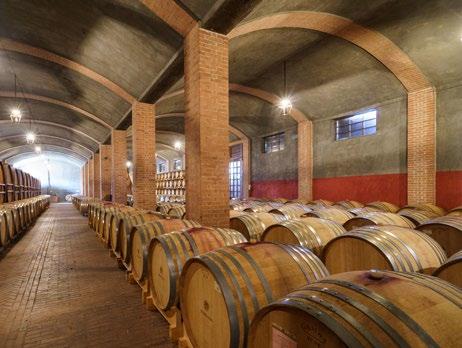
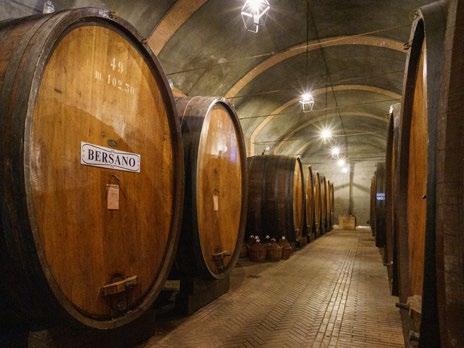
2001
The abundant rains, significantly more than in previous years, and the seasonal temperatures above average, led to an early bud break. The un stable albeit dry weather in April with lows below zero also caused damage to the vineyards. Thanks to the rains of the first part of the year, the vines started to vegetate again without problems and the sultry heat of August and early September led to good ripening, despite coolness and subsequent rainfall. The dress has a slightly evolved garnet hue but still good intensity; aromas of fresh fruit combined with hints of fruit in alcohol and tobacco give value to the olfactory part, while the mouth remains vibrant and agile, still with good pulp.
88
Barbera d’Asti Superiore Generala 2000
92
The early budding of the 2000 season is due to the mild climate, with little snowfall. After a rainy spring, a long sunny and windy period ac companied the fruit set and veraison phases. Before the onset of unstable weather (from September 15th), the heat between mid-August and mid-Sep tember favoured ripening of the grapes. Generala 2000 preserves a beautiful vibrant fruit, enriched by memories of sweet spices and licorice, but in addi tion to the refinement of the nose, the magical balance of the palate makes the important structure of the vintage coexist and therefore the volume of the wine with a taste sensation of lightness and harmony. The long bright finish testifies to the wine's youth.
Barbera d’Asti Superiore Generala 1999
IThe more regular climate of the 1999 vintage allowed an excellent course of all the vegetative phases of the plant which led to a good harvest with regular ripening and in any case slightly delayed compared to the following year. The Generala 1999, while not showing the majestic balance of the 2000 or the stylistic perfection of the 1997 vintage, has great character. The dress, despite a certain evolution on the nail, still shows an intense garnet colour. On the nose
90
87 GAMBERO ROSSO BERSANO & LA GENERALA NOVEMBER-DECEMBER 2022
THE 10 CASCINAS OF BERSANO
Strengthened by a wine heritage that is unique and rare in Piemonte, Bersano has rightly been considered one of the true château of Italian oenology, comparing it to the famous French properties. It is 240 hectares of vineyards divided into 10 casci na farmhouses:
1 Cascina Cremosina
Property of the Bersano fam ily since 1912, it now belongs to the Massimelli family. Lo cated in the town of Nizza Monferrato at an altitude of 250 metres, the more than 12 hectares of vineyards are en tirely dedicated to Barbera
2 Cascina Badarina
Since 1968, Cascina Badarina in Serralunga d'Alba has been a property of Bersano in the Barolo area. It is a 9.5 hectare vineyard at 450 metres above sea level entirely dedicated to Nebbiolo (8.5 to Barolo and 1 to Nebbiolo d'Alba)
3 Cascina San Michele
It became part of the Bersano possessions in 1985 as the first cascina farmhouse pur chased by the Massimelli family, it consists of almost 10 hectares of vines in Nizza Monferrato at an altitude of 250 metres, equally divided between Moscato and Bar bera
4 Cascina Generala
This magnificent vineyard amphitheatre in the munic ipality of Agliano Terme consists of 55 hectares at an altitude of 220 metres, 9095% dedicated to Barbera. To complete the surface we find a little Sauvignon and Merlot and a corner of Neb biolo
5 Cascina Prata
More than 35 hectares of vineyards between the mu nicipalities of Incisa Scapac cino, Vaglio Serra and Nizza Monferrato, belonging to Bersano since the second half of the 1990s. At about 200 metres above sea level, it grows Barbera, Pinot Nero and Merlot
6 Cascina Castelgaro
Located in the municipality of Castel Boglione, this cas cina has about 9 hectares of vineyards at 250 metres. About half of the area is
dedicated to Brachetto, the rest is divided between Dol cetto and Chardonnay
7 Cascina Pallavicini
Since 1997 this cascina, which belonged to the Mar quises Pallavicini, is owned by Bersano. 21 hectares of vineyards in the municipali ty of Mombaruzzo at 250 metres, 13 of which planted in Brachetto, 4 in Barbera and 1 in Moscato
8 Cascina Serradivaglio
This is not a veritable casci na per se, but rather a 5-hectare vineyard be tween Incisa Scapaccino and Vaglio Serra which has long belonged to the Mas simelli family and brought as dowry into Bersano. En tirely planted in Brachetto, it is dedicated to the Piemon te Brachetto appellation
9 Cascina Montolivo
This cascina of about 17 hectares in the municipality
of Incisa Scapaccino was purchased in 1999 by Bersa no. The vineyards planted at about 260 metres are large ly dedicated to Barbera (16 hectares) while 1 hectare is planted with Moscato
10 Cascina San Pietro
Cascina San Pietro in Cast agnole Monferrato is the last property purchased in order of time in 2004. It has an area of 55 hectares of vineyards at an altitude of about 350 metres and is half planted in Ruché, while the remainder is divided be tween Barbera (10 hectares), Grignolino (7 hectares) and Sauvignonnel 2004. Ha una superficie di 55 ettari a vi gneto a un’altitudine di circa 350 metri ed è per metà pi antata a Ruché, mentre la restante parte è suddivisa tra Barbera (10 ha), Grignoli no (7 ha) e Sauvignon

are fruit, tobacco, licorice, cinchona and a distant earthy memory that blend perfectly, giving a clear idea of complexity; while the powerful, rich and very per sistent palate gives way to a warm and enveloping alcoholic sensation.
Barbera d’Asti Superiore Generala 1997
93Already at the time of harvest many in Piemonte and abroad saw this vintage as the best of the century. In fact, it is the result of a hot and dry harvest that brought healthy and well-ripened grapes to the cellar for all varieties, but the cul tivar that benefitted the most from this wonderful vintage is precisely Barbera as evidenced by this splendid Generala, which sports a intense garnet ruby and is still full of life. The equally fresh nose still leaves room for the aromas of cherry and plum enriched by hints of tobacco and graphite brought over by the years, creat ing a combination of considerable complexity and finesse. Its imposing structure and the dense pulp combine on the palate with a fresh acidity and a tantalising savoury vein that give the long finish the harmony typical of great wines.
the vineyards since the mid-90s; oenologist Roberto Morosinotto who, after a few years of coaching since 2000, has taken the position of technical director of Bersano in 2005; the third, equally important, is Com mercial Director Paolo Lovisolo, known in the world of wine business in Piemonte and beyond.
Bersano Nizza Monferrato (AT) p.zza Dante, 21 0141720211 – bersano.it
88 GAMBERO ROSSO STORIES NOVEMBER-DECEMBER 2022

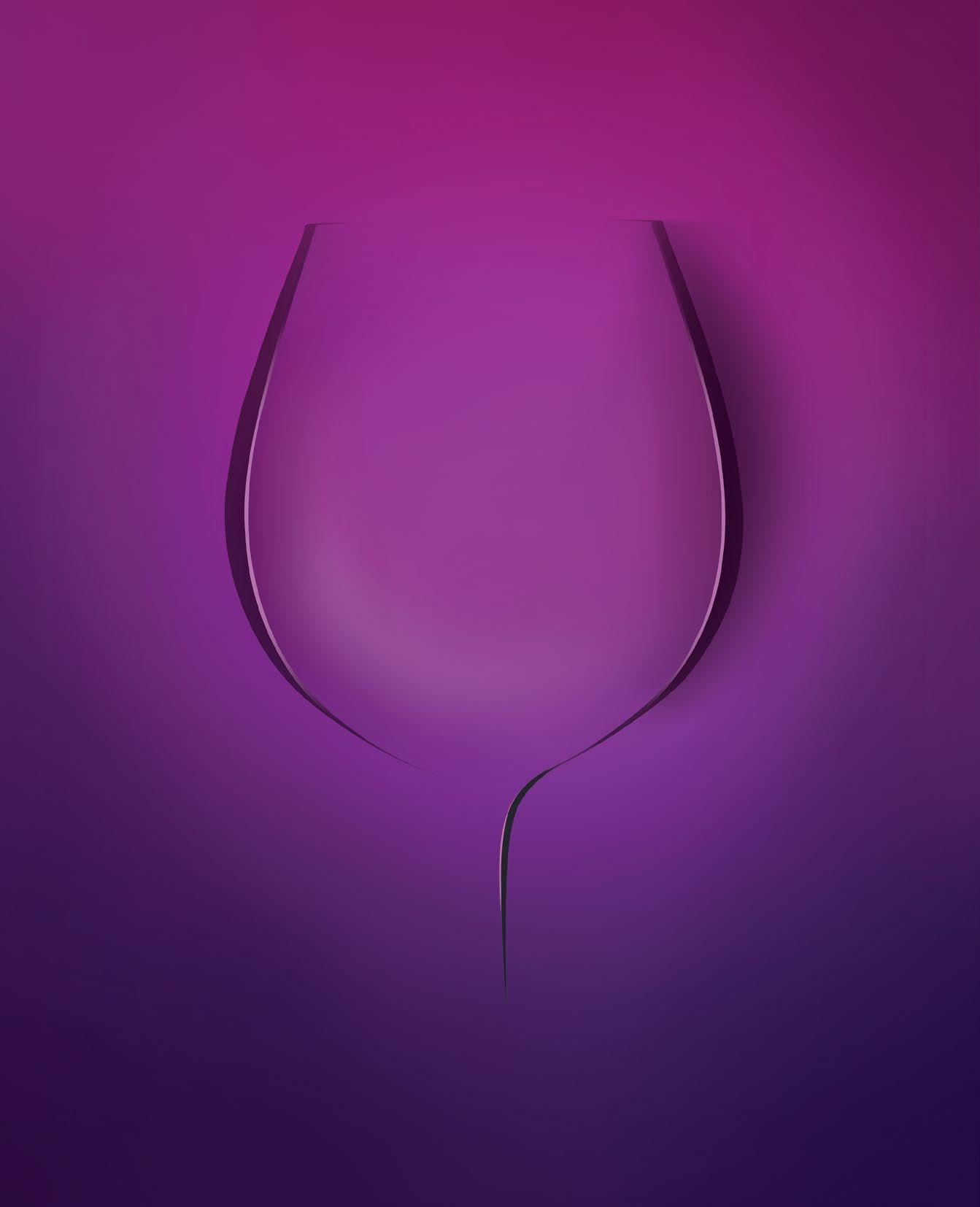
Salice
Today Salento has all the characteristics to be considered among the most important Italian wine areas, and it is the ancient traditions and Lecce alberello training systems that are the main strengths of this land

Salice Salentino is a beautiful town north of Lecce, with a history dat ing back to the Middle Ages. The town became important in the 15th century as an agricultural centre and crossroads of trade. Today it is known all over the world for its wines (the two red grapes Negroa maro and Malvasia reign supreme) and lends its name and life to one of the most important denominations of Puglia oenology. An evocative landscape, made of vineyards and
olive groves, scattered with farm houses and ancient lookout tow ers. The DOC territory, which dates back to 1976, embraces the munic ipalities of Salice Salentino, Veglie and Guagnano in the province of Lecce and San Pancrazio Salenti no and Sandonaci in the province of Brindisi. Also a part of the munic ipalities of Campi Salentina in the province of Lecce and Cellino San Marco in the province of Brindisi, for a total of seven municipalities.
THE WEALTH OF THE HUMAN FACTOR
Of fundamental importance are the human factors linked to the production area, which by con solidated tradition contribute to obtaining the Salice Salentino wine. The origin of the deno mination is to be attributed to historical producers present in the area who were already pro ducing red and rosé wines with negroamaro and malvasia nera since the 1930s. Although Leone de Castris was already bottling his Rosato in 1943 - the first wi nery in Italy - it was in 1954 when he launched the first bottles of Salice Salentino on the mar
Salentino. In the homeland of a great cosmopolitan red
95 GAMBERO ROSSO
ROSSO X CONSORZIO DI TUTELA VINI DOP SALICE SALENTINO NOVEMBER-DECEMBER 2022
GAMBERO
Salentino.
cosmopolitan red ket, even though the family was involved in the cultivation of vineyards and in winemaking since 1665. A success for the ap pellation which has grown over the years with the birth of new wineries, both private and coo peratives, reaching the current number of 43, and production numbers that have now reached all the most important world markets..
SALICE SALENTINO TODAY
The vineyard area registered in the appellation is about 1,700 hectares, which translates into an average annual production of almost 200,000 hectoliters of wine, mainly in the Rosso and Rosso Riserva types: these are the lion’s share compared to the White, generally based on char donnay, (produced in the Char donnay, Fiano and Pinot Bian co types), and Rosato, based on negroamaro and malvasia near with the possibility, however, of producing Rosato Negroamaro if this grape represents at least 90% of the blend. The real pro tagonists of the appellation are in any case the Salice Salentino Rosso (75% negroamaro) and the Rosso Riserva which age in the cellar for two years, of which at least six months in oak. And finally a sweet wine of ancient tradition: the Salice Salenti no Aleatico , where the grape counts for at least 85%. The types are Riserva, Dolce, Liquoroso
Negroamaro and Malvasia Nera.
Identifying

and yet complementary grapes
Two grapes of great quality that have always been associated in Salento, their land of origin, starting from the vineyard and that elegantly com plement each other. The oldest vineyards prove it: every two rows of negroamaro is one of malvasia nera (from Lecce or Brindisi, but they are very similar).

The Negroamaro. It could have arrived in Salento as early as the sev enth century BCE on the wave of the first Hellenic colonisation; its name could refer to the dark red colour which in turn would refer to the Lat in niger and the Greek mavros, i.e “black” in both languages. But the derivation from the terms “nero” and “bitter”, for black and bitter which define the typical colour and taste of this wine, is another reasonable hypothesis of the moniker’s etymology.
This is a grape that ripens late, a vine of generous and constant produc tion and good resistance to disease. The bunches are rather small and tight, the berries are rather large, the skin of good thickness and covered with bloom. Negroamaro is a variety resistant to the summer heat typ ical of Salento and ripens late, benefiting from rainfall in late summer. Perfectly adapted to the territory, therefore, especially if trained in the traditional alberello form. The resulting wine has a beautiful purplish ruby red colour, high acidity and rich in tannins, and is also suitable for long ageing. Malvasia Nera. It grows in the area in the two variants, Lecce and Brindisi, and could derive from a cross between Negroamaro and Malvasia bianca di Lecce. The name refers to a family of delicately aromatic grapes (both white and red), renamed with the title of the coastal town of Monemba sia, a Byzantine stronghold in the Peloponnese where sweet wines were traditionally produced and exported by Venetian merchants throughout the Mediterranean. Delicately aromatic, it has medium-sized bunches, round berries with a thin, bluish skin. In almost all denominations of red and rosé DOC wines of Salento, as in Salice Salentino, it is traditionally as sociated with negroamaro. To the blend it brings colour, alcohol content and a touch of soft fruity pulpiness that smooths out the luxuriant tannins and the austere air of the Negroamaro, as well as lending to the resulting wine a greater balance especially at a young age.
Salice
In the homeland of a great
96 GAMBERO ROSSO
NOVEMBER-DECEMBER 2022
GAMBERO
ROSSO X CONSORZIO DI TUTELA VINI DOP SALICE SALENTINO
The adventure of the Salice Salenti no Doc Consortium began in 2003, which brought together under a single entity an oenological reality of considerable importance which in almost 20 years of activity has made great strides. It was 1976 when the Salice Salentino production regula tion was drawn up among the first in Italy. The Consortium is, to this day, the institution that represents about 80% of the entire Salice sup ply chain and deals with the en hancement of the territories of the six municipalities distributed be tween the provinces of Lecce and Brindisi. Production amounts to 195,000 quintals of grapes, that is 140,000 hectoliters of wine. Today Salice Salentino translates into 1,000 members who cultivate 1,700 hect ares of vineyards, 42 wineries, 900 winegrowers, 40 bottlers and 33 winemakers. In 2014 the Consorzio del Salice Salentino Dop took a fur ther step forward, with the modifi cation of the statute, expanding its interest with the Protection and Enhancement of the Salento Igt: this serves to preserve the entire Salento territory, which includes all the production areas in the provinc es of Lecce and Brindisi, and a large part of those in the province of

Taranto. Today Salento has all the necessary characteristics to be considered among the most im portant Italian wine areas, and it is the ancient traditions and the al berellos of Lecce that are the main strengths of this land. Overall today the Consortium boasts 2,800 mem bers who claim both the Salice Sal entino Doc and the Salento Igt. This means roughly about 4,000 hect ares of vineyards between Salice Sal entino and Salento Igt.
«The Mission of Salice Salentino and Salento Igt Consortium - says Dami ano Reale, President of the Consor tium - is to join forces and skills to best enhance the Salento wine sec tor and thus promote the quality that has always characterised every single bottle of Salice Salentino and other local products. Talking about this wine means telling the story of a peasant class, retracing an ancient story that has its roots in the heart of the wine producing Salento.» Today, thanks also to wine tourism, the pro
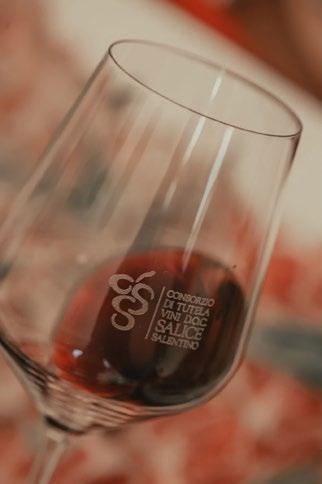
motion not only of wine but also of the territory can go through the Pro tection Consortia, and Salice Salenti no is an excellent example of this, contributing to the development of this strategic asset. For this reason, the Consortium carries out integrat ed work to improve the tourist re ception of individual wineries, which in Salento offer increasingly high quality services to tourists passion ate about wine or that are simply in terested in local labels and glasses. To appreciate the winemaking spac es, to understand how every single bottle of wine is born, the result of the work and passion of each wine maker, to share the business philos ophy of the various wineries, to taste the individual products paired with traditional dishes and to experience the farm spaces: these are the fac tors that can change the fate of ev ery winery, transforming the pro duction facilities into meeting and sharing places open to the public and to outside stimuli.

 Ancient regulations, modern consortium. The giant steps of a great wine area
Ancient regulations, modern consortium. The giant steps of a great wine area
97 GAMBERO ROSSO GAMBERO ROSSO X CONSORZIO DI TUTELA VINI DOP SALICE SALENTINO NOVEMBER-DECEMBER 2022
Dolce and Liquoroso Riser va. A complete range, in short, that surrounds one of the most loved reds of Puglia oenology and which, especially in the Riserva type, has won over an interna tional audience for its elegance, complexity, fullness of body and longevity. A great red that can age well beyond a decade: the most prestigious labels prove it every day around the world. An ideal companion for the savoury meat dishes of the local Puglia cuisine and the most important aged cheeses, but which with its modern and soft style has proven to successfully pair with the best cuisines in the world, even the most exotic and spicy. The more than 7 million bottles sold each year on the international market are proof of this . And they are the sign of the serious commitment of 900 winegrowers who look af ter their vineyards, often over for ty years old and cultivated with the traditional Salento alberello training system; who continue to work, generation after generation, to enhance a great terroir and its traditional grapes, primarily negroamaro and malvasia nera.
The territory. Red soils of marine origin softened by the Two Seas

The land where the grapes from which the Salice Salentino Dop wines are born, is one particularly suited to viticulture thanks to a considerable complexity of soils with in common a sandy texture of marine origin and organised in flat or slightly sloping soils. These do not exceed 100 metres above sea level, with a subsoil of calcarenite formations, with rare out crops of dolomitic rock, or sandy clayey, but also deep red calcare ous-clayey soils. Upon arriving in the terroir of the appellation, travellers are struck by the red colour of most of these soils: a characteristic linked to the composition of the soil, rich in iron and aluminium hydroxides. The equidistant proximity to the two seas (Adriatic and Ionian in the Mediterranean basin) of these vineyards that extend for over 30,000 hectares and represent 17% of the agricultural area of the whole Salento, in addition to mitigating the climate (generally hot summers, but with a high degree of humidity and mild winters), allows temperature fluctua tions and optimal ventilation, which lend excellent flavour to the wines. In short, we are talking about a terroir capable of giving life to wines that are rich in extracts and intense aromas, and which defy time.
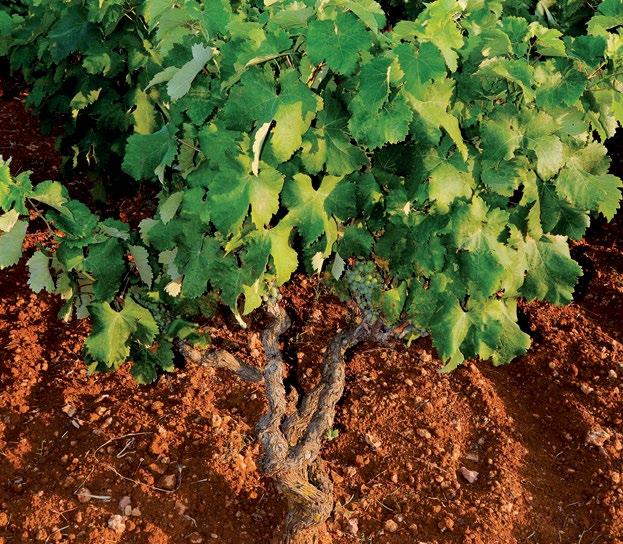
Consorzio di Tutela Vini Dop Salice Salentino Salice Salentino (LE) - via P. Leone c/o Casina Ripa 0832732592 - 3442847065 - consorziosalicesalentino. INIZIATIVA REALIZZATA NELL’AMBITO DEL “PROGRAMMA DI RIGENERAZIONE ECONOMICA,

SOCIALE E AMBIENTALE DEL TERRITORIO JONICO-SALENTINO COLPITO DA XYLELLA FASTIDIOSA, RADICI VIRTUOSE”, FINANZIATA A VALERE SULL’AVVISO MIPAAF N.10900 DEL 17.02.2020 “CONTRATTI DI DISTRETTO XYLELLA”.
98 GAMBERO ROSSO GAMBERO ROSSO X CONSORZIO DI TUTELA VINI DOP SALICE SALENTINO NOVEMBER-DECEMBER 2022
Salice Salentino. In the homeland of a great cosmopolitan red
The advanced logistic solution for Wines & Spirits



Wine & Spirits Logistic Macrosystem Solution is a logistics package designed specifically for the beverages industry. Giorgio Gori has achieved truly superlative standards in this sector in terms of expertise, partnerships, resources, organization and technology. Secure, modular transport systems, contracts with the most dependable carriers, excellent transport rates and optimum storage conditions will smooth the way for your products, from the bottling line to the consumer’s table. Easily accessible web-enabled options combined with effective monitoring and forecasting instruments can provide real time information on the entire logistics process.
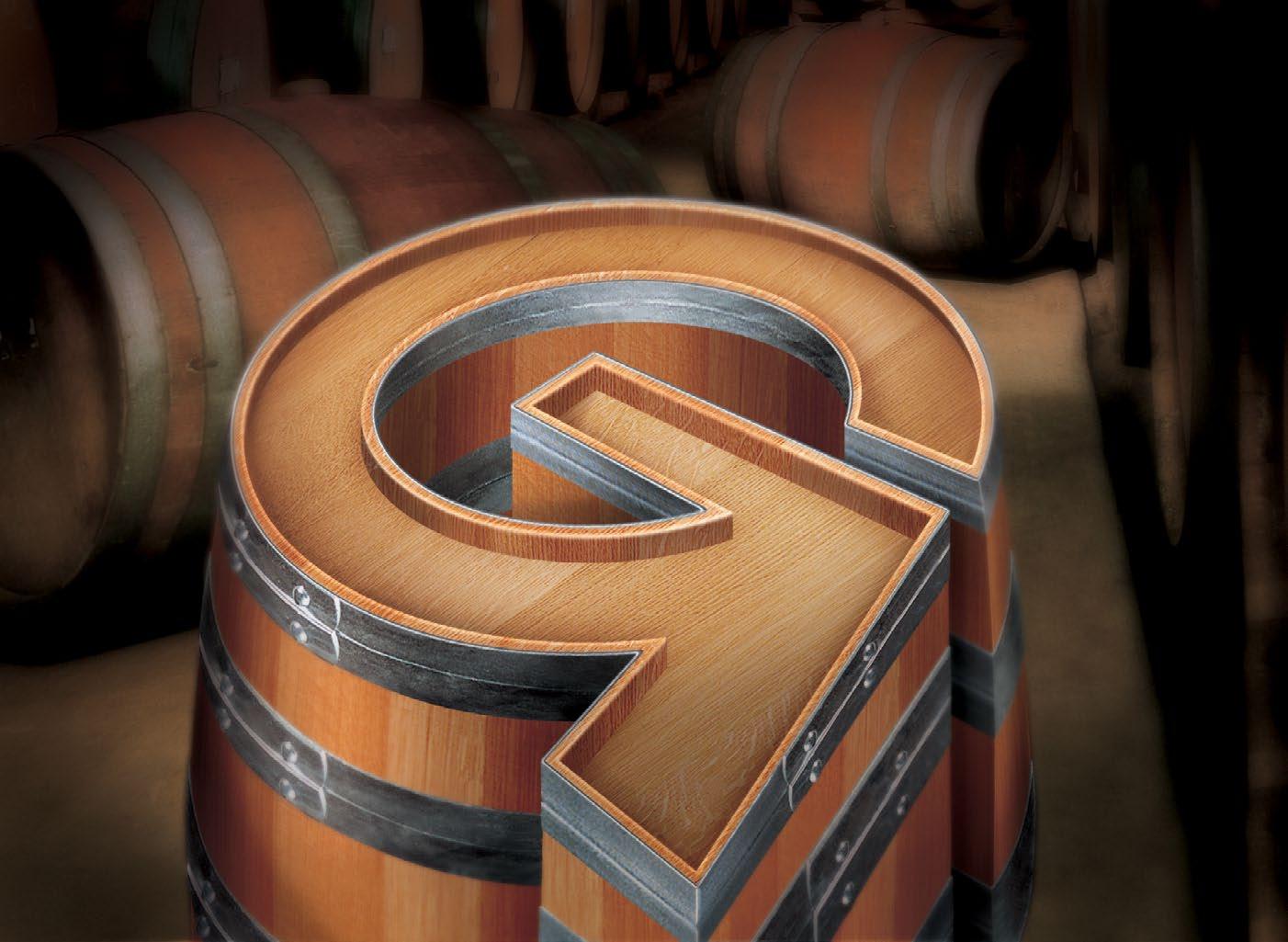
www2.ggori.com
Terra e Ambiente award 2023
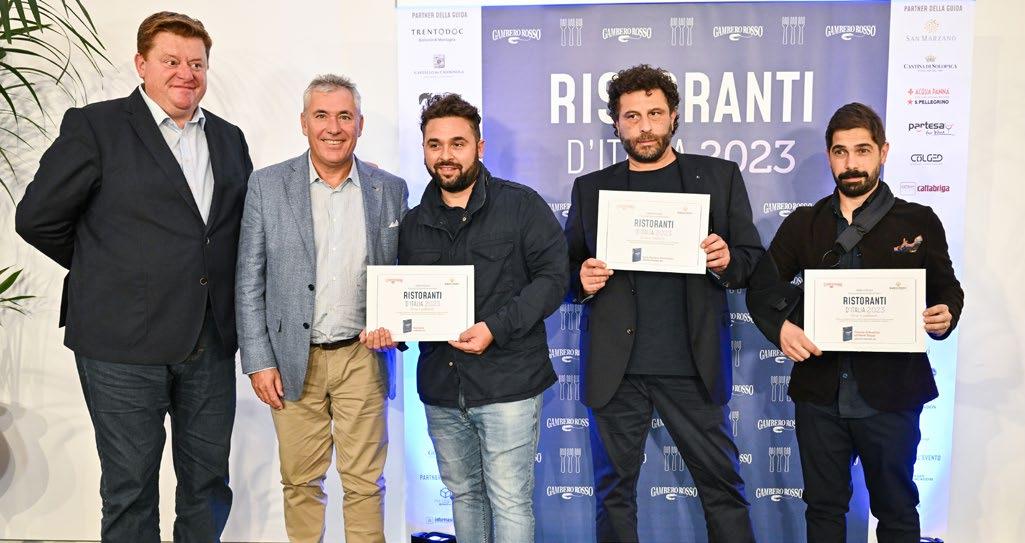
3 tables in defence of tradition and territory
«Our orientation has always been towards respect for the Earth - says Silvano Brescianini, at the helm of the Provaglio d’Iseo winery and President of the Consorzio Vini del la Franciacorta - Quality viticulture for us means organic, a prerequisite now established and considered a starting point that has opened new perspectives, such as respect for biodiversity in the vineyard, whose correlation to the quality of the grapes has been scientifically prov en. The path that has characterised the last 25 years of our history has led us to know increasingly more about the complex link between wine, land, grapes and the territo ry that generates it. Precisely in re
spect of the uniqueness of the ter ritories to which they belong and the peculiarities of their history, in our other estates in Tuscany and Marche we have continued with the same approach. It is therefore logical for Barone Pizzini to sup port a dining offer that is more respectful of these values, repre sented by professionals who strive to maintain the knowledge, fla vours and traditions of the area, as well as our winery does with wine, and people who cultivate or sup ply their businesses with local and quality ingredients, and above all respect the environment and sus tainability. Italy is an extraordinary country, if we look at the richness
of its oenological and gastronom ic traditions, it’s an extraordinarily complex scene that’s rich in excel lence. We are the country of 1,000 types of bread, of the countless dif ferent sauce preparations, cured meats, cheeses, salami, declined with different nuances, town by town - explains Brescianini - With the Terra e Ambiente award we continue to testify to the closeness to this world, to men and to women who believe in our same values and who fight every day to enhance them. This for us is the authentic substance that takes shape, thanks to the added value of a gastronom ic culture of great research and re spect for traditions.»
96 GAMBERO ROSSO RISTORANTI D’ITALIA 2023 WITH FRANCIACORTA ANIMANTE BARONE PIZZINI NOVEMBER-DECEMBER 2022
CHAMPIONS OF TERROIR
Romano
Viareggio (LU) – romanoristorante.it
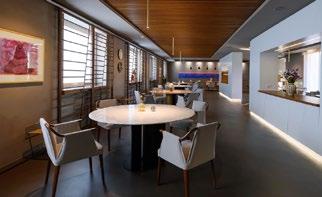

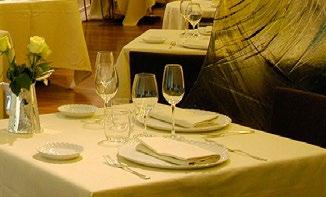
It’s easy to breathe in the energy and enthusiasm of the restaurant founded by Romano Franceschini and his wife Franca in 1966. Thanks to the passion shared by Nicola Gronchi in the kitch en, and Roberto Franceschini, owner and manager of the dining room and cellar, capable of transforming the gastronomic proposal by updating it, but leaving intact the soul of dishes and service, the pride of the house. Breathe in the depth of Versilia’s sea faring tradition. The varieties of fish and seafood (but also products from the garden) are chosen according to the season and natural cycles linked to sustainability and respect for the envi ronment. The great classics remain on the menu (above all, the stuffed cala mari); but many of the new entries are worth mentioning, such as the bread dough buttons “like a peppery mus sel stew” or the roasted and glazed dentice with clams served with green beans and mangetout beans. Exciting wine list for internationality, depth of vintages and royal proposal of Italian and non-Italian bubbles..
Sora Maria e Arcangelo Olevano Romano (RM) soramariaearcangelo.com
Giovanni Milana è un fuoriclasse delGiovanni Milana is a champion of local cuisine, his territory, of course. Located in a small town in the prov ince of Rome nestled between the Lepini and Ernici Mountains: it is in this basin of agri-food riches that moves Giovanni’s search. He’s a cook, but also a tireless selector of excellent ingredients that stir mem ories, such as meat, vegetables and wild herbs. If cannelloni are now the symbolic dish of this restaurant (and the most traditional), there is a lot to enjoy even in the less or thodox courses, thanks to a happi ly refined hand in techniques and pairings. With meat (and also with vegetables) Giovanni shows great skill in the choice and workmanship of the complex and precious meat. The wine list betrays a clear and fair preference for local labels, while of fering a good selection of national productions.
Osteria Arbustico at Hotel Royal Capaccio Paestum (SA)
osteriaarbustico.it
Two brothers, one in the kitchen and the other in the dining room; a wel coming hotel; two levels of perfor mance with lunch at a limited price and dinner with tasting menus and the entire list of gourmet dishes by Cristian Torsiello, is a compendium of experiences and suggestions collect ed during periods of work in Abruzzo and Tuscany but particularly atten tive to and inspired by the territory in which he operates. Rich in seafood but also with splendid vegetables. All of Cristian’s talent and love for this land (but also for the territories that intertwine in his soul) are exhaustive ly summarised in the tasting menu dedicated to the ten-year life of the restaurant (110 euros and, obvious ly, “ten steps”) that includes, among other things, ideas such as spa ghetti with turnip tops, chilli and herring. Large cellar, featuring the territory but which also goes far beyond, and full of bubbles.

0309848311 – baronepizzini.it


“When sustainability is form and substance. Enhancement of the territory and its products through a kitchen in full respect of the earth, the environment and man”
Barone Pizzini – via San Carlo 14 – Provaglio d’Iseo (BS)
97 GAMBERO ROSSO RISTORANTI D’ITALIA 2023 WITH FRANCIACORTA ANIMANTE BARONE PIZZINI NOVEMBER-DECEMBER 2022
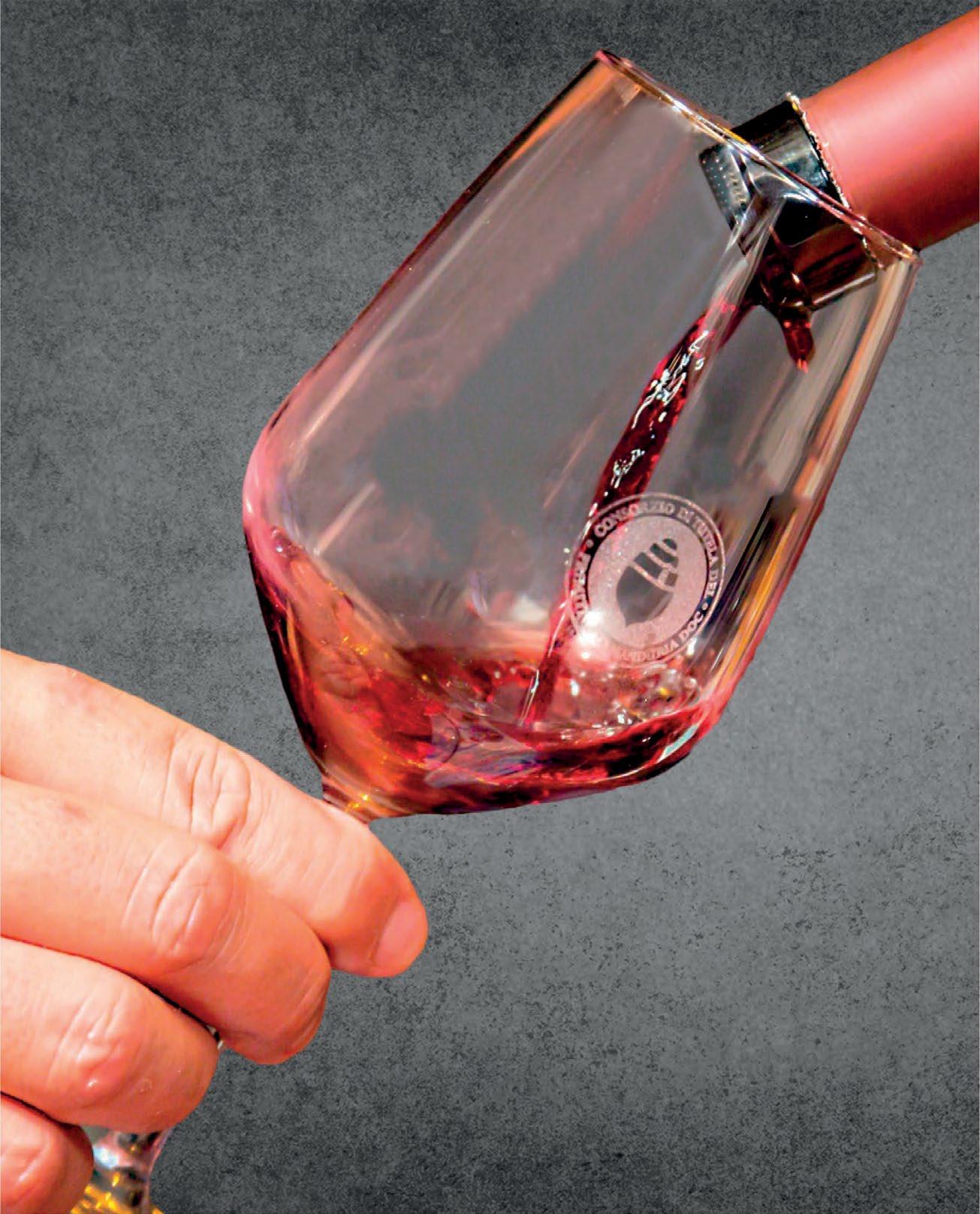
THE ERA OF EPOKALE: FROM A GREAT CLASSIC, A SPECIAL GEWÜRZTRAMINER
After six years in the heart of the mountains, the new vintage of an extraordinary wine is released. From the last to the first in 2009, the story of a wine that immediately became a legend: Epokale, a spin off of the great Gewürztraminer Nussbaumer of Cantina Tramin, the result of a further selection of grapes in the vineyard and a unique ageing, unlike any other

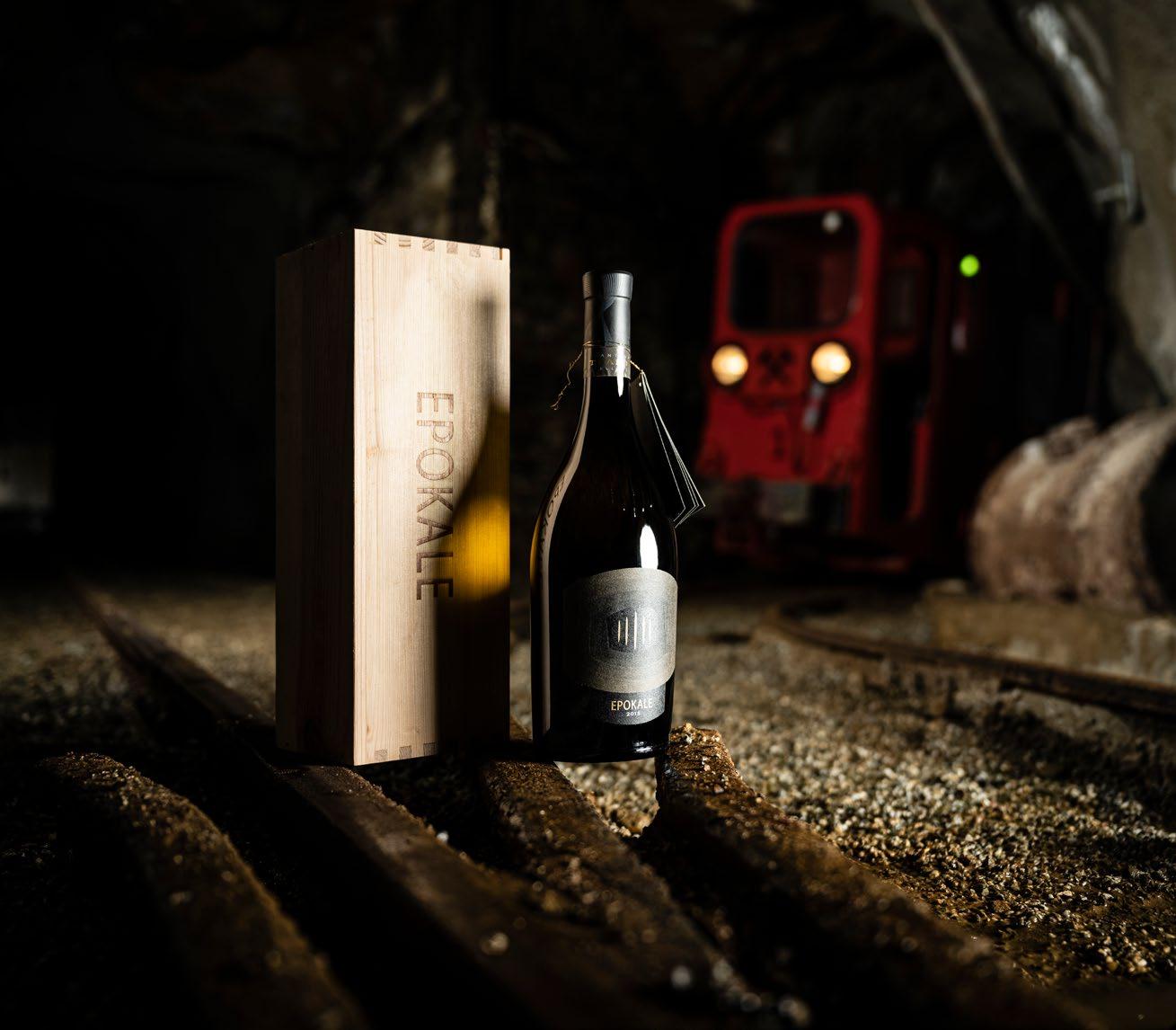
There’s a hill in Terme no where one of the most fascinating Italian white wines is born, the Gewürztraminer Nuss baumer . We are in the lower part of South Tyrol, on the right side of the Adige river, where grapevines plunge their roots in complex soils ranging from morainic to more calcareous or sandy with vineyards facing east and south. A magical terroir for whites (but also for reds) which, thanks to the fluctuations of air currents (which rise up the valley from Lake Garda and which descend in the eve ning from the Dolomite massifs) also
enjoy considerable temperature vari ations between day and night. There is an extraordinary grape variety that has treasured all this, actually it has always existed, at least since the 13th century, a time dating back to the first written traces of an excel lent quality Tramin wine.

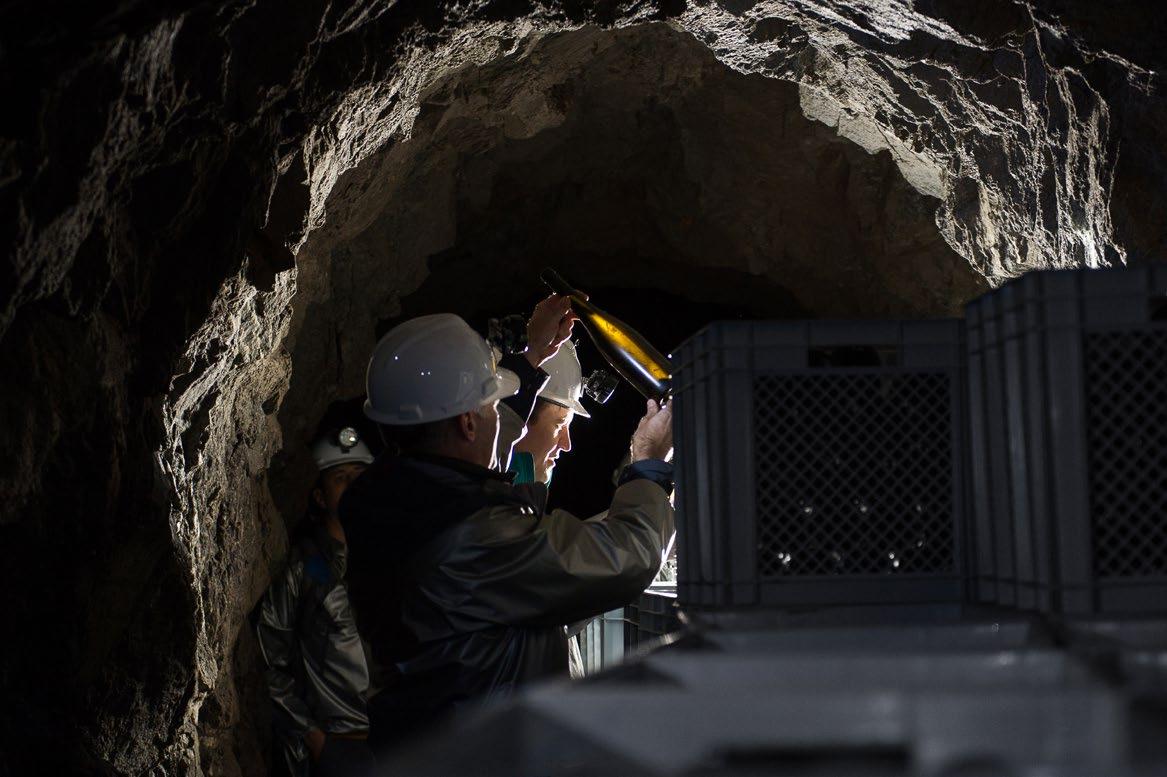
Cantina Tramin is one of the old est wineries in Alto Adige: it was founded in 1898, but it was in 1989 that things got serious here with the Selezione project aimed at enhanc ing the best vineyards with the most suitable vines. And if Gewürztra miner is the protagonist here in Ter meno, a great interpreter was also
needed to fully explore its potential. With the arrival of Willi Stürz , the puzzle was complete, and national and international awards began ar riving for the great white from Tra min. Over the years, Gambero Rosso has awarded the Cantina's different versions of Gewürztraminer as many as 26 Tre Bicchieri, of which 21 only to the extraordinary Nussbaumer (once Nussbaumerhof). But for Willi and Tramin all this was not enough: a new challenge awaited them. Two parcels were identified near the Nussbaumer vineyard, overlooking Lake Caldaro, between 420 and 440 metres above sea level, facing
100 GAMBERO ROSSO STORIES NOVEMBER-DECEMBER 2022
A. A. GEWÜRZTRAMINER EPOKALE SPÄTLESE
ITS FIRST 6 VINTAGES
The wines were tasted at Cantina Tramin in June 2022. For each wine the following are indicated: al cohol content, residual sugar and total acidity.

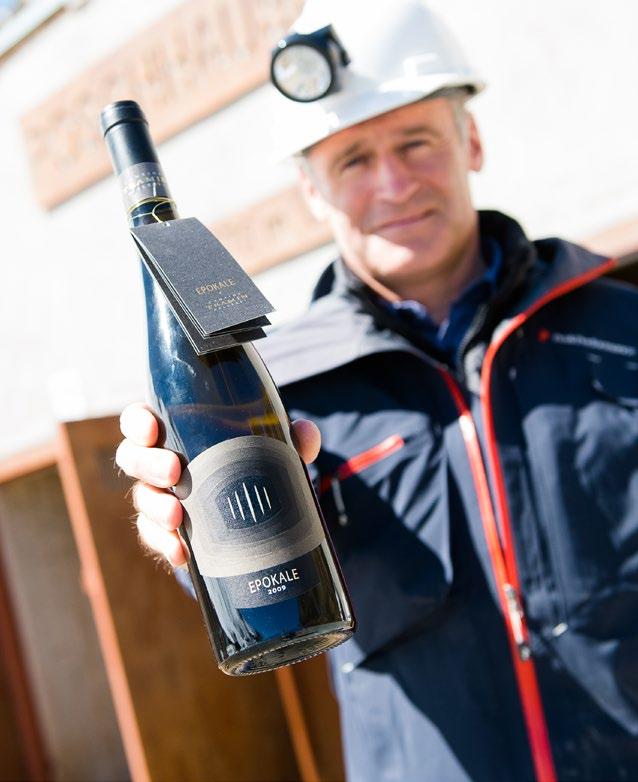
2009
12,5% – 107 gl – 5,6 gl
The colour is a golden and brilliant straw yellow still enlivened by delicate greenish reflections. The nose is very intense and betrays tropical fruits: mango and papaya, then spices, ginger and cloves, to fin ish sweet on apricot jam. The mouth is dense, pulpy: it is a sweet wine with an important residual sugar, but it unwinds on the palate as progressive, creamy, takes on the tones of tropical fruits and apricot and, thanks to a fresh acidic vein, it is delicate. The wine is soft and satisfying - paradoxically it does not yet have tertiary aromas - and closes long on notes of lychee and garam masala, with aromas of rose and citrus that appear in the aftertaste.
2010
13,5% – 36 gl – 5,0 gl
Intense straw yellow, it has a fresh and vivid nose of aromatic herbs: sage, mint and dill, notes of ginger, then hints of pineapple and grapefruit. Sumptuous fruit palate, with white peach in the foreground, then notes of turmeric and white pepper; a vibrant acidi ty and contained sugars give it great dynamism and smoothness. Then more complex aromas of moun tain herbs, fine aromatic notes, honey and pepper appear. Nice memory of marzipan in the aftertaste. It closes long, velvety and creamy.
2011
14,2% – 30 gl – 5,0 gl
Intense and bright golden straw yellow, it opens to the complex and delicate nose in the name of ver bena, sage and dill, then veers towards fruit, with grapefruit and pineapple, mango and passion fruit, to finally evolve on notes of wild rose and Indian spices. The taste is sweetly soft, less concentrated than oth er vintages. It's fresh, it shows a nice tension, it is not viscous but it flows savoury, rich and really caressing. At the end of the mouth the fruity tones return: the wine is elegant, mineral, sweet in alcohol but bal anced and salty. It leaves the palate on harmonious floral and aromatic sensations that persist for a long time.
101 EPOKALE - CANTINA TRAMIN NOVEMBER-DECEMBER 2022
south-east, where the soils are grav elly and clayey with layers of lime stone and a porphyry in the back ground. The right place to give life to a spicy, iconic and unique wine, from mature vines, between 20 and 30 years old, which was baptised Epo kale. It is the masterpiece of Willi, now the Gewürztraminer guru. It is a late harvest, a Spätlese. The grapes are harvested at the end of October, strictly by hand, the wine is born from a soft pressing, from a fermen tation in steel at low temperature and from a maturation on the lees for eight months. But we are just at the beginning of the story of a wine

that only comes out in the best vin tages.
Willi and his team understood that a wine like this begins to fully express itself (contrary to the cliché that Traminer has to be drunk young) several years after the harvest. And then the project is completed with its most singular aspect. Having left the beautiful cellar of Termeno, the few bottles of Epokale (about 2,400 on average annually) are transported to another place for the long ageing in glass before being marketed. It is the heart of the old abandoned mine of Schneeberg in Ridanna, at 2,000 me tres above sea level and - just think
- at the end of a 4-kilometre tunnel that penetrates the belly of the moun tain. Relative humidity constant at 90% and an unchanging temperature of 11°C all year round ensure Epoka le the ideal conditions to develop the sumptuous complexity of an inimi table bouquet. After six years in the cold and in the dark, Epokale is ready to travel the world. Over the years there has been a stylistic evolution of wine. If the years after 2009 were characterised by the desire to achieve greater elegance through a lower ex tractive richness and a lower sugar content, following the evolution of the vintages Willi realised that

102 GAMBERO ROSSO STORIES NOVEMBER-DECEMBER 2022
THE MYSTERY OF GEWÜRZTRAMINER
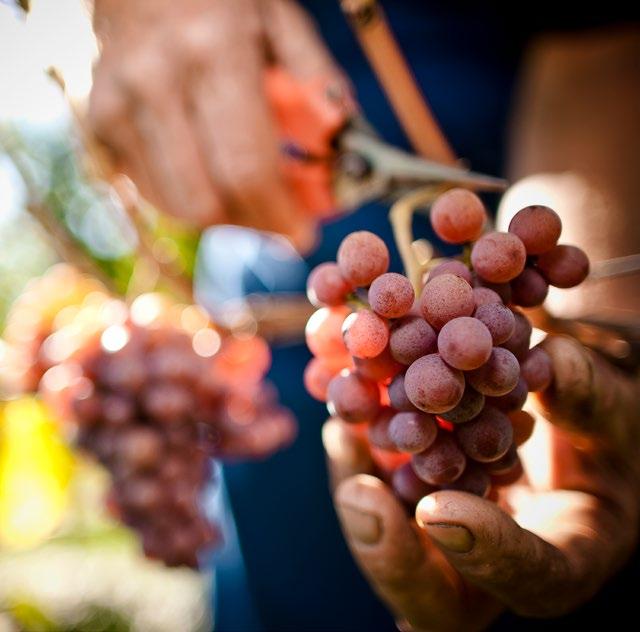

The definitive word has not yet been uttered about the origin of this extraordinary variety, the richest in aro mas of the entire vitis vinifera family. The most wide spread etymology refers to the spiced wine (gewürz) of Termeno (Tramin), and places it in its South Tyrol cra dle, but it is a grape that is present in many countries, from Alsace in France to Switzerland, to Austria and to Germany. From this Central European area it then spread successfully - and with many names - all over the world. Professor Attilio Scienza reminds us that ge netic analysis has it descend from pinot, and the link between the two could be the gouais grape, the father of many varieties, such as savagnin, with which it has great genetic affinity. And if in the Middle Ages it was a red grape, over time, due to the effect of climate chang es and selections made by man, traminer gradually changed to a beautiful deep pink colour. Whether it is the grape of the terminus - the eastern border of the empire with the Germanic peoples - brought by the le gionaries of Probus, or "der aminer" (aminea) of the mediaeval winemaking monks, its history is practically two thousand years old, but its real fortune and the spread with the name Gewürztraminer dates back to the mid-19th century. In the last twenty years, further more, gewürztraminer vineyards in Alto Adige, in Italy and in the rest of the world have multiplied at an im portant pace, just as the success of the wine obtained from them. But the first traces written in Alto Adige date back to 1242. That is enough for us to consider it autochthonous...
2012
13,8% –23 gl – 4,5 gl
Vivid and bright straw yellow, it opens on the nose with fresh and vibrant aromas of aromatic herbs, green tea, white pepper, with slightly smoky and flint hues. The mouth is creamy and dense, but also smooth and caressing in its ripe white fruit tones, from white Sat urn peach to apricot. Then in quick succession it of fers white pepper, nutmeg, a hint of ginger. On the palate it is fresh, dynamic, has a gentle softness, and is finely spiced. An apparently less rich wine but with an extraordinary nose-mouth consistency, which closes long and enveloping on tones of mentholated talc and face powder, white pepper and clove; never heavy, it is a perfect epitome of a totally Alto Adige style.
2013
12,7% – 46 gl – 5.0 gl
The wine dons a beautiful bright straw colour with gold reflections; the nose opens wide and complex with fresh and youthful tones of mountain herbs, mint and dill, grapefruit peel, white Amalfi lemon. A wine with soft and nuanced tones that offers a whis pered dialogue between herbs and citrus fruits, per haps the least spiced of all. In the mouth it compen sates with the great harmony between sugars and acidity, in perfect balance. The result is once again a wine of seductive richness but flowing and fresh, creamy but never sugary despite the important res idue. It closes long and satisfying on notes of rose and lychee with a final jolt of cinnamon.
2015
12,5% – 55 g – 5,1 gl
It has a pale and bright golden straw colour. The opening on the nose is of tropical fruits, with lychee and mango, which then change to floral tones of rose petals, lime blossom and verbena, cologne, and then evokes thyme, dill and sage. In succession citrus notes of ripe grapefruit to close on a hint of white peach. On the palate it has a solemn and graceful gait, it is pleasantly sweet but thanks to the vital fresh vein transmitted by the Nussbaumer limestone, it main tains perfect balance and extraordinary drinkability. But it is the spiced hints that dominate the centre of the palate: white pepper, clove, garam masala, with nuances of saffron that make it even more complex and fascinating. The finish is very long, persuasive and caressing, and ends with a last reference to rose and tropical fruits.

103
- CANTINA
NOVEMBER-DECEMBER 2022
EPOKALE
TRAMIN
wines very rich in sugars integrated very well and acquired great finesse. «Over the years we returned to harvest increasingly ripe grapes and to grant the wine an ever growing residual sug ar - explains Willi Stürz (in the pho to) - we understood that this was the way to give Epokale the harmony and body we aspired to.» The release of the extraordinary 2015 vintage propos es a more sweet and intense profile with exciting results, and a residual sugar that exceeds 50 grams/litre, well above the previous years which
ranged between 20 and 45 grams. The result is a legendary wine, the pride of Cantina Tramin and the 160 families of winemakers that are part of it. The brightest gem in a crown made of great and more than great wines. The hunt for the bottle is on, lucky are the few who manage to get hold of one.

— Cantina Tramin Termeno/Tramin (BZ) s.da del Vino, 144 0471096633 cantinatramin.it

PAIRING. GEWÜRZTRAMINER
AT THE TABLE
Its softness and intense aro matic vein make it a wine that goes well with many foods, from raw seafood to smoked fish, from cured meats such as speck to creamy washed rinds, cow's and goat's milk cheeses, up to blue cheeses and spicy foods, such as curry, with which it shares an obvious af finity. Try it with Asian cuisines: Chinese, Japanese, but above all Thai or Indian, paired with the most hot and spicy recipes. Depending on the sugar con tent, it can vary from "almost" dry to sweeter, such as Spätlese which is a late harvest, or very sweet in the case of Eiswein or versions affected by noble moulds such as the Alsatian Sélection de grains nobles, these pair ranging from foie gras to desserts, passing through terrines and meat pâtés. For Epokale, why not try the classic Alpine desserts like Milchmus or Kaiserschmarrn with blueberry jam? In Tramin, however, they also suggest pairing it to venison with alpine spices, pear and blueberry sauce. Talk about versatility...
104 GAMBERO ROSSO STORIES NOVEMBER-DECEMBER 2022

The Brindisi at the end of the Appian Way
History and success of an ancient and modern wine
Brindisi: a great wine with an ancient history. A red that obviously takes its name from the city of Brindisi, south ern terminal of the ancient Appian Way that unites it to Rome. From the port of Brindisi for more than two thousand years ships have been leaving for the opposite shore of the Adriatic; and the Grand Tour depart ed from Brindisi which led young Ro mans to discover the richness of the culture of Greece. Here, the scions of the Italian and European bourgeoisie and aristocracy bid farewell to their friends upon departure with a glass of auspicious wine which has since become “brindisi,” i.e. the toast. Wine that was made from the clas sic Negroamaro grape and Malvasia nera (complementary grapes in the vineyard and in the cellar), like it was always made: produced for centuries and successfully marketed far be yond regional borders. The findings of Roman wine amphorae through out the Mediterranean and even on the coasts of the Black Sea testify to this.
CLAY, SAND AND BAROQUE
The territory of the modern denom ination, which was born in 1980, em braces the two cities of Brindisi and Mesagne. It is almost 400 hectares of vineyards, many still planted as al berello training system close to the Adriatic, along that stretch of Puglia that from the Torre Guaceto Nature Reserve arrives south of Brindisi, on limestone soils with a sandy com ponent that allows grapes to grow luxuriant. Or on the deep, clayey and iron-rich soils found in the hinterland
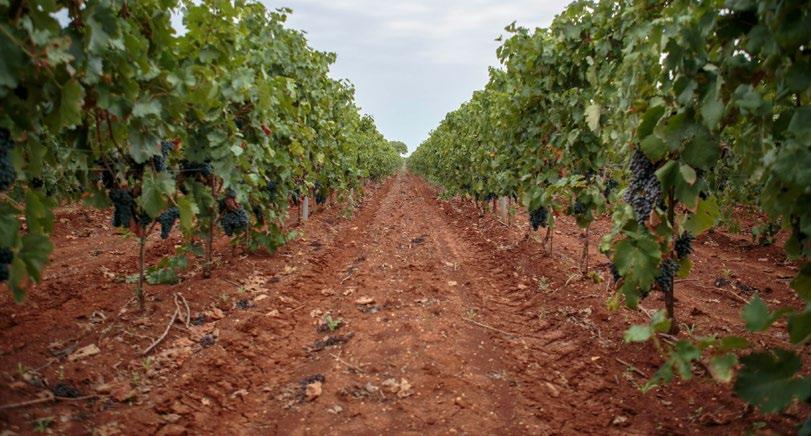
towards Mesagne, the baroque city with its alleys and its caparo stone churches worn by the sun and time. This is the ideal habitat of the main grape of the territory, the negroama ro. A grape variety common to many other Salento DOCs but that here the sands and the proximity of the sea - with the north wind that goes into the narrowest point of the Cana le d’Otranto and intensifies pressure creating a cooler and less humid mi croclimate - is made even more ele gant by giving the wines of this ap pellation particular finesse.
THE DIFFERENT TYPES OF WINE
The production regulation is rich and articulated: alongside the Rosso (which can also be Riserva) and Ro sato (which can also be sparkling), it also includes the Bianco which is mainly made with Chardonnay and Malvasia Bianca (in addition to Sau
vignon and Fiano), all present also in the sparkling version characterised by the fact that the vine that defines the name must represent at least 90% of the base.
The Brindisi Rosso, the most tradi tional blend, provides a minimum 70% of negroamaro and a balance that is traditionally entrusted to mal vasia nera. Other authorised grape varieties can also be included, such as Sangiovese and Montepulciano, Ottavianello and - last but not least! - susumaniello. Historically present in the area, this latter variety is today at the centre of a veritable rediscovery, to the point that the hectares have multiplied in recent years, and the variety now acquires an increasing weight in the blend, while the reg ulation also added a Brindisi Rosato Susumaniello and a Brindisi Rosso Susumaniello in which this grape is present at least 85%.
106
GAMBERO ROSSO
NOVEMBER-DECEMBER 2022
GAMBERO ROSSO X CONSORZIO TUTELA VINI BRINDISI E SQUINZANO
THE REDISCOVERY OF SUSUMANIELLO
«It is precisely with the rediscovery of susumaniello, of which only a few alberello mixed with negroamaro survived in the early 1990s - says An gelo Maci, President of the consor tium of Brindisi and Squinzano - that the game of the denomination was being played. Vineyards by the sea conditioned by coastal breezes, the presence of a particular grape like susumaniello, which is a natural com

Susumaniello. The ancient “basket grape” that gives new impetus to the future of wine Traditionally widespread in the Brindisi area, it is also known with the the names zingariello, cuccipaniello, cuccimaniello, somarello…Nicknames that give the idea of a robust and beautifully crisp grape variety that did not mash when transported in the baskets carried by donkeys: a so-called “bas ket grape.” As for the origin, today it is thought that it was probably a cross between garganega and uva sogra (i.e. sacred grape), an old table wine grape which was the ancestor of many varieties, although - like many southern red grapes - it shows a remarkable genetic affinity with San giovese. It is a variety that in the first ten years of life is very productive (as evidenced by one of its many synonyms, somarello nero meaning “black donkey”), but which then falls abruptly, producing less than a kilo of grapes per plant. For this reason, in times when production quantities and alcohol content counted, this grape gave way to more reliable and generous variet ies. Its bunches, with small berries and thick skin, rich in colour and tannin, give a structured wine, rich in fruit and spicy tones, an ideal complement in the blend with negroamaro. In purity it gives colourful and fragrant reds, rosé wines with great personality and, with the right ageing, comes to ex press great complexity and elegance.
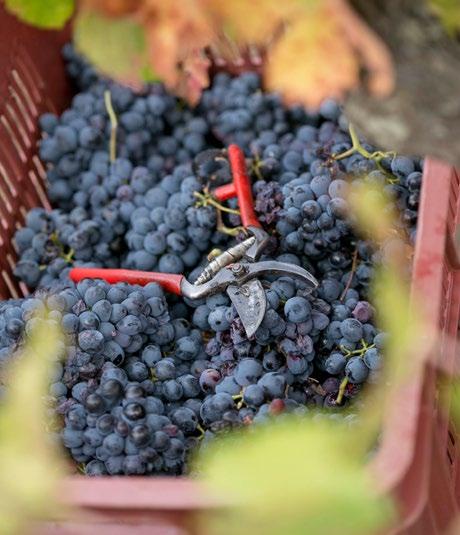
plement to negroamaro, like malvasia nera, make it an elegant, deep wine also suitable for ageing, but with a particular finesse and elegance that make it very pleasant even when young. Not to mention the excellent versions of Brindisi Susumaniello Ros so and Rosato in purity that many of the wineries in the area now produce. This characterises our denomination and differentiates it from our import ant regional neighbours.»
Today about 1.5 million DOC bottles
are bottled, but these numbers are destined to grow rapidly. If the Brindi si Rosso already in the 1980s had met with great international success and above all in the United States, it was thanks to the rediscovery of su sumaniello. The next few years will surely also be rich in success for the 16 producers associated with the Consortium (private wineries and cooperatives) that harvest the grapes of the 133 winegrowers in the area.

Tutela
Brindisi
NELL’AMBITO
“PROGRAMMA DI RIGENERAZIONE ECONOMICA, SOCIALE
AMBIENTALE DEL TERRITORIO JONICO-SALENTINO COLPITO DA XYLELLA FASTIDIOSA, RADICI VIRTUOSE”, FINANZIATA A VALERE SULL’AVVISO MIPAAF N.10900 DEL 17.02.2020 “CONTRATTI DI DISTRETTO XYLELLA”. 107 GAMBERO ROSSO
ROSSO X CONSORZIO TUTELA
NOVEMBER-DECEMBER 2022
Consorzio
Vini Doc Brindisi e Doc Squinzano
- Bastioni Carlo V – c/o CCIAA 0831652749 – vinibrindisisquinzanodoc.it INIZIATIVA REALIZZATA
DEL
E
GAMBERO
VINI BRINDISI E SQUINZANO
GENNARO DI PACE
BORN IN Castrovillari (CS)
RESTAURANT NAME Gennaro Di Pace
RESTAURANT CONTACTS Monforte d'Alba (CN) località Perno vicolo della Chiesa, 8 379 1130854 - gennarodipace.it
SOUS CHEF Alessandro Roagna
AGE OF SOUS CHEF 25 KITCHEN BRIGADE Gennaro Di Pace Alessandro Roagna IN THE DINING ROOM Rossana Gallo Isabella Ifrim SOMMELIER Rossana Gallo
LATEST ALBUM DOWNLOADED No Surprises by Radiohead
LATEST BOOK READ Sindone. Storia e leggenda di una reliquia controversa by Andrea Nicolotti
AGE 37
OWNER SEATS DIPENDENTE SEATS 20
MOST BELOVED INGREDIENT Extra virgin olive oil
LEAST LOVED INGREDIENT None
THE DISH OF A LIFETIME Spaghetti with extra virgin olive oil and parmigiano reggiano
GRAND MAESTRO WORSHIPED Massimo Bottura
MOST HIGHLY ESTEEMED PEER COLLEAGUE
I have respect for any of my passionate and devoted colleagues who spend long days in pursuit of their own perfection
RESIDENT IN Monforte d'Alba (CN)
PREVIOUSLY AT Osteria Porta del Vaglio in Saracena (CS)
MY IDEA OF CUISINE Direct, tasty and technically designed to valorise and enhance food without overdoing it
FAVORITE RESTAURANT ABROAD Maison Bras de Le Suquet in Laguiole (France)
ONE WINE ABOVE ALL OTHERS Moscato Passito di Saracena (CS)
HAD I NOT BEEN A CHEF… MUSICIAN
DISHES
Artichoke, lemon and allspice risotto Spaghetti with crusco peppers, anchovies and cuttlefish ink toast Beef stew with parmigiano and porcini mousse Ricotta, chocolate, cardamom and bergamot gel
by Clara Barra - photos by Marco Varoli
108 GAMBERO ROSSO RECIPES NOVEMBER-DECEMBER 2022
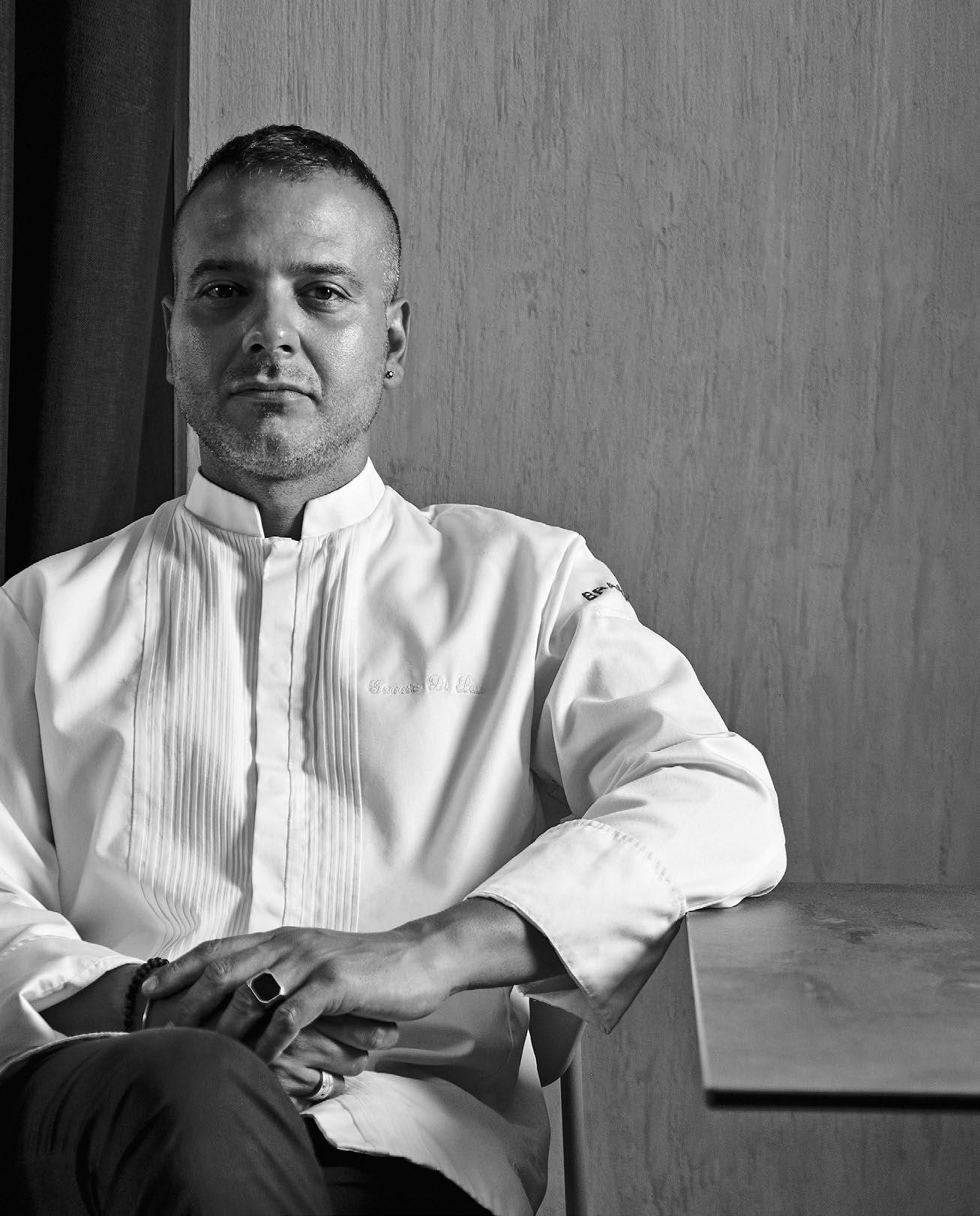
109 GAMBERO ROSSO GENNARO DI PACE NOVEMBER-DECEMBER 2022
Artichoke, lemon and allspice risotto

Clean and quarter the artichokes, season with salt and sauté in a pan with extra virgin olive oil and lemon juice.
For the broth, put the artichoke scraps (stems and outer leaves) and the water in a saucepan, then bring to a boil over low heat, skimming the surface from impurities.
For the lemon cream, pour the milk, lemon peel and soy sauce into a saucepan, then let it thicken.
Toast the rice dry with a pinch of thyme salt (prepared by blitzing table salt with thyme leaves), deglaze with the white wine and add the broth to the artichokes a little at a time until cooked.
Off the heat, mix the rice with butter and grated parmigiano, divide it into 4 flat plates, add the seared artichokes, pour the lemon cream and finish by sprinkling the allspice on top.
INGREDIENTS FOR 4 280 g
rice 6 artichokes 500 ml water 400 ml milk 300 ml artichoke broth 60 g butter 50 g Parmigiano Reggiano 30 ml soy sauce 30 ml white wine 30 g ground allspice 1 lemon 1 lemon rind extra virgin olive oil thyme salt
Carnaroli
NOVEMBER-DECEMBER 2022 110 GAMBERO ROSSO NOVEMBER-DECEMBER 2022
TORGIANO ORGANIC WINE
Where nature, sustainability, art and hospitality are inextricably linked. A small paradise, an authentic place in Torgiano, in the green heart of Italy, Umbria.

Spaghetti with crusco peppers, anchovies and cuttlefish ink toast
INGREDIENTS FOR 4 260 g spaghettoni 12 fresh sardines, eviscerated 300 ml fish broth (previously made) 100 g bread crumb 70 g crusco peppers, finely ground 30 ml red wine 20 ml extra virgin olive oil 10 g cuttlefish ink 1 garlic clove fresh basil salt
In a pan, heat the extra virgin olive oil, pour the ground crusco pepper, mix quickly, de glaze with the wine and add a ladle of fish broth, then cook for a few minutes.
Prepare a basil sauce by blanching the leaves, mixing it and filtering it, so as to obtain a smooth and shiny cream.
In a non-stick pan, toast the chopped bread crumb mixed with the cuttlefish ink until the mixture is crisp.
Cook the spaghetti in plenty of boiling salted water, drain when al dente, transfer to the crusco pepper sauce and mix well.
Serve by placing seared sardines in each bowl, a piece of crispy cuttlefish ink and the basil sauce with some of its leaves.
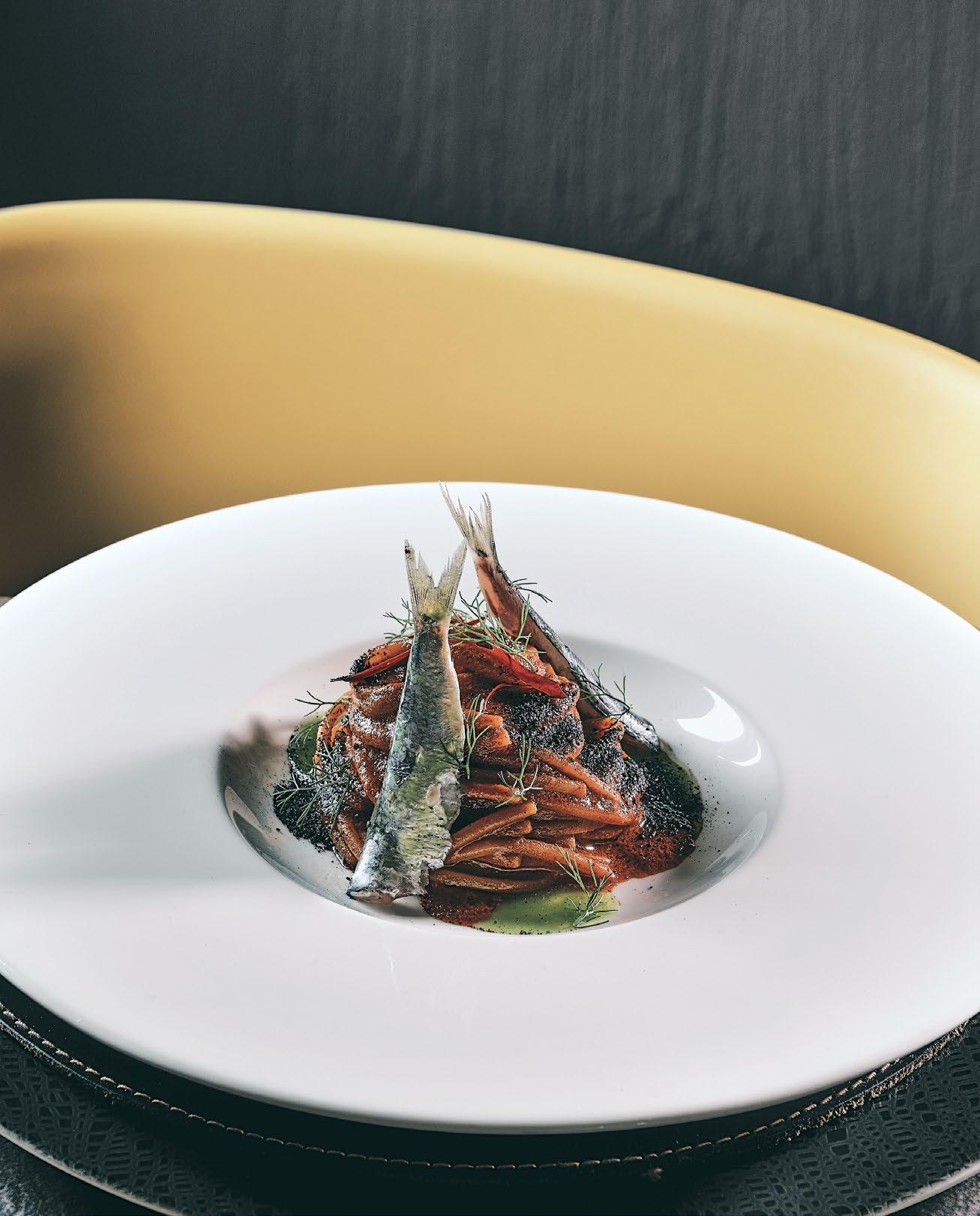
112 GAMBERO ROSSO RECIPES NOVEMBER-DECEMBER 2022 112 GAMBERO GENNARO DI PACE NOVEMBER-DECEMBER 2022
Beef stew with parmigiano and porcini mousse
INGREDIENTS FOR 4
Salt the meat, place in a container, cover it with the red wine, add coarsely chopped onion, celery and carrots, then leave it to marinate overnight. After this time, transfer the meat, wine and vegetables to a saucepan, then leave to cook over low heat for about 3 hours.
In a saucepan, heat the milk until boiling, turn off the heat, add the grated Parmigiano Reggiano, a pinch of pepper and salt, then pour the cream into a syphon and add 2 N2O charges.
Gently clean the porcini mushrooms, slice them, then quickly blanch them, season with salt and pepper.
Take the meat out of the container and slice it, blend the sauce and vegetables with an immersion blender, add the potato starch previously dissolved in water, finally filter every thing.
Arrange the slices of beef in the centre of each plate using a cylindrical plating mould, pour the gravy on top, syphon the Parmigiano Reggiano cream and finish with the seared por cini mushrooms.

1 kg “Cappello del
cut of beef 1 l red wine 300 ml milk 50 g Parmigiano
3 porcini
2 celery tops 2 carrots 1 onion 1 tsp
herb-scented
pepper NOVEMBER-DECEMBER 2022 113 GAMBERO ROSSO GENNARO DI PACE NOVEMBER-DECEMBER 2022
Prete”
Reggiano
mushrooms
potato starch
salt
and bergamot gel
Soak the isinglass in cold water. Pour the sifted ricotta, sugar, vanilla, chocolate and both citrus zest into a stand mixer, mix. Add the fresh cream and let it whip until the mixture is frothy and creamy at the same time.
Wring out the isinglass, melt it in a saucepan, then quick ly add it to the mixture, stirring from the bottom up, fi nally pour the cream into 4 moulds and let it rest in the refrigerator for at least 6 hours.
Mix the bergamot jam with the vinegar to obtain a thick and homogeneous cream. Un-mould the parfaits and garnish with the bergamot gel and fresh mint leaves.

INGREDIENTS FOR 4 250 g cow’s milk ricotta 125 ml fresh heavy cream 70 g sugar 25 g dark chocolate flakes 6 g isinglass 4 g cardamom, finely ground The peel of ½ a lemon The peel of ½ an orange ½ vanilla pod Fresh mint leaves For the bergamot gel 100 g bergamot jam 5 g apple cider vinegar
Ricotta, chocolate, cardamom
NOVEMBER-DECEMBER 2022 114 GAMBERO ROSSO LE RICETTE NOVEMBER-DECEMBER 2022
INFO: www.gamberorosso.it Roma incontra il Salice Salentino DOP “PROGRAMMA DI RIGENERAZIONE ECONOMICA, SOCIALE E AMBIENTALE DEL TERRITORIO JONICO -SALENTINO COLPITO DA XYLELLA FASTIDIOSA, RADICI VIRTUOSE", FINANZIATA A VALERE SULL'AVVISO MIPAAF N.10900 DEL 17.02.2020 “CONTRATTI DI DISTRETTO XYLELLA” 12 DICEMBRE 2022 ore 20:00 – 23:00 - Wine Tasting dedicato alle diverse espressioni di Salice Salentino ROMA | Palazzo Brancaccio
V8+ the many different souls of Prosecco Seven labels that encapsulate the Glera grape
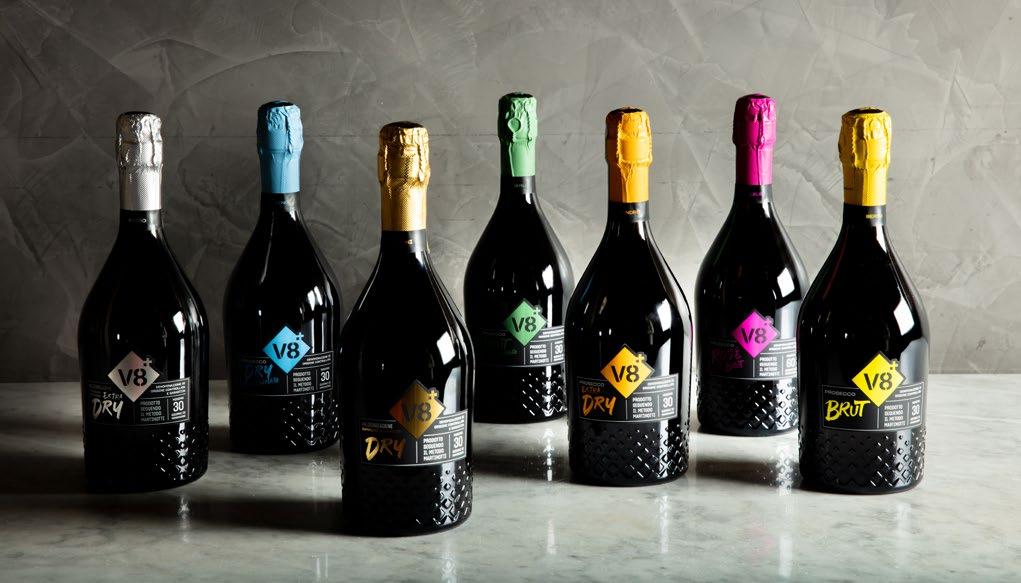
This is how V8+ presents itself as an informal, inclusive and democratic narrator of the most famous Italian bubbles in the world. The “Story teller of Prosecco” was born in 2010 from a history of disruptive values and passion, which translates into a line of versatile, fresh and drinkable references. The care in the cultiva tion of the vines and the talent of the team of young winemakerscapable of interpreting the territory and carefully selecting the yeastsalways give new scents and aromas that are sublimated in each label. The V8+ brand, which is part of the Tenute del Leone Alato proj
ect to bring Genagricola wines to the market by bringing together five wineries of excellence - is di vided into 7 labels characterised by 7 names which correspond to as many types of Prosecco: rang ing from the prestigious Cartizze Docg with the sophisticated Val dobbiadene Docg, passing through the vintages in the different dry and brut versions, up to the rosé type. There is something for all tastes. The “Storyteller of Prosecco” amus es and surprises its public with a vertical know-how in the category, telling in a spontaneous and orig inal way all the facets of this wine
and creating a direct dialogue with the consumer, suggesting the characteristics of the product that is about to be tasted. V8+ creates culture, speaking to its audience about the uniqueness and charm of a wine with a thousand facets: it all begins with the careful cultivation of the vineyards between the Vene tian and Friuli plains and the hills of Valdobbiadene, a UNESCO heritage site. Here, thanks to the articulat ed process of making spuman te wine, the Glera grape (itself a “poor” raw material) is ennobled, giving life to an authentic and versatile line of proseccos.
116 GAMBERO ROSSO GAMBERO ROSSO X TENUTE DEL LEONE ALATO NOVEMBER-DECEMBER 2022
Talking packaging that involves and informs




At the core of the V8+ project is the desire to involve consumers, in forming them. Hence the idea of resorting to a so-called “talking packaging”. As a matter of fact, the label indicates the days of fermen tation, the Martinotti production method, the type of Prosecco, and the sugar content. Furthermore, each of the seven references of the Brand correspond to a colour and a distinct name, which represents the wine’s personality, while each capsule contains a short sentence that includes the characteristics of each wine.
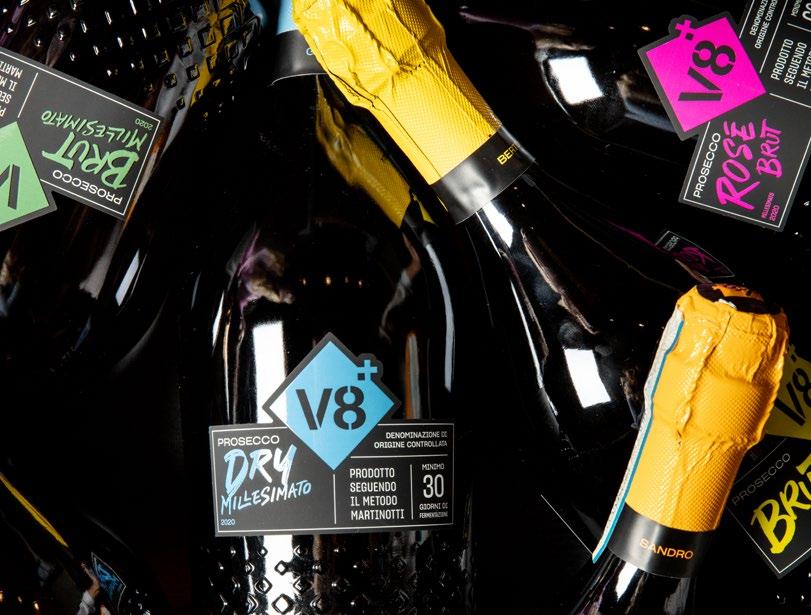
Storytelling that begins from the bottle
The narration of the product starts from the bottle. The new design, inaugurated last year, preserves the young and light-hearted spirit of the iconic V8+ bottles, but re news their look. The label traces the sparkling process with the Martinotti method, conceived in 1895 and also known as the “Charmat method” from the name of the inventor of its engineer ing, which involves the refer mentation of the wine in a tank. This is the “secret” to obtaining fresh and fragrant sparkling wines, thanks to a more effective extraction and preservation of aromas and flavours that best enhance the fruity and floral notes of the grapes, and that give the wine a unique and unmistak able perlage. Each label cor responds to a male first name, but also a distinct co lour palette and font.
V8+ –
Annone Veneto (VE) – fraz. Loncon – via Monsignor P.L. Zovatto, 71 0422 864 511 – proseccov8.com – fProseccoV8 – $ProseccoV8 leonealato.net – genagricola.it
117 GAMBERO ROSSO
ROSSO X TENUTE DEL LEONE ALATO NOVEMBER-DECEMBER 2022
GAMBERO

ANTEPRIMA PREVIEWS OF VINI D’ITALIA 2023. 38 LABELS TASTED IN 25 WINE BARS
The Anteprima previews of the Vini d’Italia 2023 guide is a Wine Tasting Tour organised by Gambero Rosso to present new wines to wine lovers and HoReCa operators waiting for the publication of the Vini d’Italia 2023 guide. The appointment - from September 12 to 17 - involved some of the most renowned wine shops in Italy reviewed on the Enoteche Guide to discover the new vintages of wines from 38 Italian wineries that presented with their tasting profiles by William Pregentelli - illustrations by Gaia Niola
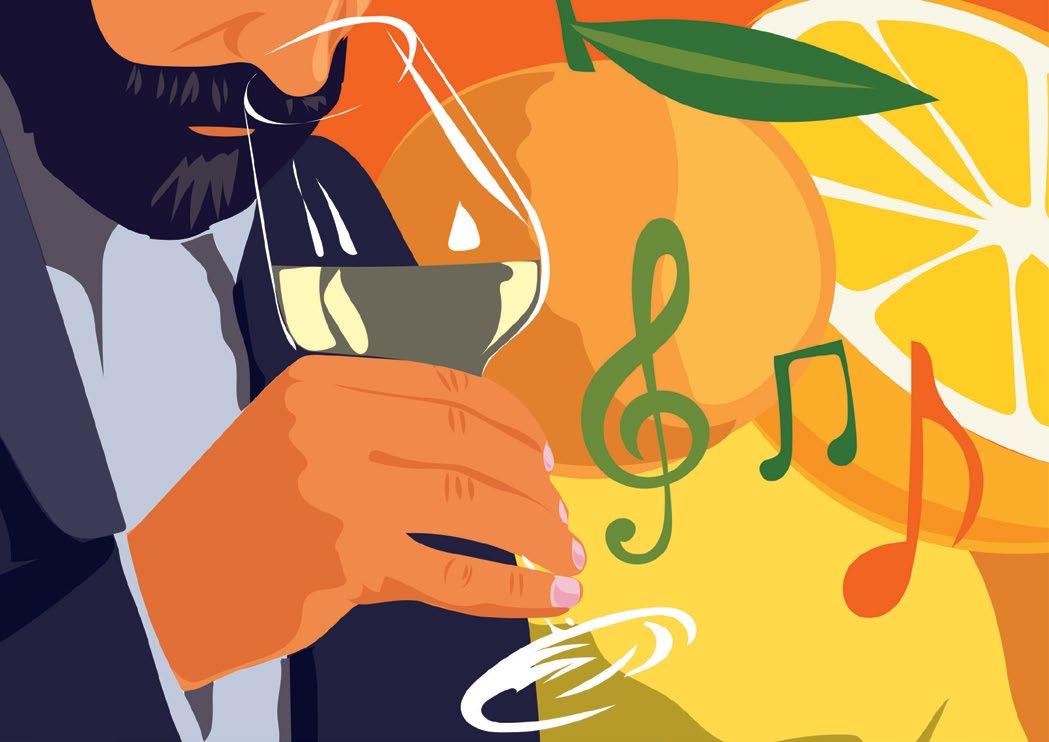
119 GAMBERO ROSSO ANTEPRIMA VINI D’ITALIA 2023 NOVEMBER-DECEMBER 2022
PIEDMONT
BATASIOLO
La Morra (CN) batasiolo.com
The range of plots available to the Dogliani family is impressive, counting on 120 hectares of vineyards and a rich heritage of crus among the most prestigious in the Langhe, in addition to the Boscareto Resort, which takes its name from the homonymous cru in Serralunga d’Alba, with spectacular views of the vineyards, to experience the estate at 360 degrees, ranging from luxury to gourmet dishes.
BAROLO BOSCARETO ‘16
Garnet red with brick reflections. It offers a nice complexity to the nose with aromas of blackber ry and black cherry on a toasted and spicy background. The sip is full-bodied, austere, with a nice acidic vein that supports it.
BERA
Neviglie (CN) bera.it
The Valter Bera winery, led together with his wife Alida and sons Umberto and Riccardo, is lo cated in Neviglie, but the vineyards are distributed over several areas, each with its own specific vocation, translating with great skill into the company range that gives graceful Moscato d’Asti to prominent mentions such as Rabajà, Basarin and Serraboella.
BARBARESCO SERRABOELLA ‘19
Garnet red in colour with orange reflections, this wine is intense, with notes of dry herbs, under growth and spices from which elegant floral and berry nuances emerge. A robust and enveloping wine, with a dense tannic texture and a long finish.
BONZANO VINI
Rosignano Monfer rato (AL) bonzanovini.it
Winery founded by the Bonzano family in the 1990s, a few kilometres from Casale Monferrato, in the province of Alessandria. In the approximately 20 hectares, the vines planted are barbera, grignolino, pinot noir, chardonnay and sauvignon, yielding a varied and high-level company range.
MONFERRATO ROSSO HOSTERIA ‘19
Ruby red colour with an elegant floral nose and fresh red fruit. On the palate it’s dynamic, fresh, with more mineral tones and returns compared to the scents perceived on the nose in the per sistent and clean finish. Excellent with pasta courses with meat sauce.
GOZZELINO
Costigliole d’Asti (AT) gozzelinovini.com
A centuries-old history binds the Gozzelino family to the lands that once belonged to the Asinari marquises, on the hills of Costigliole d’Asti. Five generations of wine producers who regularly offer genuine and territorial Barbera and Moscato wines.
BARBERA D’ASTI SUP. SERGIO ‘17
On the nose we perceive floral notes of rose, eucalyptus and small ripe red fruits, with a back ground of aromatic herbs and sweet, woody tones. On the palate it is fresh and the sip reveals good structure, excellent to pair with red meat dishes or aged cheeses.
GUASTI CLEMENTE
Nizza Monferrato (AT) guasti.it
The winery founded in 1946 by Clemente Guasti today has his sons Andrea and Alessandro running the business continuing their father’s work with the same dedication and philosophy. Alongside a varied interpretation of Barbera, the company’s range offers a scope of red and white wines including Barolo and Barbaresco.
BARBERA D’ASTI SUP. BOSCHETTO VECCHIO ‘17
Intense ruby red. It has notes of cherry, currant and raspberry on the nose along with hints of vanilla and sweet tobacco. Fresh and with a good body, it is an excellent wine to pair with grilled or roasted red meats.
120 GAMBERO ROSSO TOP CHARTS NOVEMBER-DECEMBER 2022
PIEDMONT
MONTALBERA
Castagnole Mon ferrato (AT) montalbera.it
The ampelographic platform followed by the Morando family is very composite: viognier, gri gnolino and barbera come flanked by nebbiolo, moscato and chardonnay, coming from the fam ily’s different estates. The heart of the production stars above all Ruché di Castagnole Monferra to, declined in various versions.
RUCHÉ DI
LOMBARDY
BOSCO LONGHINO
Santa Maria della Versa (PV) boscolonghino.it
CASTAGNOLE
MONFERRATO LACCENTO ‘21
Ruby red with violet reflections and a nose that boasts clear balsamic hints of red berries and pine resin. The palate is distinct, pleasant, with good acidity and fruit, a sinuous and enveloping sip where the sensations perceived on the palate and persistent finish return.
Set in Oltrepò Pavese, the winery was founded by Marco Faravelli in 2008 and is run together with his wife Danila and their children Massimiliano and Greta. The production focuses on white and red wines typical of the area without forgetting - of course - the sparkling wine department..
OP M. CL. PINOT NERO PAS DOSÉ CASTO ‘18
Straw yellow with golden reflections. The floral and fruity notes come in addition to fragrant ones of bread crust and minerality. Beautifully fresh with a creamy and fine froth and a finish that turns towards citrus.
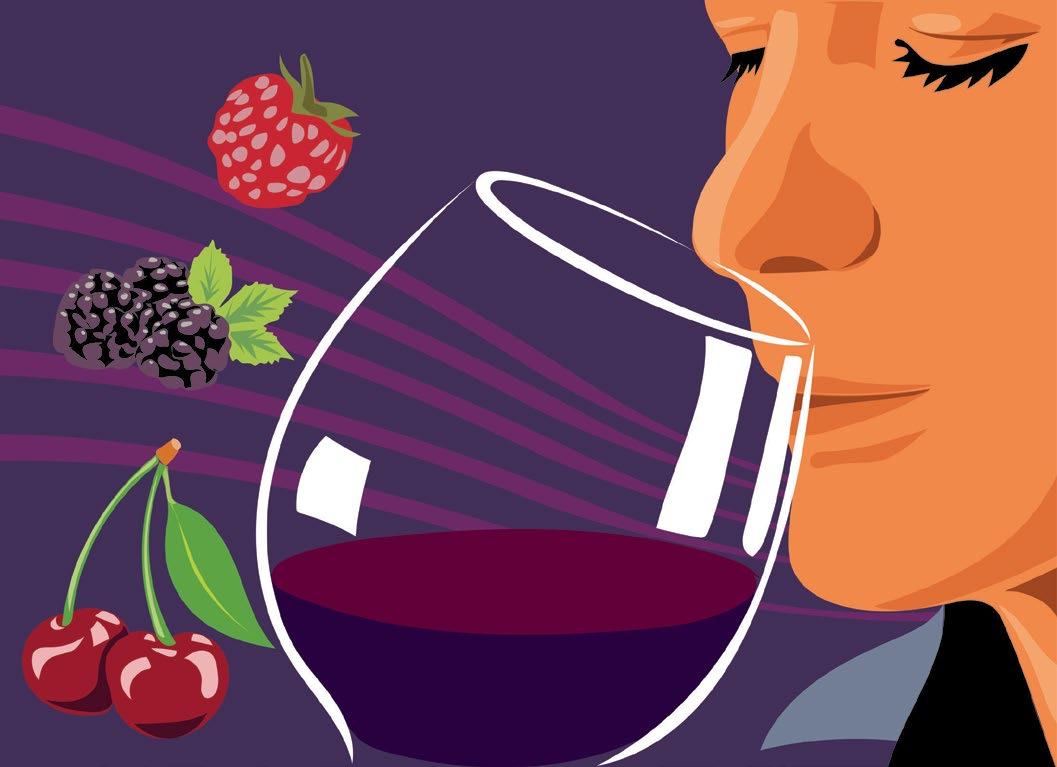
121 GAMBERO ROSSO ANTEPRIMA VINI D’ITALIA 2023 NOVEMBER-DECEMBER 2022
LOMBARDY
GIORGI WINES
Canneto Pavese (PV)
giorgi-wines.it
Fabiano Giorgi is the face behind this company for years committed to reconciling large numbers and quality, with often remarkable results. By his side is his sister Eleonora, his wife Ileana and his father Antonio, who - together with his brother Gianfranco - set down the initial foundations.
OP M. CL. PINOT NERO BRUT 1870 ‘18
Intense straw yellow with golden reflections and with a persistent, fine perlage. On the nose are sweet notes of vanilla and apricot from which hints of sage and mint emerge which are the prelude to a sip that has strength, but does not lack pleasant softness. To be paired with steak tartare or raw seafood.
CANTINA MASSUSSI
Iseo (BS) massussi franciacorta.it
Luigi Massussi runs the family business by taking care of the two hectares of the owned vine yards farmed under organic regimen. The winery, founded in 1985, from a range that included white and red wines now focuses exclusively on the production of quality Franciacorta.
EXTRA BRUT ET. ROSSA
Intense straw yellow. The clear hints of white and citrus flowers stand out, accentuating the lively freshness of the sip which corresponds with the scents perceived on the nose. Closes on fragrant notes of almond.
MONZIO COMPAGNONI
Adro (BS) monzio compagnoni.org
Founded by Marcello Monzio Compagnoni in 1994, today the winery is headed by his brother and co-founder of Cantina Giovanni. 21 hectares in total cultivated mainly with chardonnay, and smaller amounts of pinot nero, which allow for a production of about 220,000 bottles per year.
FRANCIACORTA BRUT CUVÉE ALLA MODA
Beautiful straw yellow with light green reflections. The floral scents and the typical notes of bread crust stand out, with fruity nuances of peach and apple. A well-balanced, mineral and gritty sip makes the wine an excellent choice to pair with seafood appetisers.
VENETO
COLLALTO
Susegana (TV) cantine-collalto. it
The history of the winery began with a donation made by Berengario II close to the year 1000. Today at helm is Isabella Collalto de Croÿ, she manages the vineyards that grow on the slopes of the Treviso hills. The glera grape is the undisputed queen of this portion of Veneto alongside international varieties.
CONEGLIANO VALDOBBIADENE RIVE DI COLLALTO BRUT ISABELLA
NARDELLO
Monteforte d’Alpone (VR) nardellovini.it
‘20
With a fine and persistent perlage, it opens on the nose with floral and fruity notes followed by fragrant and mineral notes. On the palate the sip is pleasant with a creamy effervescence and a persistent finish. Ideal with fresh cheeses or mixed fish fry.
The winery of Federica and Daniele Nardello extends for 16 hectares along the southern slope of the classic Soave area, on the Zoppega and Tondo mountains. The absolute protagonist of this scenario is Garganega, a grape symbol of the territory that the company transforms into a well-defined range of Soave with great aromatic clarity and a rich, mature profile.
SOAVE CL. MONTE ZOPPEGA ‘19
Intense and clear notes of yellow pulp fruit are immediately evident on the nose, then more sub tle notes of white flowers and mineral nuances emerge. On the palate it is soft and enveloping, with a beautiful structure and a finish in which the sweet notes perceived on the nose return.
122 GAMBERO ROSSO TOP CHARTS NOVEMBER-DECEMBER 2022
VENETO
TENUTA SANT’ANTONIO
Colognola ai Colli (VR) tenuta santantonio.it
The winery of the Castagnedi brothers develops along the ridge that separates the valleys of Mezzane and Marcellise, with vineyards that also extend towards the east, towards the Illasi valley. Viticultural production is aimed at reducing the environmental impact and even in the cellar the presence of chemicals is limited as much as possible.
AMARONE DELLA VALPOLICELLA CAMPO DEI GIGLI ‘16
Impenetrable ruby red colour. Notes of ripe red fruit blend with spicy tones of licorice and black pepper. Enveloping and austere, the sip is made even more full-bodied by the dense tannic tex ture.
ALTO ADIGE
PETER ZEMMER
Cortina sulla Strada del Vino (BZ) peterzemmer.com
Peter Zemmer’s winery is located in Cortina, the only Alto Adige town lying on the plain, on the valley floor of the river Adige. Extending over many hectares, the vineyards unfold in several di rections, climbing up the hills to reach an altitude of almost 1,000 metres. Among the cultivated varieties we find pinot grigio, chardonnay, müller thurgau and pinot nero.
A.A. PINOT GRIGIO GIATL RIS. ‘19
The Pinot Grigio Giatl ‘19 lends to the nose intense notes of ripe pear along with dried flowers and almonds. On the palate it expresses all the warmth of the production area, with a warm, enveloping profile and excellent expression.

123 GAMBERO ROSSO ANTEPRIMA VINI D’ITALIA 2023 NOVEMBER-DECEMBER 2022
ALTO ADIGE
KELLEREI MERAN
Marlengo (BZ) kellereimeran.it
The winery holds together nearly 400 members who cultivate small patches of land distributed from Lana to Val Venosta, from the valley floor up to an altitude of 1,000 metres. The winery’s production is focused on enhancing the territories of origin and the different varieties from which the grapes come.
A.A. PINOT BIANCO TYROL RIS. ‘20
This is a Pinot Bianco of great aromatic delicacy, where white fruit seems to hide behind the floral and almond notes. In the mouth, on the other hand, is a full and consistent wine, perfectly supported by a precious acidic boost.
FRIULI VENEZIA GIULIA
LIS NERIS
San Lorenzo Ison tino (GO) lisneris.it
The winery of Alvaro Pecorari today represents one of the most important regional realities, and beyond regional. The vineyards are located in four distinct sites: Gris, Picol, Jurosa and Neris. Alvaro has enhanced the peculiarities of each individual territory, managing to establish a com pletely personal style that receives critical acclaim.
FRIULI
TENUTA STELLA
Dolegna del Collio (GO) tenutastella collio.it
ISONZO LIS ‘18
An elegant nose with notes of Mediterranean maquis, white flowers and sweet fruity nuances. The sip has strength and dynamism with a background of minerality that gives complexity and breadth.
Tenuta Stella, founded in 2010 by Sergio Stevanato, extends in the highest part of the Collio, in the Dolegna area in the locality of Scriò, where the steep slopes of the hills guarantee a particular microclimate and ideal sun exposure.
COLLIO
MALVASIA ‘20
Bright golden yellow. The nose has notes that range from dried flowers to citrus sensations of grapefruit and orange, passing through toasted and spicy hints. Freshness and flavour are in good balance while the sip is enveloping with a long finish. Try it with a seafood risotto.
EMILIA ROMAGNA
CELLI VINI
Bertinoro (FC) celli-vini.com
The winery was founded in 1963 in Bertinoro, in the province of Forlì. The hectares of vines are divided into different plots including Tenuta Maestrina, Tenuta La Massa and Campi di Braccia no. The range includes a wide variety of white wines and various red labels.
ROMAGNA
ALBANA SECCO I CROPPI ‘21
Straw yellow with golden reflections. The nose perceives sweet notes of hawthorn, apricot, cit rus and nuances of aromatic herbs. Fresh and salty, the sip is well relaxed with a nice mineral background, with a return of citrus notes and Mediterranean herbs. Try it with grilled fish.
CANTINA LURETTA
Gazzola (PC) luretta.com
The company covers 50 hectares and is based in the Momeliano Castle, in the province of Piacen za. Felice Salamini and his son Lucio, nurturing a strong respect for the territory and the vine yards, have chosen to farm with organic regimen. Among the grapes we find barbera, bonarda, pinot nero, chardonnay and malvasia aromatica di Candia.
PRINCIPESSA M. CL.
A Classic Method with a fine and persistent perlage that smells of citrus, ripe white pulp fruit and white flowers. The mouth is fresh, taut, with a nice flavour that gives support and character to the sip. Ideal to accompany salumi or seafood appetisers.
124 GAMBERO ROSSO TOP CHARTS NOVEMBER-DECEMBER 2022
THE ENOTECAS THAT HOSTED ANTEPRIMA
Anteprima previews of Guida Vini d’Italia 2023 is an initiative promoted by Gambero Rosso to enhance the precious Italian wine heritage and bring the general public closer to quality drinking. The event involved 25 enoteca wine bars in the main Italian cities and ended on September 17th. Here are the enotecas and cities that hosted the event:
Enoteca Giò Perugia – enotecagio.it
Enoteca La Cantina Asti – enotecalacantina.eu
Lucantoni Roma – enotecalucantoni.it
Scagliola Napoli – enotecascagliola.com
Wineria Milano – wineria.it
Enoteca Della Foce Genova – enotecadellafoce.com
Rossorubino Torino – rossorubino.net
Enoteca Anelli Brindisi – anellienoteca.com
Enoteca Continisio Napoli – enotecacontinisio.it
Vino Veritas Palermo – vinoveritasenoteche.it
Enoteca Buccone Roma – enotecabuccone.com
Enoteca Vignoli Firenze – enotecavignoli.com
Enoteca Alessi dal 1952 Firenze – enotecaalessi.it
Enoteca Grado 12 Trento – enotecagrado12.it
Wine&More Lecce – wineemore.it
Enoteca Italiana Bologna – enotecaitaliana.it
Casa Del Barolo Torino – casadelbarolo.com
Cucina.Eat Cagliari – shopcucina.it
Osterie Moderne Campodarsego (PD) – osteriemoderne.it
Enoclub Milano – enoclubmilano.com
Trimani Roma – trimani.com
De Pascale Avellino – depascale.it
Enoteca Vanni Lucca – enotecavanni.com
Eurodrink Wine Bordighera – eurodrink.it
L’enoteca di Giuli Pasquale Porto S. Giorgio (FM) – f L’Enoteca di Giuli Pasquale
125 GAMBERO ROSSO ANTEPRIMA VINI D’ITALIA 2023 NOVEMBER-DECEMBER 2022
EMILIA ROMAGNA
MOSSI 1558
Ziano Piacentino (PC) loc. Albareto mossi1558.com
The winery is located in Ziano Piacentino, well positioned in the hills of Emilia-Romagna. Found ed in 1558, since 2014 it has passed under the careful guidance of the Profumo family which cul tivates traditional local grape varieties such as barbera, croatina, ortrugo and malvasia di Candia.
GUTTURNIO IMPETUOSO ‘19
On the nose there are spicy notes of black pepper and fruity cherry ones that are also found on the palate. Smooth, with a good body designed by evident but not aggressive tannins. To be paired with aged cheeses and red meats.
IL POGGIARELLO
Travo (PC) fraz. Scrivellano di Statto ilpoggiarello vini.it
CANTINA VALTIDONE
Borgonovo Val Tidone (PC) cantinavaltidone. it
Il Poggiarello has been owned by the Ferrari and Perini families for over 30 years and is located in the municipality of Travo, a wine-growing district in the Piacenza area. The company range is varied: Gutturnio and Cabernet Sauvignon and Pinot Nero wines for the reds and Ortrugo and Malvasia di Candia for the whites.
GUTTURNIO SUP. VALANDREA ‘20
Beautiful intense ruby red. The nose offers hints of plum, undergrowth and traces of licorice. On the palate it is full, rich, lively with a nice tannic texture that acts as a framework for the sip. Try it with soups, grilled red meats or aged cheeses.
Founded in 1966, this winery has grown in numbers (from 16 to 220 members), in size and, es pecially in recent years, in the desire to do more and better, focussing on the selection of the best grapes to obtain traditional wines of solid depth in the 50 Vendemmie line, from vines planted in the 1960s.
COLLI
VENTIVENTI
Medolla (MO) ventiventi.it
PIACENTINI MALVASIA FERMO 50 VENDEMMIE ‘21
Golden yellow. Intense nose with elegant floral and fruity notes. On the palate it shows off a nice freshness that supports the sip together with a sapidity that gives complexity and drinkability.
VentiVenti is the Razzaboni family’s dream come true. Vittorio, former owner of the Il Borghetto farm, with his sons Riccardo, Andrea and Tommaso has created a beautiful wine-growing reality. The name (2020) is dedicated to the year of completion of the winery and the start of operations of the winery.
MODENA LAMBRUSCO VENTIVENTI ROSÉ M. CL. BRUT ‘20
Of a beautiful soft pink. It smells of wild strawberry, rose petals with a background of dried fruit, while the mouth is traversed by a subtle acidic vein that makes the sip fresh and fragrant and a carbonation lending flavour.
TUSCANY
CERALTI
Donoratico (LI) ceralti.com
Iacopo Alfeo’s family counts on ten hectares of vineyards, all certified organic, in the Bolgheri area. The vineyards are located mainly on the hills between Castagneto Carducci and Bolgheri which give life to wines with a strong territorial imprint.
BOLGHERI
SCIRÈ ‘21
Beautiful intense ruby red. Characterising the nose are cherries, strawberries and plums with a tinge of tobacco. A Bolgheri that shows off a warm and structured palate with a freshness that makes the sip lively and smooth.
126 GAMBERO ROSSO TOP CHARTS NOVEMBER-DECEMBER 2022
TUSCANY
ROCCAPESTA
Scansano (GR) roccapesta.com
Roccapesta is an important reality of the Maremma wine scene. Owned by Alberto Tanzini who has focused on the potential of the territory by producing Sangiovese-based wines for multifac eted and complex labels that speak of tradition and quality.
MORELLINO DI SCANSANO ROCCAPESTA ‘20
Intense ruby red. A pure Sangiovese that expresses notes of black cherry, blackberry with floral nuances and sweet spices. Balanced and fresh, on the palate the hints of cinnamon and pepper return, veering towards bitter almond in the clean and persistent finish.
TENUTA DI SESTA
Castelnuovo dell’Abate (SI) tenutadisesta.it
The winery is run by Francesca and Andrea Ciacci, the children of Giovanni, who in the wake of family tradition produce Brunellos of great elegance, long-lived and absolutely consistent with the terroir of the Sesta area, on the southern side of Montalcino.
BRUNELLO DI MONTALCINO ‘17
Intense and refined on the nose, it shows off an intriguing spicy component that’s well blended with floral and fruity notes, and made more complex by lashings of tobacco, licorice and mint. The drink is austere, the tannins are dense and vital, with a long and relaxed finish. To pair with roasts or braised meats.
CANTINAMENA
Lanuvio (RM) fraz. Campoleone cantinamena.com
Eighteen hectares of organically farmed vineyards are the starting point of this winery located south of Rome, in Campoleone di Lanuvio. Several grape varieties, including Cesanese, Mon tepulciano, Merlot and Cabernet Sauvignon, Manzoni Bianco and Malvasia del Lazio crossbreed, for a rich and varied company range.
ARCANA ‘21
Ruby red with purple reflections. On the nose there are intense notes of black cherry and plum that lean on a spicy background. The wine is full and enveloping, with good freshness and a fine and well integrated tannic texture.
FRATELLI BARBA
Pineto (TE) fratellibarba.it
Giovanni, Domenico and Vincenzo Barba, who continue the work of their father Luigi which started in the 1950s, own a great agricultural reality in Abruzzo. Together they work on 62 hect ares of vineyards planted with native grape varieties that transform into wines with a modern and expressive imprint of the territory.
MONTEPULCIANO D’ABRUZZO COLLINE TERAMANE YANG
CANTINE CATABBO
San Martino in Pensilis (CB) catabbo.it
‘20
On the nose are soot, crisp black fruits and sweet spices on an agile and snappy mouth, without tannic overtones. The freshness of the finish makes it a wine that invites another sip. To be paired with game dishes.
Winery started in the 1990s by Vincenzo Catabbo on the hills of San Martino in Pensilis. The winery has three productive nuclei: the Contrada Petriera estate, Tenute al Convento and Tenuta Calvario. A total of 40 hectares of which 13 are dedicated to Tintilia, a native grape variety of the region.
TINTILIA DEL MOLISE S ‘18
Intense ruby red. The nose offers aromas of red berries, black pepper and menthol, aplus floral nuances. A soft sip, with well-integrated tannins, characterises the palate in which notes of red fruits in jam and bitter cacao emerge. Ideal with meat stews and aged cheeses.
127 GAMBERO ROSSO ANTEPRIMA VINI D’ITALIA 2023 NOVEMBER-DECEMBER 2022
ABRUZZO MOLISE LAZIO
CAMPANIA
MARISA CUOMO
Furore (SA) marisacuomo.com
The grapes are grown on terraces supported by dry stone walls on the bends of the Amalfi Coast, where mechanisation is practically impossible. The grape varieties grown here are all indigenous and range from fenile, ginestra, falanghina and biancolella for white wines, to piedirosso and Aglianico for reds.
COSTA D’AMALFI FURORE BIANCO ‘21
ale straw yellow. Mediterranean hints, together with citrus sensations and white flowers stand ing out on the nose. On the palate the freshness blends with a marked saltiness and a long and satisfying finish.
MASSERIA FRATTASI
Bonea (BN) masseriafrattasi. it
The company is housed in an ancient building dating back to 1779 and is run by Pasquale Cle mente, who has inherited and continues today the winemaking tradition of the Cecere family. From the vineyards, which extend for a total of 30 hectares, an ambitious corporate range is produced that is based on native grape varieties.
FALANGHINA DEL SANNIO TABURNO V. T. DONNALAURA
‘21
This Late Harvest is very rich on the nose. It smells of jasmine, saturn peaches and aromatic herbs. The palate is soft, with controlled acidity, but which balances the sweet notes perceived on the nose.
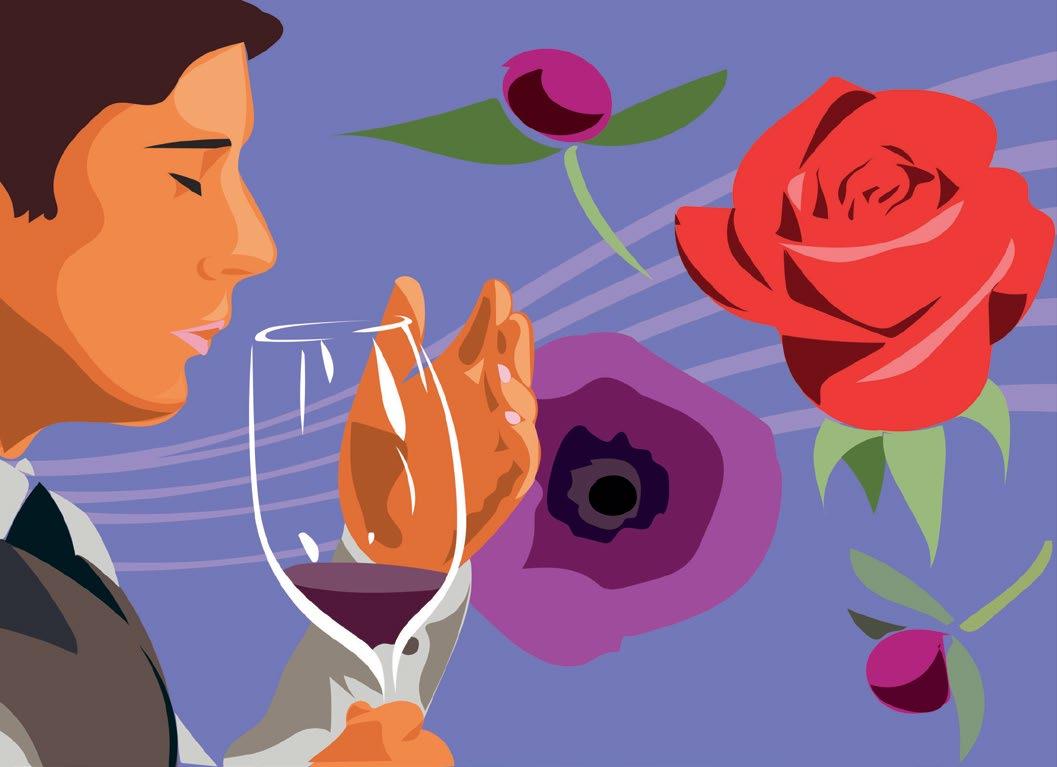
128 GAMBERO ROSSO TOP CHARTS NOVEMBER-DECEMBER 2022
SICILY
SARDINIA
DONATO D’ANGELO
Rionero in Vulture (PZ) donatodangelo.it
The hectares of vineyards are concentrated between the municipalities of Barile, Ripacandida and Maschito, the “historic” area of the Vulture. An ambitious project by Donato d’Angelo and his wife Filomena Ruppi, focussed on Aglianico, but which also includes small plots of interna tional grapes.
AGLIANICO DEL VULTURE CALICE ‘20
A sumptuous bouquet that from the just ripe red fruit turns to floral notes, lavender and Medi terranean maquis, and introduces a slender and extraordinarily fresh palate that closes long on hints of fruit and bay leaves.
CANTINA ANTONELLA LOMBARDO
Bianco (RC) antonella lombardo.com
Antonella Lombardo personally tends to both the vineyard and the cellar, at the moment the winery has five hectares of organically grown vines. An expressive range made up of a few, but well-kept labels that derive from native grapes such as gaglioppo, nerello mascalese, calabrese nero and greco bianco.
PI GRECO ‘21
Profuma di frutta a polpa gialla e ginestra con sfumature agrumate, di miele e di erbe aromatiche. Al palato è saporito e minerale, con un finale persistente in cui tornano le note agrumate e di stampo mediterraneo. Da abbinare a piatti di pesce alla griglia o formaggi freschi.

129 GAMBERO ROSSO ANTEPRIMA VINI D’ITALIA 2023 NOVEMBER-DECEMBER 2022
GAMBERO ROSSO www.gamberorosso.it

SENIOR EDITOR Lorenzo Ruggeri
PHOTO EDITOR Rossella Fantina
LAYOUT
Chiara Buosi, Maria Victoria Santiago
CONTRIBUTORS
Clara Barra, Federico Silvio Bellanca, Giuseppe Carrus, Gianni Fanrizio, Paola Mencarelli, William Pregentelli, Marco Sabellico
PHOTOGRAPHS AND DRAWINGS
Gaia Guarino, Gaia Niola, Andrea Ruggeri, Marco Varoli
GR USA CORP PUBLISHER & PRESIDENT Paolo Cuccia
Advertising Class Pubblicità SpA Milano, Via Marco Burigozzo, 5 - tel. 02 58219522 For commercial enquiries: kanchieri@class.it
Advertising director Paola Persi email: ufficio.pubblicita@gamberorosso.it
Gambero Rosso and are registered trademarks belonging to Gambero Rosso S.p.A. GAMBERO ROSSO is a Registered Trademark used under license by GR USA CORP Copyright by GAMBERO ROSSO S.P.A. 2022. All rights reserved. Nothing may be reprinted in whole or in part without written permission from the publisher. GR USA CORP is not responsible for loss, damage, or any other injury as to unsolicited manuscripts, unsolicited artwork or any other unsolicited materials. november-december 2022
a www.gamberorossointernational.com ✉ international@gamberorosso.it f GamberoRossoInternational
















 Francesca Ciancio
Francesca Ciancio
















 SEASONAL COCKTAIL by Paola Mencarelli
Filippo Borghi, Bar del Posta, Hotel de la Poste, Cortina d’Ampezzo
SEASONAL COCKTAIL by Paola Mencarelli
SEASONAL COCKTAIL by Paola Mencarelli
Filippo Borghi, Bar del Posta, Hotel de la Poste, Cortina d’Ampezzo
SEASONAL COCKTAIL by Paola Mencarelli




























 Gregorio
Sorbo
Gregorio
Sorbo

 by Giuseppe Carrus, Lorenzo Ruggeri and Marzio Taccetti
by Giuseppe Carrus, Lorenzo Ruggeri and Marzio Taccetti





























































 words by Federico Silvio Bellanca and Paola Mencarelli
words by Federico Silvio Bellanca and Paola Mencarelli















 Laura Marnich , Ergo Bar
Laura Marnich , Ergo Bar














 Francesco Galdi , Gruppo Buddha Bar
Francesco Galdi , Gruppo Buddha Bar





























 William Pregentelli
William Pregentelli




































 Ancient regulations, modern consortium. The giant steps of a great wine area
Ancient regulations, modern consortium. The giant steps of a great wine area















































